Matador Original Series
11 awesome itineraries for your trip through the alps.
E urope’s highest mountain range — spanning a whopping 750 miles — naturally holds every kind of adventure one could possibly think of. The Alpine valleys of Germany, Austria, and Switzerland still hide idyllic villages where cheesemaking and woodworking reign supreme. Bustling cities like Zurich, Salzburg, and Munich mean world-class experiences at the foot of Mother Nature’s best work of European art.
But keep in mind that a trip to the Alps is all about who you are. These mountains, villages, and cities can hold whatever you want them to hold — which itinerary will you choose?
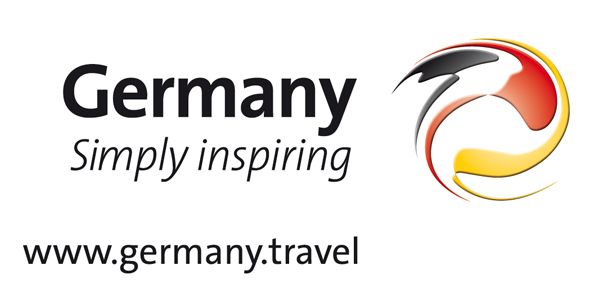

— 1 — Town and Country

T ouch down in any buzzing Alpine city and you’ll be surrounded by snowcapped Alps, teeny villages, and bucolic landscapes spreading out into the horizon. This is two very different worlds in one magnificent trip.
Start off in Zurich’s car-free old town , walking the Limmatpromenade, and staying up till morning taking in the city’s world-class nightlife. Relish the music, because soon you’ll be in quiet Bregenzerwald, Austria. Twelve villages make up this portal back into a simpler time, and centuries-old farmhouses and cheesemakers set the pace. Going on foot is the best way to soak in the long-lost architecture and serenity of this almost-off-the-map spot.
Alternatively, make a beeline straight for Germany, where you can contemplate the silence filling the depths of Schwarzwald , or the Black Forest. And yet you’re still not far from 3-star Michelin restaurants and water-filled adventures — Lake Titisee, the largest lake in this untamed wilderness, is right here, too (be sure to dip your toes).
— 2 — 6 Peaks in 5 Days
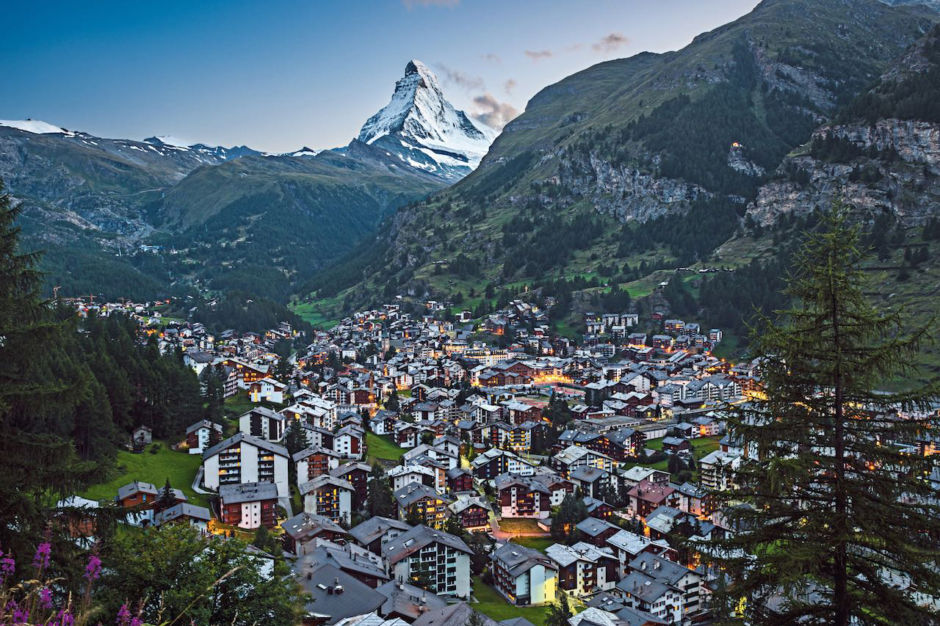
T he Alps aren’t meant to only be enjoyed from the bottom. But if this is your itinerary, odds are you already know that.
First up — Zermatt. The city lies at the foot of the most iconic Alpine mountain, the Matterhorn, and it’s entirely car-free save for the cable car you can take to the highest mountain station. Take a breather at Zumstein’s farm in Gstaad to fuel up for your next feat: the Wildspitze glacier in Ötztal, Austria (a 12,369-foot peak piercing the sky). And as you depart for the next leg of your journey, look around you. You won’t want to miss the Jungfrau Region and the famous Eiger mountain.
Now, it’s time to head to Garmisch-Partenkirchen to summit the Zugspitze , Germany’s highest mountain. Or stay in Austria to visit National Park Hohe Tauern — there are over 200 peaks around 10,000 feet, but the Großglockner stands guard over them all at 12,461.
Finishing up in Berchtesgaden, Germany, take it easy on a ride up the Predigtstuhlbahn — the world’s oldest cable car — to be lifted a mile in just eight minutes.
— 3 — City Break
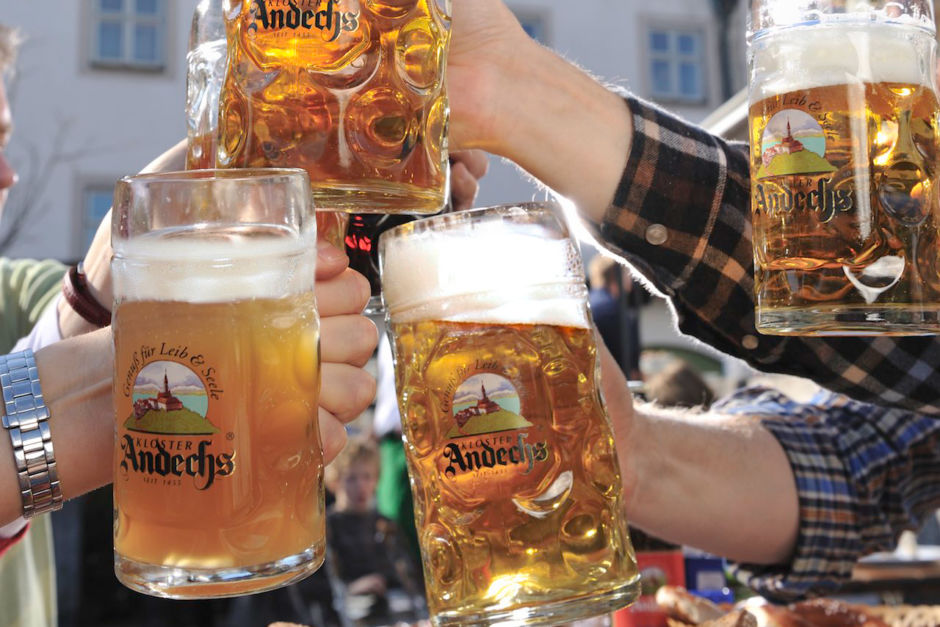
M ove over Paris, London, and Rome — some of Europe’s best cities are hiding in the Alps.
Start off in Munich however you want — beer gardens, restaurants tucked into cobbled alleyways, open-air markets — but end with a climb up 299 stairs to the top of the Church of St. Peter, taking in the views of the Alps in the not-so-distance.
Then it’s off to either Innsbruck or Salzburg. The former, Innsbruck, is where you can go to recharge in the mountain air. Take in the views from the mountains on the cable car and be sure to celebrate the day with nothing other than Tirolean smoked bacon . The latter, Salzburg, is a UNESCO World Heritage Site masquerading as a city, where every corner is steeped in history (and nowhere is that more obvious than wandering the fortress overlooking the Baroque town). Grab a Fürst Mozartkugeln — a ball of pistachio cream encased in nougat and a chocolate shell — before heading to the Walk of Modern Art , escorting you right back to present day.
— 4 — The Alpine Tasting Menu
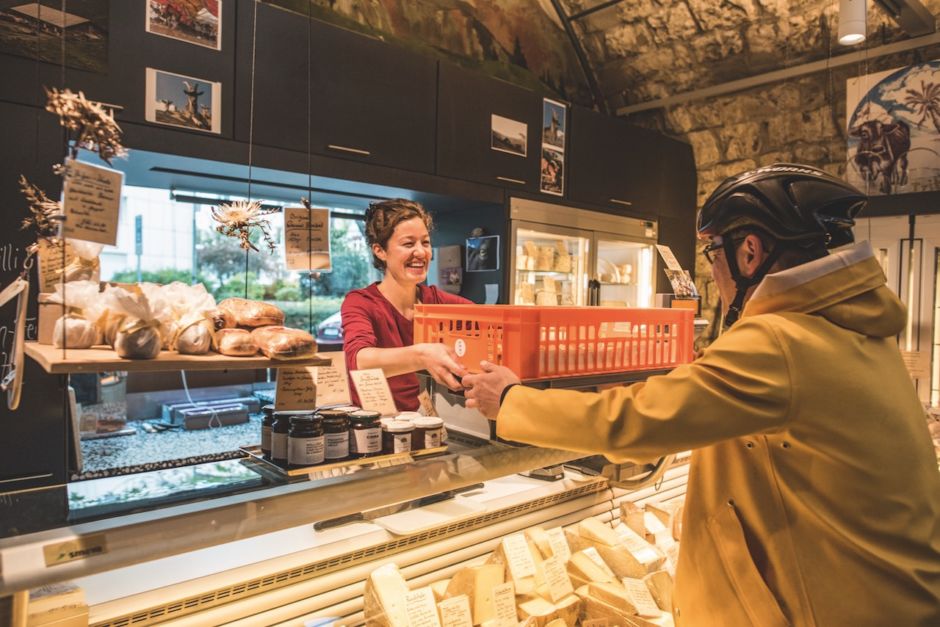
P repare to taste your way through the Alps. This five-day culinary adventure will have you jetting between white-napkin, five-star dinners and spreads lining the farm table.
If you’ve packed your cocktail attire, splurge for Zurich’s Parkhuus Restaurant , and note their 14 Gault Millau points. Or break out the camera in Appenzell at the Berggasthaus Äscher restaurant — the restaurant’s façade clings to the vertical cliffside.
Two and a half hours later, you’re in the valley resort town of Garmisch-Partenkirchen for dinner under a glass dome at the top of the Zugspitze, nearly 10,000 feet in the air. Of course, you can hike and ski while up there, too.
In Salzburgerland, Restaurant Obauer will fill you with the sights, sounds, and smells percolating at the foot of Hochkönig Mountain. And finally, in Regensburg, go all the way back to the 8th century, cruising to Weltenburg Abbey — one of the oldest monasteries in the world — and sacrificing a moment to indulge at their world-renowned brewery.
— 5 — Alpine Capitals
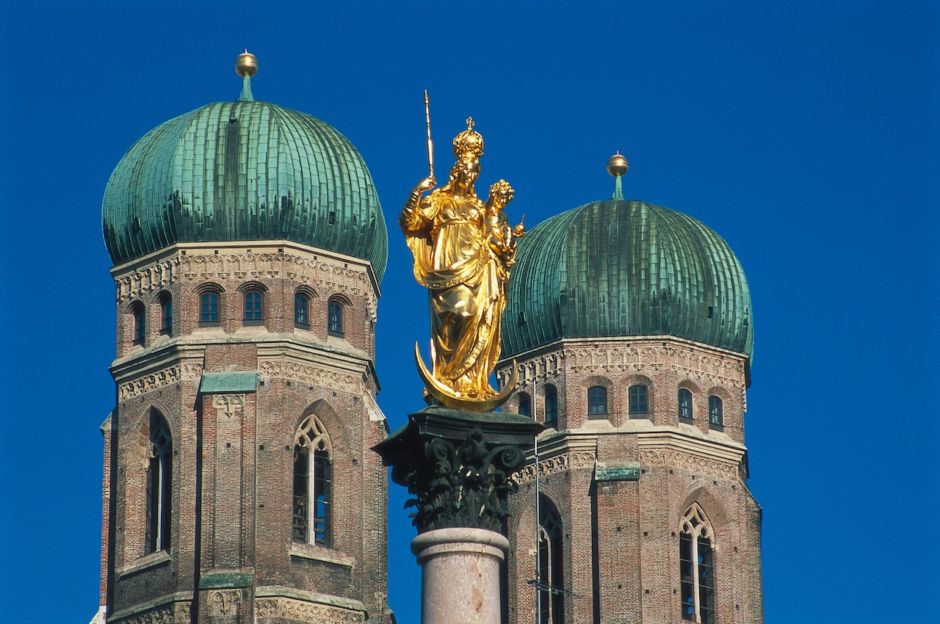
O ne epic weekend is all it takes to bounce through the Alps’ capital cities. Munich, Innsbruck, and Zurich are ripe with some of Europe’s best cultural offerings, each a gateway to both world-class urban experiences and those Alpine breezes.
Beginning in Munich, a capital city that still has a firm grip on its charm and traditions, choose between the Bavarian State Opera, the National Theater, or any of the city’s world-class museums, and top it off by hiking to the Monastery of Andechs for a sampling of world-famous Bavarian beer — crafted by Benedictine monks.
In Innsbruck, “the Capital of the Alps,” grab some suds at the Hofgarten , position your chair to take in the three mountain ranges towering above, and score a quick peek at the lights surrounding nearby Ambras Castle. Then in Zurich, hike up the Uetliberg mountain, working up an appetite for the city’s signature dish, Zürcher Geschnetzeltes — well-deserved after the climb.
— 6 — Alpine Design

R ich tones, minimalist style, heavy on the pine and the wool — what you see in the magazines isn’t fabricated. You’ll step into the pages of this itinerary by watching local craftspeople at work, wandering through art galleries, and resting your head underneath contemporary Alpine architecture.
Book a room at Geisel’s Beyond Munich , and spend a moment looking through the huge windows onto the Marienplatz. When morning arrives, jet off to Tegernsee — a small, ancient city with as many festivals as farms — for a hot air balloon ride over one of the most beautiful places on our planet.
Innsbruck is worth simply milling about, taking in the architecture that dates back to the Middle Ages in their unparalleled Old Town. In Bregenzerwald — famous for its timber industry — stop by Werkraum , an innovative museum and workspace dedicated to all things wood.
Then rest your bones in Lucerne’s Art Deco Hotel Montana , where the views are inside and out — your room may provide a view of the lake right beneath the peaks. The last stop is Geneva, where a bike rental takes you through lush wine country, ending with samples from a tasty 1,000-year-old tradition .
— 7 — The #nofilter Tour of the Alps
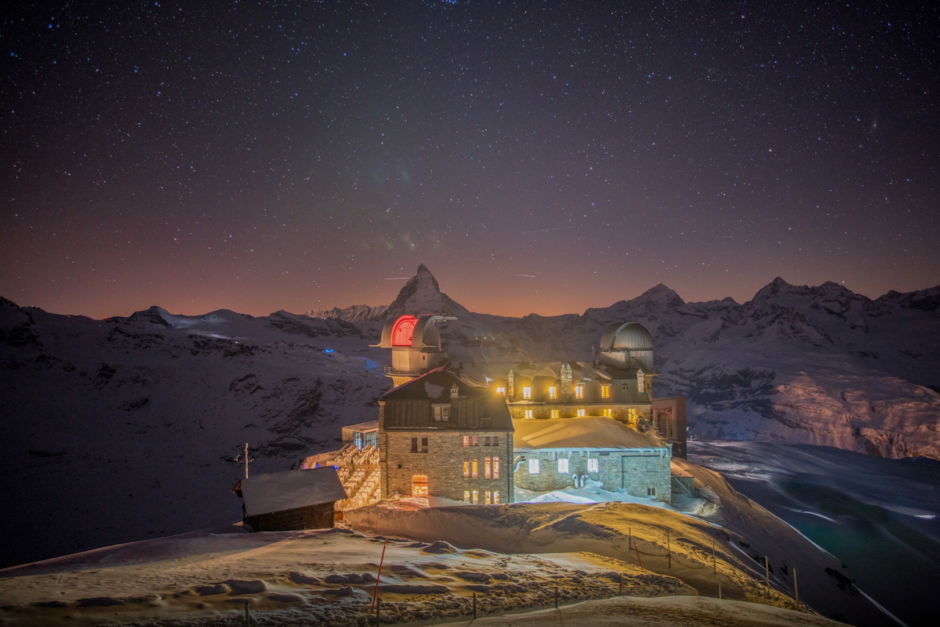
T he most stunning spots in the Alps aren’t all well known. To get that #instaperfect shot, you’ll need to head off the beaten path.
For starters, photos look better at 10,000 feet. Zermatt’s 3100 Kulmhotel Gornergrat , a hotel-meets-library-meets-restaurant, complete with cozy fireplaces and views of the Matterhorn, is at elevation. Then trade those urban views for ones of Swiss National Park , the oldest national park in the Alps, with a stop in St. Moritz.
Mix up the landscapes with a move to Innsbruck’s land of diamonds: Swarovski’s Daniels Crystal Worlds will grab you from its exterior, and that’s before the gem hunting. In Garmisch-Partenkirchen, beeline back to Mother Nature and to the AlpspiX viewing platform — this might be your most popular Instagram yet.
Then you’ll wind up in Hallstatt, a tiny 750-person hamlet straight out of any Alpine postcard. Head to the terrace of restaurant Bräu Gasthof for a classic photo of the village, its lake, and lone cathedral spire reigning above. End your trip with a stop in bustling Munich, test driving your dream car at BMW World — you can take photos at 100 mph, right?
— 8 — The 0 to 100 Alpine Adventure

W hether you’re a white-knuckled thrill-seeker or a calm and mellow explorer, the Alps have you covered. Zip down the Autobahn in a shiny Porsche, go whitewater rafting in the Tirolean Alps, or relax into a flight of rare gins at a rustic distillery. In the mountains, you set the pace.
A stop in Stuttgart will put you behind the wheel of a Porsche , racing down the limitless Autobahn. Go from high-speed on the ground to high-speed in the air three hours later in Schwarzwald, racing through the Black Forest with Hirschgrund Zipline .
On the way from Gstaad to Lucerne, visit the Interlaken-Jungfrau Region (the “Outdoor Capital of Switzerland”) and hike to the Kleine Scheidegg for fantastic views of the famous mountain trio Eiger, Mönch, and Jungfrau. Mix it up back in Lucerne, hopping on the world’s steepest cog railway — a 48-percent gradient. Keep the adrenaline going in Ötztal’s Area 47 , a theme park where you can cliff dive, wakeboard, zipline, and more.
Innsbruck is your final destination, where you’ll shred through the imposing Karwendel range on a mountain bike — or just take in the Alpine views from… your bathroom .
— 9 — Palm to Glacier
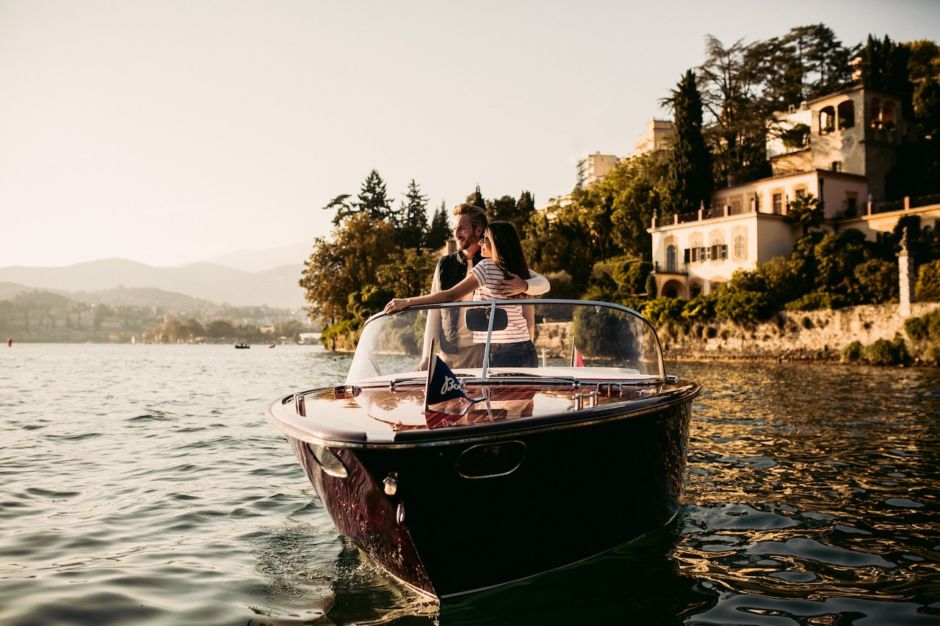
F rom lakeside in Lugano to the sky-high mountain air above Austria, Switzerland, and Germany, be sure to pack both your shades and your scarf.
Lugano, a large summer holiday town, is the best of both worlds — a combination of Mediterranean urban flair and Alpine retreat. Sit lakeside at Restaurant Seven Lugano , and then inspire your nose on the two-mile Olive Tree Trail at Monte Arbostora, San Grato’s botanical park.
Bask in St. Moritz’ mineral springs after a long day hiking glacier territory. In Ötztal, raft the rivers, rock climb, or stand on the Wildspitze glacier to be on top of Tirol, near the Italian border. Climb up to the top of Zugspitze in Garmisch-Partenkirchen, or finish on a high note in the Alps’ largest nature reserve, National Park Hohe Tauern .
Here, eagles soar overhead, ibex deftly climb the peaks, and the views of Großglockner , Austria’s tallest mountain, don’t get any better.
— 10 — The Purist’s Alpine Bucketlist

I f you gotta do it all, don’t settle. Do it all.
Start in Zermatt, staring up at the Matterhorn. Wander the city’s romantic alleyways, and trek the Five Lakes Hike to Gorner Gorge’s towering cliffs. Spend a moment in luxury in Lugano, and take in those Alpine views without leaving the spa . Hide between Lucerne’s medieval walls and towers, hopping in a boat to Flüelen and taking a scenic train to Bellinzona.
In Garmisch-Partenkirchen, hang with the birds on Germany’s tallest mountain, the Zugspitze, overlooking one of the oldest mountain chains in the world. Then travel back to medieval times in Innsbruck, where Emperors reigned supreme at the Imperial Court.
Follow Mozart’s steps to Salzburg, counting the spires spreading out above the river. Find respite in Hallstatt, wandering between wood-gabled houses that convince you fairytales are real. Toast to your trip at one of Munich’s famous beer gardens , and finish off by exploring 1,000 years of chaos, mayhem, and history at the Medieval Crime Museum in Rothenburg.
— 11 — The Nonconformist’s Alpine Bucket List

T here’s no pop music, pumpkin spice lattes, or long lines here. If you’re more the B-side-of-the-record kind of traveler, look no further.
Heidelberg’s practically preserved in amber — its castle, Old Bridge, and medieval old town have provided artists with inspiration for centuries. Walk along the Philosophenweg , and you’ll feel it. Balance it out with a trip to Stuttgart’s Cube Restaurant , trading city walls for urban modernism.
The rest is up to you: Meditate in Baden’s verdant woods. Tour one of the best gin distilleries in the world. Hide away in Fribourg’s old town Colombi Hotel . Hike the Gourmet Trail , taking in the view between bites. Get bluesy at the Montreux Jazz Festival. Go full-on couture at Gstaad’s famous “shopping mile.” Get your hands dirty at one of the artisan-run workshops in Bregenzerwald’s 12 villages and reward yourself with Käseknöpfle (an Alpine mac n’ cheese). Head to medieval Kufstein to wash it down with the regional drink, pear Schnaps . Top it all off in Zell am See with a stroll along a glacial lake , a repurposed castle, and plenty of people-watching.
Choose one, or choose them all. There’s no wrong way to do the Alps.
We use cookies for analytics tracking and advertising from our partners.
For more information read our privacy policy .
We use cookies and Inspectlet. By using this website, you accept the use of cookies which helps us provide you more interesting and adapted content.
General information
World-famous, beautiful, charming and exciting, the Alps often sound more like movie stars than mountains. Austria, France, Germany , Italy, Slovenia and Switzerland each offer an assortment of winter and summer sports, National Parks, and scenic tours on this legendary mountain range arcing 750 miles from Genoa to Vienna. Sample the region’s richly flavored mountain cheeses, comforting rosti , and the beloved communal dishes of fondue and raclette . Sip festive drinks like schnapps, glühwein , and punsch to name a few. The Alps boast castles and gardens, spas and yodeling, alpine cowbells and schuplattein dancing. Across distinct mountain cultures and abundant attractions, the Alps are extraordinary even when you’re not wearing skis . Raise your European vacation to its greatest heights in the Alps
Through the Grapevine
Wine has influenced the culture of Europe for centuries. Dating back to 1600 BC, the Romans spread wine grapes throughout Europe and quickly became skilled at classifying grape varieties and colors, observing characteristics, and building fertilization techniques. By the first century AD, wine was being exported from Italy to Spain, Germany, England and France. The world’s oldest operating winery, the Château de Goulaine in France, is still open to visitors today and was a reason the country and its surrounding area quickly dominated the world wine market.
Religious and Pilgrimage Destinations
How architecture and contrasts changed Europe’s cities.
CHECK OUT OUR LATEST GUIDE
Montasio Cheese
This nutty and slightly fruity flavored cheese is made in large wheels and is produced in the Veneto and Fruili regions.
Europe’s Most Iconic Landmarks
Europe is full of iconic sites and landmarks. From the Eiffel Tower in Paris to flower fields of the Netherlands, there’s always something new and exciting to see. In this gallery, you’ll find just some of the must-see landmarks scattered throughout Europe in this gallery. Get to know a little about them here so you know which ones to add to your trip itinerary.
Slovenia at Christmastime
Festive atmospheres in historic towns!
Traveling in Europe while making things with your hands
Two brothers anchored their trip to the continent with distilling and mosaics.
Countries in this region
Switzerland, recommended trips, roman thermal spas.
So-called because the ancient Romans often built settlements around them, the Roman thermal spas of Europe are actually naturally occurring warm springs. They’re perfect for relaxing and revitalizing after a day of exploring Europe. In Roman times, people gathered at the springs to meet people and socialize, and the same is still true today.
Pilgrimage routes and shrines of Western Europe
Why walking a pilgrimage route in Europe is the best way to truly experience rural splendor and spiritual bliss.
The Romantic Danube
With many scenic landscapes along the Danube, with many under state or international protection, your romantic trip begins with a relaxing cruise.
Swirl, Smell and Savor: a unique wine tasting trail
Europe offers some of the most breathtaking vineyards, luscious grapes, and flavorful wines in the entire world. It’s no wonder people travel from near and far to taste and experience the best European wines. Pour a glass and enjoy a few of Europe’s beautiful regions on this detailed wine-tasting trip.
Following the Celtic Trail
Trace the path of the Celtic Trail on a journey across the distinct countries of the United Kingdom and Ireland. Explore the vibrant histories, myths and cultures surrounded by oceans on this fulfilling trip through stunning landscapes, charming towns and inspiring cities.
An Iconic Trip Through Europe
Europe is a place rich with history and culture. From Stonehenge in Great Britain to The Alps in Switzerland, the landmarks and sites of magnificent Europe will inspire your travels for years to come. Take it all in with a landmark trip through Europe on your next two-week getaway to some of Europe’s most iconic locations.
Choose your interests
Things to do, a sustainable adventure in catalonia’s gorgeous outdoors.
In Spain and France, hike the hills, smell the wild herbs, picnic among the trees.
European Christmas Markets 2022
We asked and you shared your secret market spots in Europe!
Switzerland, the museum land
Timeless treasures: exhibitions across epochs!
Shopping diversity in Germany
Discover Germany’s unique shopping places.
Monte Veronese Cheese
This cheese has its own unique charm: its flavor and fragrance reflects the alpine region where it is made.
Grana Padano Cheese
The flavour is sweet and pungent; the aroma is intense without being overbearing, with an unwavering persistence.
Edible Europe
Learning about a country through its culinary arts is one of travel’s principle pleasures. Food is a tangible reflection of geography, history, and culture; there are few more pleasurable ways to become well acquainted with a country than through its gastronomy, and each region has something unique to add to the menu.
#visiteurope
Want to know more about europe.
Sign up to our newsletter here:

Alps Hiking Tours
Hiking adventures across the alps.
From the dramatic Dolomites to the magnificent Mont Blanc, the Alps is a hiking destination like no other. Follow trails across fields of wildflowers, past upland villages and glistening lakes, ascending to views that inspired the world’s first mountaineers. We offer one-of-a-kind hiking adventures in five alpine countries—France, Switzerland, Italy, Austria, and Slovenia. Lace up your hiking boots and join us!
All Trips to the Alps
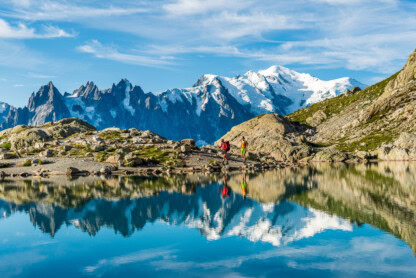
Small Group Adventure
Tour du Mont Blanc
Switzerland, Italy, France
From $5,795

Hiking in the Cortina Dolomites
From $5,295

Hiking the Haute Route
Switzerland, France
From $5,595

Ultimate Haute Route
From $6,995

Mont Blanc to the Mediterranean
From $7,395

Treasures of the Dolomites
From $6,495

Ultimate Dolomites

Hiking in Slovenia
From $6,095
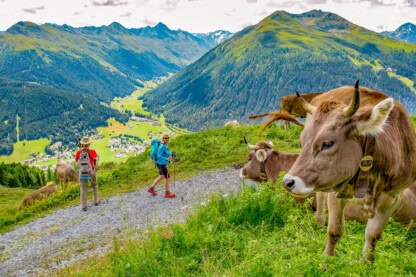
Hiking Bergamo to Innsbruck
Liechtenstein, Austria, Switzerland, Italy
From $7,295

Hiking the Heart of Switzerland
Switzerland
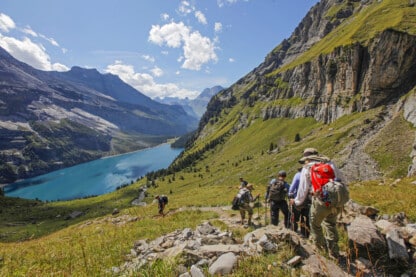
Hiking Switzerland’s Via Alpina
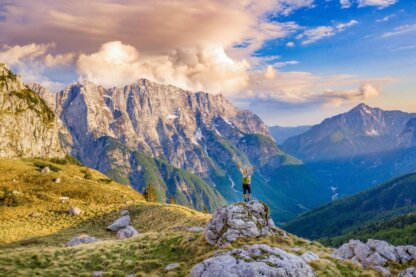
Hiking the Alpe Adria: Salzburg to Trieste
Italy, Austria, Slovenia
From $6,395

Tour de Monte Rosa
Switzerland, Italy
From $7,695
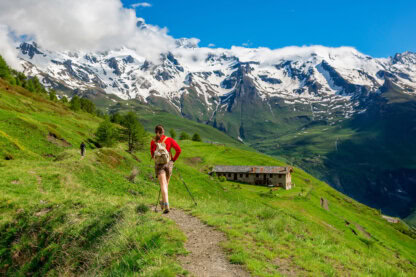
Treasures of Mont Blanc
From $7,995
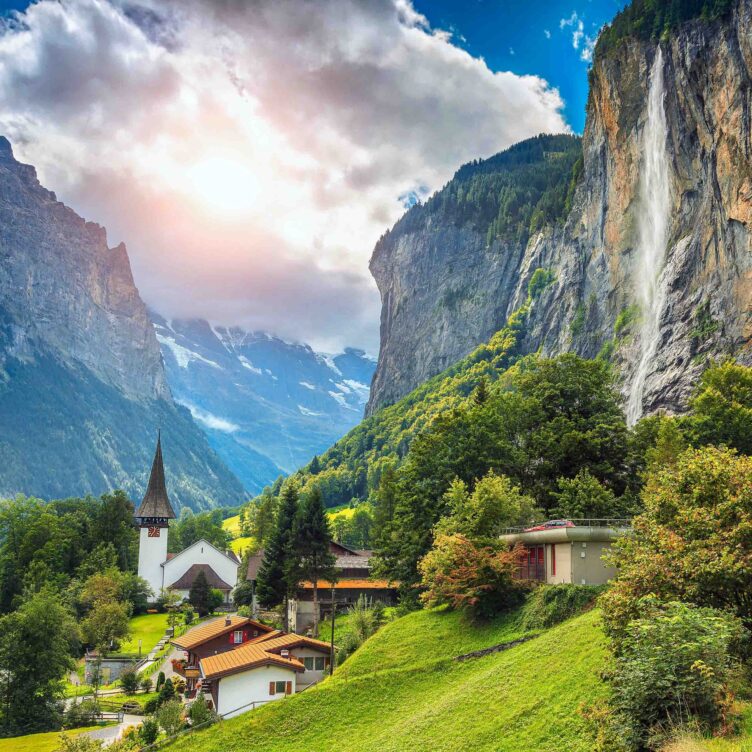
What Makes Our Alps Hiking Tours Special?
- Expert Trip Leaders — Well-trained, experienced mountaineers with a passion for the Alps, our leaders infuse each trip with local knowledge and plenty of fun! We always have two (sometimes even three!) leaders on our Alps trips so you can hike at your own pace, opt for van pick-up, or choose your preferred hiking route (on select trips).
- Carefully Planned Itineraries — Experience an adventure designed to take you far from the crowds into the pristine heart of the Alps. Our itineraries span six countries and feature alpine hiking trails (several crossing international borders!) to mountain villages and secluded inns you’d never think to find on your own.
- Exquisite Accommodations — We’ve hand-picked our lodgings, from luxurious hotels to historic mountain inns. At the end of the day, you can count on a warm welcome and charming alpine views, along with convenient access to the trails.
- 45 Years’ Experience — Thanks to our longstanding relationships in the region, we’ll be treated like friends and family along the trail. Our local experience means we have the insider’s edge; we know where to find the best views and even the best spots for lunch!
Experience the Alps
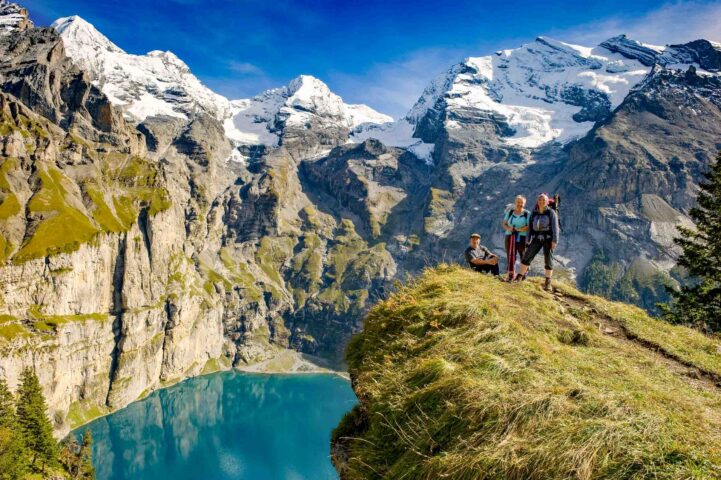
REVIEWS FROM OUR CLIENTS
We had a great time hiking the Italian Alps and especially loved the variety of the hikes and the four different countries and cultures we experienced. Once again, Wilderness Travel has exceeded our expectations and has shown why they continue to rack up awards as the best travel company for hiking experiences! Thanks to the entire company for never failing to delight us!
This was an ideal vacation for us: being in the mountains all day, at the peak of wildflower season, with two guides who were both knowledgeable and fun to be with, having a good hotel at night, and great French food in the evenings.
A once in a lifetime experience where the beauty of the mountains, the quality of the food/lodging and the hiking challenge were just magnificent.
Amazing trip, well planned, flexible staff and itinerary. Staff had great relationships with hotel and lodging hosts, chefs, making it even more special! What could be better than to have a world class mountain guide steering you around a beautiful setting like the Dolomites?
Excellent does not come close to describing my experiences on this trip. It was way beyond excellent for me. It was the best time of my life! The Alps were like a fantasy world and the guides made them real for me.
This trip really exceeded my expectations. The variety of hikes, the awesome scenery, the added benefit of two wonderful guides—it was one of the best trips I have ever taken!
A wonderful trip. WT consistently impresses me with their level of service. Most importantly, the guides are superior to any other service I’ve used. You feel completely at ease and supported by their level of professionalism.
Talk to an Expert
Our Europe Specialists know every detail about our Alps trips. They will be happy to answer any questions and help you choose the journey that’s right for you. Contact us to learn more or book your trip today!
Protect Your Trip »
14 top vacation destinations in the french alps.
Explore an array of options for your next family ski vacation or a romantic wine retreat.
14 Top Destinations in the French Alps

Getty Images
Experience the French Alps by hiking in national parks, skiing at top resorts, exploring mountain villages and more.
The Alps are the largest mountain chain in Europe – and one of the longest and highest mountain ranges in the world. Their majesty stretches for more than 700 miles across eight countries, with the highest peak, Mont Blanc, sitting near France's border with both Italy and Switzerland . Combined with its proximity to Lake Geneva , the French portion of the Alps offers some of the most picturesque ski resorts, alpine villages and vacation opportunities in the world.
Skiing, while not required to enjoy your visit, is a huge part of the French Alps culture – as is the après-ski (literally "after-ski"), which is what happens when the skis come off. In the summer, it's all about the Tour de France, an annual men's cycling competition that passes through the Alps. Travelers can soak in natural hot springs to unwind after a day spent hitting the slopes, exploring by cable car or doing nothing at all. Strap on your skis and pack your hiking boots for these top destinations in the postcard-worthy French Alps, one of the best places to visit in France .
(Note: Some of the following activities, attractions and locations may be affected by the COVID-19 pandemic. New policies may be in place, including capacity restrictions, reservation requirements or mask mandates. Check with the Centers for Disease Control and Prevention, the U.S. Department of State and local tourism boards before traveling.)
Chamonix-Mont-Blanc

The first Winter Olympics were held in 1924 in Chamonix-Mont-Blanc. The town, more commonly referred to as Chamonix, sits in the heart of France's Haute-Savoie department, a subdivision of the Auvergne-Rhône-Alpes region (like how the U.S. has counties within states). A century after those incipient Olympic Games, this scenic area in southeastern France – bordering Italy and Switzerland – continues to welcome visitors from around the world to take part in its premiere skiing and snow-gazing opportunities. You'll find the country's highest cable car in Chamonix at the Aigulle du Midi mountain. Advanced skiers and those simply brave enough to take the journey will venture more than 12,600 feet into the sky to the starting point for the Vallée Blanche. This "off-piste" area of the French Alps – where the snow is not specially prepared for skiing – offers up glacial skiing and celestial vantage points from the foot of the Mont Blanc massif mountain range.
For those more comfortable on rails rather than skis, book a ride on the Montenvers-Mer de Glace train. This cherry-red cogwheel train carries passengers from Chamonix to Montenvers for access to the Mer de Glace (Sea of Ice), the biggest glacier in France. Visitors will have the opportunity to visit an ice cave in the glacier and learn more about both its history and future amid climate change. When you're done exploring, warm up with a traditional meal at the Refuge du Montenvers restaurant before heading back to Chamonix.
Aix-les-Bains

Set on the eastern shore of Lac du Bourget – France's largest natural lake – Aix-les-Bains is an inviting Savoy resort town in the Auvergne-Rhône-Alpes region. It once hosted the summer escapades of royalty, along with American author Mark Twain. The glacial waters of the Lac du Bourget set a relaxed ambiance, easily discovered by strolling the Esplanade du Lac, a lakeside park and walkway shaded by trees. The rugged mountain landscape can be glimpsed across the lake as well as the Hautecombe Abbey, a former monastery where many members of the House of Savoy are buried. Mont Revard is a prime example of the limestone cliffs found in Aix-les-Bains. The ski station at the top boasts an impressive network of cross-country ski trails for winter visitors, while in summer skilled cyclists attempt the ascent – including the competitors of the Tour de France, which has been held here numerous times. Visitors claim the views are stupendous, even if you arrive by car.
If you seek a more low-key vacation in Aix-les-Bains, while away the days at the Musée Faure, an art museum, featuring the works of Rodin and impressionist paintings, or take a daylong soak in the restorative waters of the spa town's thermal baths. Those who appreciate architectural aesthetics will be in awe of the Roman ruins here, like the Temple of Diana, found alongside belle epoque structures including the Casino Grand Cercle and the hotel Le Mirabeau.
Alpe d'Huez

At more than 6,000 feet above sea level, Alpe d'Huez is a year-round resort town in the French Alps. Its Pic Blanc glacier reaches nearly 11,000 feet and is accessible in winter or summer. Alpe d'Huez has earned the nickname "Island of the Sun" for its abundant days of sunshine on the slopes, which warm skiers and snowboarders of all ages and abilities.
You may start your stay by marveling at the Grotte du Glace, an ice cave at the top of one of the ski lifts that features sculptures. The lifts continue to operate even in July and August for hikers and mountain bikers looking to take advantage of 21 thrilling hairpin bends regularly employed in the Tour de France. The lifts also grant access to the smaller Alpine villages of Vaujany and Oz en Oisans from Alpe d'Huez. While most local restaurants in town are known for cream- and cheese-based cuisine, the newly renovated Le Génépi serves a menu of plates made with fresh, local ingredients. Recent patrons call the restaurant a much-needed infusion of culinary excellence in this French Alps town with its unique dishes and scenic views from the terrace.
Chablais UNESCO Global Geopark
The mountainous area known as the Chablais UNESCO Global Geopark is set on the France-Switzerland border and spans more than 60 French towns. The Chablais' name means "head of the lake," referring to Lake Geneva. The UNESCO recognition acknowledges the area's millions of years of geological history alongside cultural heritage such as local cheese- and wine-making practices. The Chablais was designated a "geopark" to highlight the bond between people and nature here, something evident throughout the French Alps given the emphasis on water and natural springs. UNESCO offers a tourist map online that showcases some of the many places to visit throughout the Chablais – abbeys, castles, museums and more. Visitors to the Musée de la Musique Mécanique (Mechanical Music Museum) in Les Gets were surprised by the abundant instruments it displays, with plenty of quirky and antique contraptions to spend an hour ogling.
Évian-les-Bains

Within the Chablais UNESCO Global Geopark, Évian-les-Bains is widely known for its mineral springs – you may also recognize it as the namesake for a popular water bottle company – but this quintessential French spa town quenches a thirst for beauty as well as water. Located on the southern shore of Lake Geneva, Évian-les-Bains was a favorite of the Lumière family: the very same Lumières credited with helping invent modern cinema. Villa Lumière was the family's summer residence, and self-guided tours of the now-hotel are allowed on weekdays. The Palais Lumière, which constituted the formal thermal baths during the early 20th century, houses cultural and art exhibitions today. The neoclassical-style theater, dating to 1883, was created by a student of Charles Garnier, the architect who built the Opéra Garnier in Paris .
The Pré Curieux water gardens in Évian-les-Bains, meanwhile, are a unique lakeside habitat used for research but open to guests who come by solar-powered boat with a guide from May through October. If you seek something to do around the winter holidays instead, check out Le Fabuleux Village des Flottins, a festival of magical creatures created out of driftwood from the shores of Lake Geneva and elevated with light displays. Past participants rave that the flottin sculptures are unusual and breathtaking – and advise not to miss the stalls of "vin chaud" (hot mulled wine) and pancakes along the parade route. Whenever you visit this quaint French Alps destination, don't miss a Michelin-starred meal at the restaurant Les Fresques.

Courchevel is a skiing enthusiast's dream, with one resort spread across six villages near Vanoise National Park, a nature preserve that was France's first national park . This French Alps ski resort is part of Les Trois Vallées (the Three Valleys), which is the largest linked ski area in the world. There are more than 100 ski runs – and plenty of moguls for snowboarders and snowmobilers – across a variety of experience levels. Skiers who prefer abundant off-piste territory should give nearby resort Val Thorens a try. Méribel, meanwhile, another ski resort in Les Trois Vallées that neighbors Courchevel, caters to families. Part of the appeal of ski culture is the offerings when you're done with the slopes; après-ski at Courchevel includes the bustling Le Tremplin restaurant and the Copiña Courchevel bar, where tapas, beer, wine and cocktails are served in a sleek setting. Guests say the friendly staff, delicious drinks and upbeat atmosphere – sometimes with live music – made them return to Copiña Courchevel again and again.
Serre Chevalier

Within France's Haute-Alpes department are four communes (the French equivalent of towns) that make up the Serre Chevalier valley and ski resort, where sunshine is plentiful throughout the year. In the valley of the Guisane river, between the Cerces mountain range and Écrins National Park, you'll find the commune of Le Monêtier-les-Bains, a former Roman city complete with thermal baths that today are open from May to December. Spagoers at Les Grands Bains du Monêtier note that the facilities can get crowded but a soak is a must, especially after a day spent skiing or hiking.
Another commune, Briançon, serves as a UNESCO World Heritage Site with plenty of history to explore; it's also one of the highest towns in Europe at an altitude of more than 4,300 feet. At the summit of Serre Chevalier, take in a panorama of Écrins from 3,600 feet up on your way down the summertime zip line. If you have younger family members in tow, kids aged 4 to 12 can make use of the valley's high-altitude wooden playground called Marmot Camp, named for the squirrel-like alpine marmot.
Val d'Isère

Festivals keep things lively year-round at Val d'Isère, a French ski resort town near the Italian border. In the summer, sporting and cultural events like races and festivals entertain locals and travelers alike. Val d'Isère is one of the top hosts of FIS Alpine Ski World Cup competitions, and it's famed for high-difficulty and off-piste skiing. But you don't have to know what you're doing to enjoy the skiing here, which visitors call seamless and user-friendly, with plenty of instructors for all levels of ability and reasonably priced lift tickets. The Alpine resort town also prides itself on its après-ski scene: The stunning Bar de l'Ouillette, for example, serves crepes lakeside. Les 3 Caves – comprising three locations at La Folie Douce – boasts a high-altitude wine cellar, a cave for cheese and one for cigars.
Saint-Gervais-les-Bains

About 40 miles from Geneva, Switzerland , sits Saint-Gervais-les-Bains, a small French town that makes a pleasant jumping-off point for daytrips to Chamonix or longer sojourns to the Swiss city of Lausanne or Turin, Italy. Saint-Gervais, surrounded by Mont Blanc among other towering peaks, is also a top French Alps destination in its own right, with bountiful eateries and plenty of mountain air to inhale. Take a 70-minute ride on the Mont Blanc tramway for scenic views; a 30-minute walk from the top gets you to the Bionnassay Glacier. You can also head to the cable car on the western part of Saint-Gervais to ascend to Le Bettex, a small village in the mountains. Stop here to dine at La Flèche d'Or, a hotel and restaurant serving traditional Savoie dishes with local produce, then continue in the cable car to Mont d'Arbois for the best views. Back in Saint-Gervais, Les Bains du Mont Blanc is a world-class thermal spa making use of the region's naturally warm water.
Mercantour National Park

Provence-Alpes-Côte d'Azur, the most southeastern region of France, houses the iconic French Riviera (Côte d'Azur) alongside a stretch of the Alps. Spread across the region's Alpes-Maritimes and Alpes-de-Haute-Provence departments is Mercantour National Park, about 30 miles from Nice . Multiple valleys, including the Ubaye Valley, are part of this more than 250-square-mile national park, which is home to more than 2,000 species of flowering plants as well as thousands of petroglyphs from the Bronze Age. Park trails covering nearly 400 miles will expose you to the biodiversity of this unspoiled natural haven in the southern French Alps. Tourists may enjoy kayaking the turquoise waters of the Verdon River through the Verdon Gorge or hiking around the rim of the canyon. The wild and unspoiled Ubaye Valley draws outdoor enthusiasts, who find their way to its town of Barcelonnette to hike, canoe and ski.

Grenoble, France, is the European Green Capital for 2022, meaning this destination is an eco-friendly option for a French Alps vacation. The mountains and the metropolitan city work in harmony, offering visitors the restaurants and accommodations of a big city along with the natural sights of protected environments like the nearby Chartreuse Regional Nature Park. Speaking of green, the Grande Chartreuse monastery – situated in the Chartreuse mountain range north of Grenoble – is the home of the Carthusian monks who safekeep the secret recipe of green chartreuse liqueur to this day. The monastery isn't open to the public, but you can visit the nearby Grand Chartreuse museum to learn more about the Carthusian Order.
The Belledonne mountain range, meanwhile, is known for breathtaking vistas, including swirling sunsets. Beyond biking, hiking and skiing, thrill-seekers can paraglide here or take it slow in the winter with snowshoeing. In the city itself, La Bastille is a fort at the center of Grenoble, perfect for an afternoon spent above the city – a cable car will take you there, or you can hike to the top. About 10 miles south of Grenoble, the French-style gardens and chateau of Domaine de Vizille are so elegant you might not expect the Museum of the French Revolution is housed here, but art and artifacts combine in the castle's galleries to walk you through that historical period. Kids will love spotting the swans, ducks, deer and other animals that roam freely on the protected grounds.

Wine and cheese – some of the best you've ever tasted – are abundant throughout France. And according to La Clusaz, a commune roughly 40 miles west of Chamonix in the Auvergne-Rhône-Alpes region, these French staples are something to be celebrated. The annual Fête du Reblochon (Reblochon Festival) exalts cheese and the local farmers who produce it with demonstrations, tastings, a parade, and plenty of folk dancing and merriment. Aside from cheese, chocolate truffles, white vermouth and certain wine varietals are all local specialties.
Recent visitors to La Clusaz call it a lovely little ski town with ample restaurants and cozy bars to keep refreshed. If you want to burn off some calories du fromage, head to Col des Aravis for hiking trails with iconic French Alps views: the white-capped Mont Blanc, pine trees, mountain flowers, a glacial lake and even a tiny chapel. Adventure lovers visiting La Clusaz may want to try out equestrian skijoring, which is the sport of being pulled by a horse through the snow on skis – not for the faint of heart.

Megève has been the stage city for the Tour de France only twice, but its elegant atmosphere makes it a sensible choice for hosting events that draw crowds from across the country – and the globe – including the annual equestrian Jumping International de Megève. When there is not a prestigious sporting event in town, tourists in Megève can still find world-class dining and shopping. For example, chef Anne-Sophie Pic, the most Michelin-starred woman in the world, helms La Dame de Pic – Le 1920, the restaurant at the Four Seasons Hotel Megève. The village shops span antique furniture to local produce to popular fashion brands. When you need a rest from shopping, stop in for tea by day and Champagne in the evening at Le Georges in the luxe Hotel Mont Blanc. A variety of child and teen programming in Megève invites the whole family to vacation, with a variety of sports courses and cultural workshops.

Often considered one of France's most beautiful villages, Yvoire is part of the Chablais UNESCO Global Geopark area for good reason, considering its 700 years of history and present-day charm. Like so many classic French Alps towns, Yvoire is nestled on the shores of Lake Geneva; its nickname is "gem of the lake." Built in 1306, Château d'Yvoire (Yvoire Castle) is a landmark in the medieval town that remains standing today; while not open to the public, it makes for an impressive photograph. On the other hand, the Jardin des Cinq Sens (Garden of the Five Senses) entices sightseers with gardens to explore through touch and smell. Visitors to the gardens mention that it is tucked away, but once you find it your senses will thank you. This romantic destination in the French Alps reserves its streets for pedestrians, so you can stroll hand in hand to your heart's content. What's more, flowers are so plentiful in Yvoire that it is often called the "French flower village."
You might also be interested in:
- The Best Hotels in Europe
- The Best Castle Hotels in Europe
- Romantic Hotels Worth a Stay
- The Most Scenic Mountain Resorts
- The Best Travel Insurance for Europe
Tags: Travel , Europe Vacations , Mountain Vacations , Skiing
World's Best Places To Visit
- # 1 South Island, New Zealand
- # 4 Bora Bora
If you make a purchase from our site, we may earn a commission. This does not affect the quality or independence of our editorial content.
You May Also Like
The best places to go for july fourth.
Sharael Kolberg June 10, 2024

The Best Places to Celebrate Juneteenth
Suzanne Mason June 6, 2024

The Best Salem Tours
Lyn Mettler June 6, 2024

The Best Key Largo Snorkeling Tours
Gwen Pratesi June 6, 2024

The Best London Tours
Kim Foley MacKinnon June 5, 2024

Celebrity Ascent Review
Megan duBois June 5, 2024

The Best Graceland Tours
Gwen Pratesi June 5, 2024

Top Things to Do in Orange County, CA
Brittany Chrusciel and Sharael Kolberg June 4, 2024

Fun Things to Do in Arkansas
Ben Luthi and Justine Harrington June 3, 2024

Top Things to Do in Florida
Gwen Pratesi May 31, 2024


The Ultimate 2 Week Road Trip Itinerary in the Alps
The mystery and beauty of the Alps has long captivated travelers with its snow-capped peaks, aquamarine lakes and charming hamlets. If there was ever a perfect road trip destination, I think it would be the Alps. The Alps are one of the ultimate European travel experiences! Even now that I live in Germany , it still feels like a dream to be in the Alps. You never get sick of this magical place.
There are several countries that span the Alps, including Austria, France and Germany, but the most famous of the Alpine countries is of course Switzerland. It goes without saying that Switzerland is stunning and one of my favorite destinations in Europe, but, there are plenty of places to explore in the Alps outside of Switzerland that surprised me (and saved me some Euros!) during our 2 week road trip in the Alps.
While you can’t see all of the Alps in just 2 weeks, you’ll be able to see a lot of these beautiful mountains. In this blog post, I help you plan the perfect 14 day roadtrip through the Alps, making sure that you make the most of this incredible part of Europe. You’ll hardly be disappointed by the places you miss because the places you will go to are going to blow your mind. The Alps are truly stunning and you really can’t go wrong with any destinations in these European mountains!
What You'll Find In This Post
How to Spend 2 Weeks in the Alps
Overview of this road trip itinerary.
This 2 week road trip itinerary in the Alps will be a circuit route starting and ending in Munich. This road trip includes stops in 4 different countries -- Austria, Switzerland, Liechtenstein and Germany. In total, there will be about 19 hours of driving split across 10 days. The longest stretch of driving is approximately 4.5 hours, but an average of 2 hours per day.
By starting and ending at the same point (Munich), you can reduce the cost of your rental car by about 200 euros, and it makes the logistics of the arrival and departure less stressful since you can book a round trip flight. If you preferred to book one-way flights, you could easily modify this itinerary to start in Munich and end in Zurich or Geneva by moving up the last three days to the middle of the itinerary.
Day 1 + 2: Salzburg
For the first day of your Alps road trip, a short two hour drive from Munich to Salzburg is a calming way to warm up your driving skills and get comfortable on the European highways. This drive is straightforward and the terrain is easy, plus you’ll get an impression of the immaculate road conditions on the German autobahn. Nestled in the foothills of the Alps, Salzburg offers a great blend of history, culture and of course, Sound of Music fame. My mom is obsessed with this movie, so I knew I couldn’t pass up a stop here. I dive into all the nitty gritty details about planning two days in Salzburg .
The city itself is a UNESCO World Heritage Site, thanks to its famous landmarks like the birthplace of Mozart, the Hohensalzburg Fortress, and the well-preserved baroque architecture. Salzburg is compact and easy to explore by foot, so make sure to book a hotel with easy parking options. I recommend staying for at least 1 night, because many visitors only come as a day trip. The city has a completely different vibe at night. We did two nights in Salzburg and felt like it was just right!

Day 3 + 4: Innsbruck
Famous for its mountain panoramas and alpine adventure activities, Innsbruck is a great place to stay for a few days while traveling in the Alps, thanks to its advantageous location in the center of the Tyrol region of Austria. You can easily use it as a jumping off point for mountain biking, skiing or other mountain adventures, or you could simply enjoy 48 hours exploring all the great things the city of Innsbruck has to offer.
The quaint old town of Innsbruck is easily walkable in an hour or two if you are interested in sightseeing, with options to see the Golden Roof , the Baroque facade of the Heblinghaus or the stunning interior of the Cathedral of St James . The city has a long history with the Olympics, so make sure to take a visit up to the towering Bergisel Ski Jump which overlooks the city. Inside, you can enjoy coffee or lunch with a view! For more stunning views, take your elevation even higher with a ride to the top of Nordkette Mountain . Sometimes called the Jewel of the Alps, you can ride a funicular and cable car up to Hafelekar Station for mind-blowing views of the Alps.
I was on the fence about visiting the Swarovski Kristalwelten Museum (Crystal World) outside of Innsbruck, but it turned out to be such a great museum and I would 100% recommend going. Similar to other experiential museums that have popped up in recent years, the Swarovski Kristalwelten features a series of rooms created by different artists. I had no idea the caliber of artists that would be featured here--Alexander McQueen, Yayoi Kusama, and Manish Arora to name a few!
Each room captures the artist's interpretation of Swarovski crystal as an artistic medium, and there are some incredible installations! It seems that most people who visit Swarovski Kristalwelten go straight to the gift shop, so when we visited the museum, we had it completely alone! Don’t miss the mind-blowing beautiful crystal clouds out in the garden.
Innsbruck wasn’t my favorite of the culinary destinations we visited on our tour of the Alps, but it is a good place to sample some traditional Austrian food. Stiftskeller has a good local vibe with a nice selection of beer and yummy (and filling) pub food. The stylish Ottoburg is another good option with a charming Alpine interior and friendly staff. One thing you don’t want to miss before leaving Austria is strudel, and Innsbruck has some delicious options! Kröll Strudel Cafe offers a wide assortment of delicious strudel flavors to eat in or take away.

Day 5: Luxury Alp Hotel
While in the Alps, it would be a shame not to splurge on at least one luxury experience -- this is basically the region of the world where luxury hotels were invented! There are copious amounts of stunning Alpine hotels offering a range of luxury experiences in Austria, Switzerland and Germany. Spa and wellness resorts are popular in this region of Europe, making for a relaxing and restorative experience on your 2 week itinerary in the Alps.
If you happen to be visiting during a slower season or book a hotel in the middle of the week, you might be surprised by some of the deals you can find. We were traveling in the Alps around my 30th birthday, and I planned for our splurge day on my birthday as a present to myself, using up nearly all of my rewards points to book a room at the picturesque Nidum Casual Luxury Hotel outside of Innsbruck. It was the perfect way to ring in a new decade of life and felt totally luxurious! For more luxury alpine options, Pretty Hotels has a lovely list of mountain getaways many of which are in the Alps as well as Design Hotels round up of the most design-forward hotels in Austria.
Day 6: St Moritz (or Zermatt)
Driving into Switzerland offers some mind blowing scenery. From the tunnels through the mountain to crystalline lakes, this morning's drive will wow you. I could easily spend one week in Switzerland , but your budget might now allow you to stay too long. With this roadtrip, we're keeping the time in Switzerland fairly brief. When you picture a luxury Swiss Alps scene, you are basically picturing St. Moritz. This glamorous mountain town has been hosting the winter holidays of European elites for decades, and this place just oozes wealth. In a rich country like Switzerland, that's saying something.
If hanging out with Europe's wealthiest isn’t your vibe, I totally understand. You could easily go to Zermatt instead. Zermatt is home to the famous Matterhorn mountain, and it is a quieter more relaxed destination in Switzerland. The city itself doesn't allow cars, so you'll need to park outside the city and take the train in. I've written several posts about visiting Zermatt, including where to find the best restaurants in Zermatt .
But let's continue with the St. Mortiz plan. Never one to turn down a good sauna and spa day, the Ovaverva public pool and bathhouse is an ideal way to spend a morning in St. Moritz. This sleek and modern spa has everything -- saunas, steam rooms, hot tubs, outdoor heated pool -- all with stunning Alpine views. Like many other saunas and spa in this region, no bathing suits are allowed in the mixed-gender saunas so be prepared.
Similar to Innsbruck, St. Moritz has been a host of the Winter Olympics making it a prime snow-sports city with plenty of opportunities to go skiing or snowshoeing in the winter, or hiking and mountain-biking in the summer. The unique thing you can do here in the winter is go for a bobsled ride ! This adrenaline pumping activity will set you back about 300 Swiss francs a piece, but it is likely to be an experience you’ll never forget -- if you can survive the ride! For a less adventurous take, consider a hike on a glacier.
St. Moritz is also an excellent place for some shopping (if you can afford it!). Don’t miss a peek into the delightfully stylish Faoro which doubles as a shop and a cafe. Cashmere is the name of the game at Lamm , which has both modern and traditional sweater designs for men and women.
To save yourself (a little) cash, make a DIY cheese plate at Pur Alps who also supply amazing jams and crackers. For a more sophisticated snack, pop into the Kulm Country Club which has incredible interior design, mixing vintage and modern aesthetics impeccably. If you want to sample my favorite swiss chocolate brand, sample and buy one of the many barks or truffles at Läderach .
Day 7 + 8: Jungfrau (Interlakken) Region
The Jungfrau region is one of the prettiest in all of the Alps, home to gorgeous alpine lakes, majestic mountains, and high-altitude waterfalls. If you take the slightly longer 4 hour drive (vs 3.25 hrs) from St Moritz to Interlakken via route 13 and route 2, you will be treated to some of the most incredible Swiss Alps scenery imaginable. Through tunnels and small mountain towns, you’ll have vista after mind-blowing vista. It is well worth the extra 45 minutes in the car!
Interlakken, which literally means in between two lakes, is a centrally located stop for exploring central Switzerland for a few days. I would say the city itself leaves a lot to be desired, but it makes for a great jumping off point for exploring the Jungfrau region. There are some tasty restaurants in the town, as well as a nice riverfront, but not much else. If you prefer to have a more quaint Alp stay, you might want to consider nearby Grindelwald or Lauterbrunnen .

There are SO many ways to get amazing views in the Jungfrau region. One of the most famous things to do in this region of Switzerland is to visit one of the high mountain peaks, either Jungfraujoch (the top of Europe) or Schilthorn Observation Deck (James Bond fame). The views from both are of course spectacular, but the high price point means that you’ll probably want to select just one of them. We opted to do the Schilthorn peak. Unfortunately it was completely overcast and cloudy the day we went, so we decided not to ride up because there would be almost no opportunity to view anything.
On our way back from Schilthorn station to Interlakken, we stopped in the charming small town of Lauterbrunnen. Increasingly famous on Instagram, Lauterbrunnen is a quintessential Swiss town with one defining feature -- a waterfall shooting off a rock face into a sheer free fall. It’s very beautiful and you can see it from the town center. We also stopped at Trummelbach Falls , a tucked away waterfall gorge that is well worth the hour-long visit. You can get very close to the waterfalls, and the thunderous noise inside the gorge is cool to experience.
Prefer to see the Alps and lakes from the air? Interlakken is THE place to go paragliding in Switzerland, and there are almost daily departures for people looking to paraglide. My parents did this back in 2016 and had a fantastic experience! You might also consider a visit to the Two Lakes Bridge for a great perspective on Interlakken’s unique alpine position. Another option for pristine Alp viewing is the First Cliff Walk , which you can start in Grindelwald. Eat and Travel with Us has a great write up about how to do this!
Day 9 + 10: Lucerne
Given the mountain views that you’ve just come from, I would recommend spending your two days in Lucerne simply enjoying this beautiful city. The views from Mount Pilatus are popular, but not nearly as lovely as the stops in Interlakken and St. Moritz.
I genuinely loved my time in Lucerne because it is a scenic and quaint city that feels perfectly Swiss to me. The most iconic attraction in Lucerne is the Chapel Bridge , a 1300’s wooden bridge with painted interior panels telling the history and lore of Switzerland. The old town has been well-preserved and it is nice to window-shop while taking in the beautiful architecture. Next, walk along the old city walls and climb the watch towers for nice views of the city and lake Lucerne. I really enjoyed walking along the waterfront at night, when all the churches and old buildings are lit up.
Lucerne is also a much more foodie city than some of the other stops on this list, so take advantage! We had a very nice (and moderately priced) lunch at Restaurant Mill’Feuille along the river in Old Town. For sunset drinks, it is hard to beat the rooftop terrace at the Montana Hotel . If there was one meal on this itinerary that I would recommend making a reservation for, it would be at Zur Werkstatt in Lucerne . We were lucky enough to sneak in as the last table that night without a reservation, but normally they are booked days ahead of time. Our dinner at Zur Werkstatt was a fun, creative and DELICIOUS meal during our 2 week trip through the Alps which we still remember fondly!

Day 11: Vaduz, Liechtenstein
As one of the tiny micronations countries in Europe, Liechtenstein isn’t on most people’s “must-see” lists of Europe, but I wanted to add it to my Alps itinerary to cross off country number 54 for me. What Liechtenstein might not have in size, it makes up for in beauty with its stunning location nestled in the Alps between Austria and Switzerland. Plus, the numbers of visitors to Liechtenstein versus its neighbors is minimal, and you’ll feel a nice reprieve from tourist crowds.
You can easily see the major highlights of Vaduz in 24 hours, but there are ski resorts and mountain towns nearby if you wanted to spend an extra night or two. Park your car near the center of Vaduz, as you’ll be spending most of your day walking around. Start with a quick walk through the city center, where you can pop into a few museums such as the Stamp Museum or the Liechtenstein museum . At the end of the main street, keep walking towards the picturesque Red House .

Have you ever wanted to sample wine made by a royal family? In Liechtenstein you can at the Hofkellerei des Fürsten von Liechtenstein (and they are surprisingly good)! A wine tasting will set you back about 15 CHF, but you could also pair it with lunch for a slight discount.
Castles are your final stop for your 24 hours in Liechtenstein. Drive up to the Vaduz Castle , which is still owned and inhabited by members of the royal family. You can’t go inside, but the photo op and view is nice. More picturesque in my opinion is the Gutenberg Castle , about 15 minutes away from Vaduz in Balzers. Perched precariously on top of a rocky outcropping in the middle of the city, Gutenberg Castle dates about to the 1200s!
For dinner, enjoy the rustic ambiance at Adler Restaurant where you can sample a refined Käsknöpfle, the national dish of Liechtenstein. Similar to a cheese spaetzle or macaroni and cheese, this pasta dish mixes cheese and fried onions with a side of applesauce. If you want something fancier, Restaurant Marée is an experimental Michelin-starred restaurant with stunning views from its mountainside dining room.
Day 12 + 13: Bavaria
As you round out your 2 week road trip in the Alps, you’ll start heading back towards Germany. If you aren't ready for this road trip to end yet, consider adding on a few extra days as you enter back into Germany. Bavaria is one of the most popular places to travel in Germany, thanks to it's well known culture and beautiful attractions. I live in Germany now, and you can find tons of my Germany-specific travel suggestions on my other blog, Ausländer.
Thankfully you don't need extra days to enjoy some of Bavaria's most famous attractions. Such as Neuschwanstein Castle! Famous for its princess-like exterior, Neuschwanstein is rumored to have inspired Walt Disney’s interpretation of the Sleeping Beauty castle. Considered to be one of the most picturesque castles in all of Germany, Neuschwanstein Castle is well-trod by millions of tourists annually. A visit here is an organized experience. You’ll need to book your tickets several days or weeks in advance with a very specific time slot for your visit. Germans have no tolerance for tardiness so you’ll need to plan your arrival time accordingly.
You’ll have the option to book a ticket just for Neuschwanstein or to Hohenschwangau Castle as well. The price difference is marginal, and I actually liked the tour of Hohenschwangau Castle even better, so I would recommend doing the combined tour. In total, the visit between the two castles will take about 4 hours. Neuschwanstein is located at the top of a small mountain which can be accessed on foot via steep paved walking trail, by horse-drawn carriage or by shuttle bus. The bus doesn't run in adverse weather and the hike takes about 25 minutes.

The absolutely heart-warming and adorable town of Mittenwald is one of my favorite small towns in Germany . I would absolutely recommend booking a hotel here for a night or two as you explore the Alpine region of Bavaria. It literally feels like you have walked onto a fairytale movie set with its painted facade buildings and hobbit-like hovels. There isn't necessarily anything "to do" in Mittenwald other than simply enjoying the cute streets and appreciating the Alpine scenery. It's a good home base for exploring this corner of Bavaria on your last few days of this epic 2 week roadtrip through the Alps.
For a small town, Mittenwald has some surprisingly great restaurants. Try some local Bavarian cuisine at Gaststaette am Kurpark restaurant and wash it down with beer from Brauereigaststätte Postkeller . You should also get the pretzel soup there because it is fucking delightful. If you’re looking for something a little fancier, the tiny town of Mittenwald is even home to Michelin star eatery -- Das Marktrestaurant .
Day 14: Return to Munich
If you find yourself with a few extra hours before heading back home (or onto other destinations) I would strongly recommend a visit to the Dachau Concentration Camp museum and memorial. It is only about 20 minutes from the MUC airport, and of all the Jewish remembrance sites I’ve been to thus far (I haven’t been to Auschwitz), it is the most informative and powerful. I understand that dark tourism this isn’t the most cheerful experience to end your time in the Alps, but it is a very important part of German history and in my opinion, a must-visit place.
What to Know About Driving in the Alps
When is the best time to go.
The Alps are a year-round destination with lovely things to offer in all four seasons, so you’ll want to determine which time is best for you depending on what type of activities you’re looking to do. If you’re a skier, then winter is obviously the ideal time. If you’re more into hiking, then summer would be better. If you want to enjoy fall colors, then autumn is best. We went in the middle of spring (last week of April and first week of May) and found the weather to be almost perfect with cool temperatures and low crowd numbers.
What Type of Car is Best?
We managed to do the drive in a regular sedan without all-wheel drive. Although we were safe and overall it went fine, I think a four-wheel drive car would have been preferable. We got snow one day on our drive to Neuschwanstein and it was a little dicey. Plus, a little more horsepower would have made some of the mountain passes a bit easier. A few of the hills and highways get steep and our car felt like it was at max capacity. This advice is especially true if you are driving the Alps in the winter. You’ll need something that can handle slick or snowy conditions with ease.
Road Conditions
Compared to what you are used to from the United States, the highway conditions in the Alps are spotless and immaculate. We were SO impressed but I guess it makes sense when you have people driving fancy sports cars at 100+ miles per hour. You need your roads to be in tip-top shape to prevent accidents! The signs along the highways here are easy to understand, and we had cell-reception for directions nearly the whole time.
One thing that you need to keep an eye on is your rear view mirror, especially in Germany. The German autobahn infamously does not have a speed limit in Bavaria, and cars will come whizzing by at 120-140 miles per hour. You could look in your mirror one second and see a car several hundred yards away, and a few seconds later, they are flashing their headlights at you on your bumper. Germans are especially fastidious about only using the left lane for passing, so it is best to stick to the right lane unless you are actively passing another car. If you don’t abide this rule, you can expect some honks, nasty looks and flashing headlights.
Toll Roads & Highway Passes
Even though all of the countries on this itinerary are in the Schengen area, there are different laws about tolls and highway passes in each country. If you follow this itinerary, you don’t need to worry about anything in Germany since you’ll have a German car, but you will need to purchase a Vignette (highway toll sticker) for Austria and Switzerland.
This is basically a prepaid toll sticker that gets scanned via RFID at various locations around the country. You need to adhere it to your front windshield in a specific place, which you can find instructions for on the sticker. You can buy these stickers at almost any gas station, especially near the highway, and they range in price and length of validity depending on the country. Some rental car companies will provide the Vignette for an upcharge, so ask about it when you pick up your rental car.
All of the freeways (autobahn), federal highways (Bundesstraße) and expressways (Schnellstraßen) are cashless so this sticker is the only way you’ll be able to clear the toll booths. You can also get a pricey ticket from a police officer for not having one, so it is strongly advised to buy them before crossing any borders.
Pin these images to easily find this post again!

Do you have questions about driving in the Alps or planning a European roadtrip? Comment below!
Share this story
FIND SIMILAR POSTS

How to Spend 2 Idyllic Weeks in Sicily

How To Spend 2 Perfect Weeks In Egypt

How to Spend 1 Beautiful Week in Switzerland
Cancel reply.
Your email address will not be published. Required fields are marked *
Save my name, email, and website in this browser for the next time I comment.
By using this form you agree with the storage and handling of your data by this website. *

- Best Hikes In The World
- Appalachian Trail
- European Hikes
- Nepal Hikes
- Patagonia Hikes
- See All Hikes
- Mount Kenya
- Mount Kilimanjaro
- Mount Toubkal
- See All Mountains
- South Africa
- New Zealand
- Switzerland
- United Kingdom
- Packing Lists
Alps Mountain Range: Overview, Notable Mountains and Hikes
Europe , France , Hikes , Italy , Mountains , Switzerland

The Alps are a range of mountains in Europe that stretch from Italy through France, Switzerland, Liechtenstein, Germany, Austria and Slovenia.
The range is home to Mont Blanc , which at 4,810m, is the tallest mountain in western Europe.
This guide will provide you with important information about the Alps, as well as information on the most notable hikes and mountains within the range.
Length : 1,200km
The Alps form a part of a Genozoic organic belt of mountain chains called the Alpide belt. This belt stretches throughout Europe and Asia all the way from the Himalayas .
The mountain belt formed during the Alpine Orogeny. The belt is discontinuous due to a gap which separates the Alps from the Carpathians .
The Alps, which are separated into the eastern, central and western alps, arose due to the collision of the African and Eurasian tectonic plates.
The Alps are the most prominent of western Europe’s physiographic regions. With a variety of elevations and shapes. The Alps boast incredibly unusual and complex topography.
They extend north from the subtropical Mediterranean coast of Nice, France to Lake Geneva before trending east-northeast to Vienna.
Many mountain villages are scattered throughout the alpine regions. You will also find a number of ski resorts and railways as well as natural features like alpine lakes and vast glaciers.
The location of the Alps as well as variations in elevation and exposure can lead to extreme differences in climate, not only between separate ranges but within an individual range itself.
Winds play a prominent role in the daily weather and microclimate conditions of the Alps.
The climate of the Alps is affected by four main climatic influences; mild, moist air from the west, cool/cold polar air from Northern Europe, continental air masses (cold and dry air in winter and hot air in summer), and from the south warm Mediterranean air flowing northwards.
The daily weather is influenced by the location and passage of cyclonic storms as well as the direction of the winds as they pass over the mountains.
The Alps are split into 5 climatic zones in which the weather varies:
- Colline zone (500m-100m)
- Montane zone (800m-1,700m)
- Sub-alpine zone (1,600m-2,400m)
- Alpine zone (extending from treeline to snowline)
- Glacial zone (covers the glaciated areas of the mountains )
Wildlife and Plants
Several vegetation zones occur in the Alps due to the extreme variations in elevation. At just below 1,000m you will come across lush alpine meadows where cows and sheep graze during the short summers.
On the valley floors and lower slopes, you will find a variety of deciduous trees. At higher levels the largest extent of the forest is coniferous and once you reach above the snowline, the snow is permanent.
The southern reaches of the Maritime Alps and the southern Italian Alps are home to Mediterranean vegetation.
Several species of animals have adapted to the harsh alpine conditions; such as the ibex, wild goat and charmois, marmots, mountain hare, ptarmigan and grouse.
A number of national parks exist amid the ranges to protect the native fauna.
Mountain Regions in the Alps
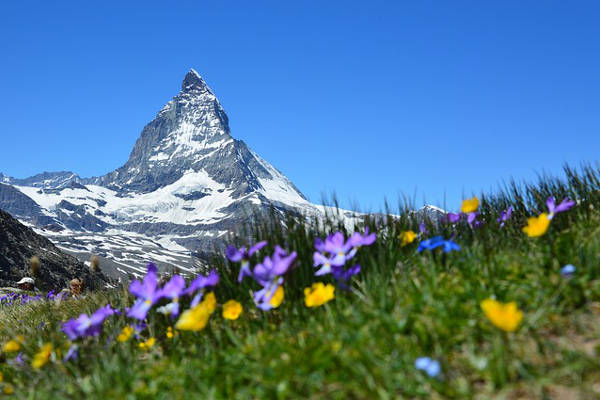
The Swiss Alps, one of the most recognizable symbols of Switzerland, covers around 65% of the country’s surface area, making Switzerland one of the most alpine countries.
Monte Rosa (4,634m above sea level) is the highest point in the Swiss Alps.The region also contains around 1800 glaciers including the largest glacier in the Alps, Aletsch Glacier.
The Swiss Alps is one of the most beautiful mountain ranges in the world .
Austrian Alps
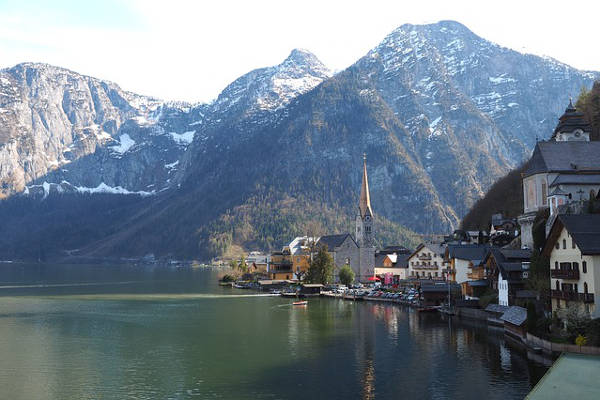
The Austrian Alps, also called the Central Eastern Alps, are situated mainly in Austria but do extend to Lake Como in Italy and adjacent regions in Switzerland and Slovenia.
At 3,979m, Mount Großglocker is the highest point in the Austrian Alps.
French Alps
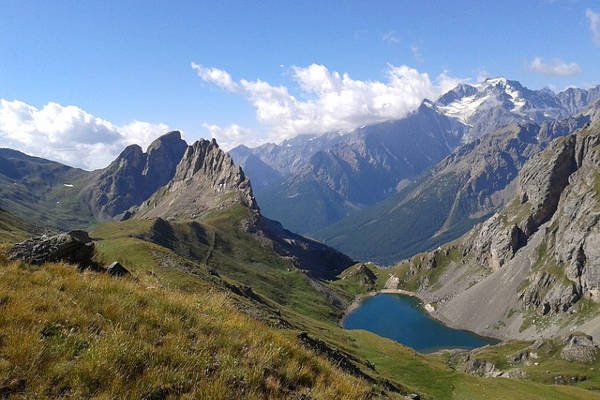
The French Alps are known for their incredible natural beauty. The region is known for its stunning alpine lakes; with the largest being Lake Geneva, Lac d’Annecy and Lac de Bourget. These lakes are year-round attractions due to their beauty and water sport opportunities.
The region is home to famous resort towns like Charmoix, St. Gervais, Albertville, Grenoble and Annecy. The region is also host to Mont Blanc, the highest mountain in the Alps, standing at 4808m.
Italian Alps
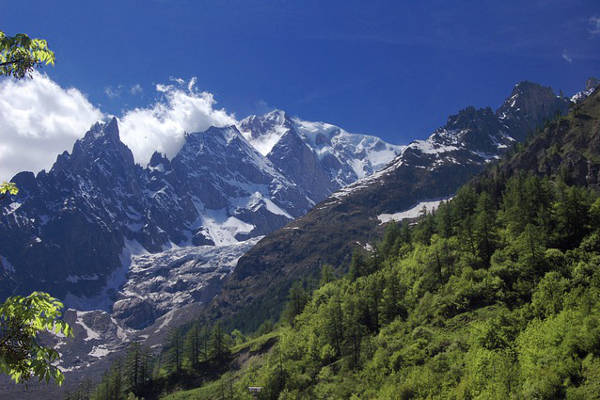
Mount Gran Paradiso is the highest point, at 4,061m. The region is also home to Gran Paradiso National Park, the oldest national park in Italy.
Bavarian Alps
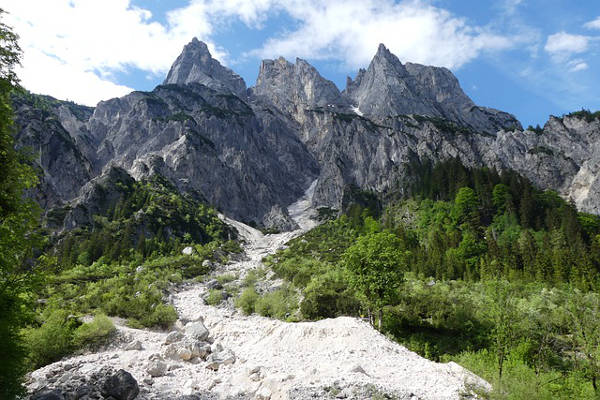
This alpine region makes up less than 10% of Germany’s total surface area, but it is certainly one of the most beautiful landscapes in the country.
Julian Alps
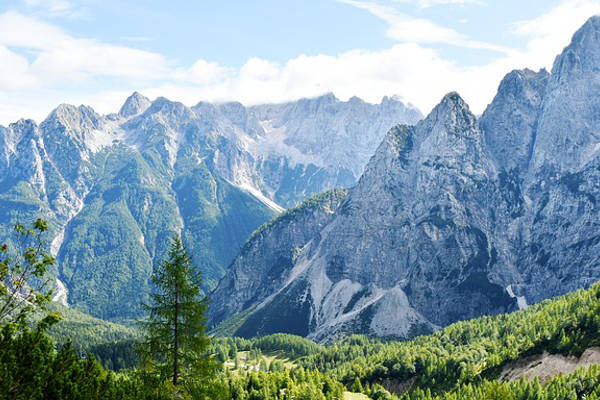
The highest point in the Julian Alps is Mount Triglav at 2,864m. The largest portion of this alpine region is located in the Triglav National Park, home to Mount Triglav . The region offers incredible views, crystal-clear water, alpine valleys, rivers and lakes.
Notable Mountains in the Alps
The Alps are home to 128 summits and subsidiary tops of 4000m above sea-level or higher, they refer to these mountains as ‘four-thousanders,’ 82 of these are ‘official summits’ with the inclusion of 46 ‘lesser summits.’
Here is a bit about the most notable mountains in the Alps.
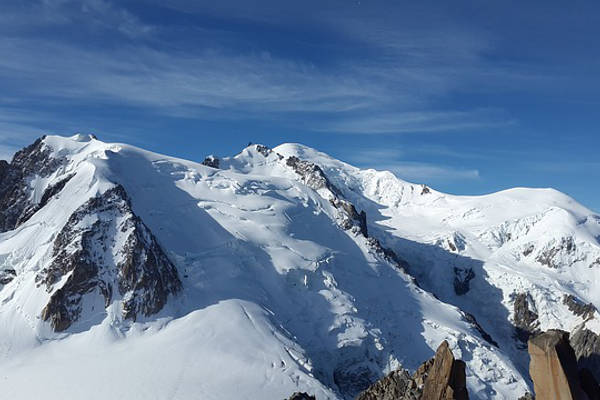
Mont Blanc , meaning ‘white mountain,’ is the highest mountain in the Alps at 4,808m and is ranked 11th in the world in topographic prominence. Mont Blanc is both French and Italian and is considered to be the border between the two countries, however the summit is in the French territory . The mountain stands in the range called the Graian Alps.
The mountain was first summitted in 1786 by Jacques Balmat and Michel-Gabriel Paccard.
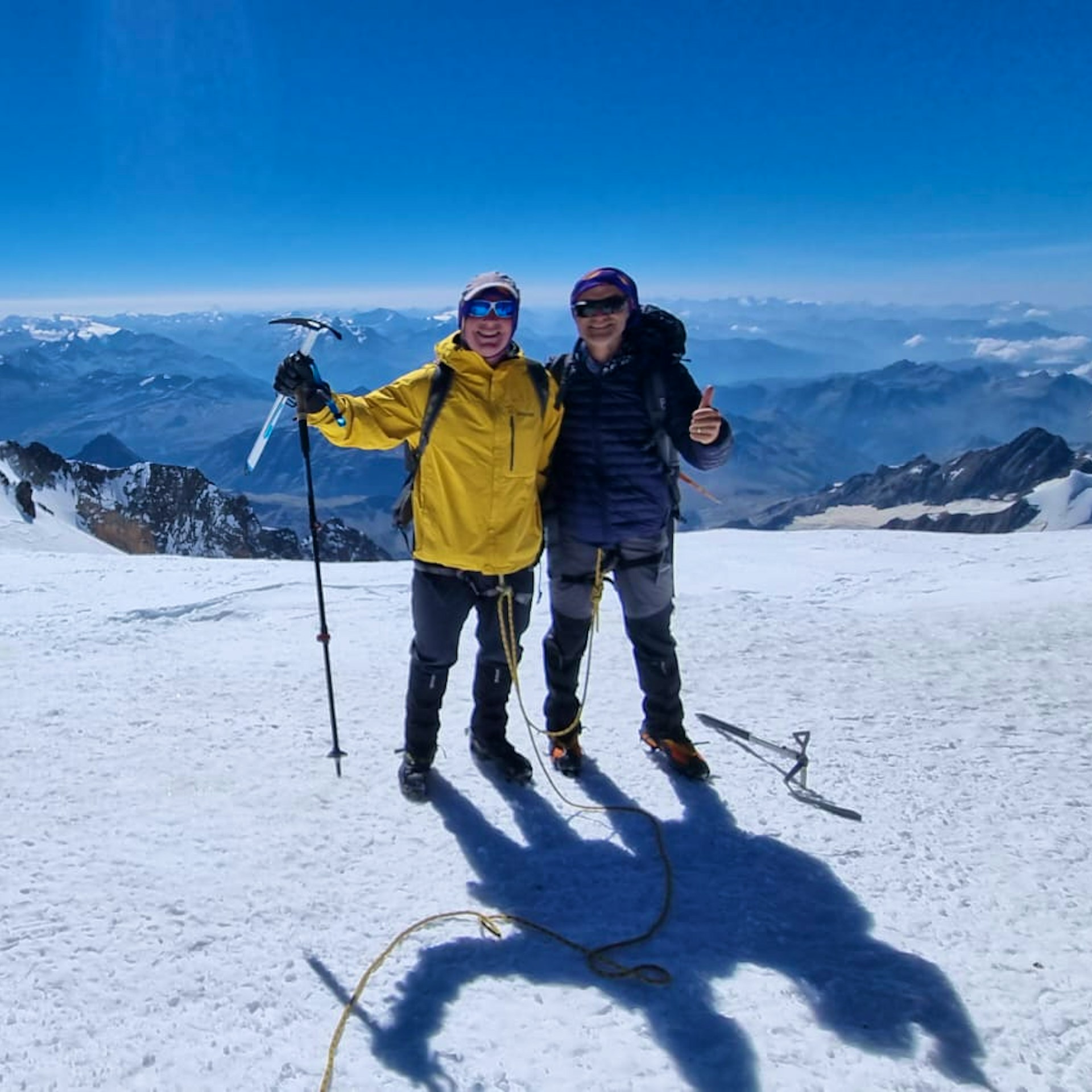
Join a Mont Blanc Summit Expedition
Book with our recommended local guide
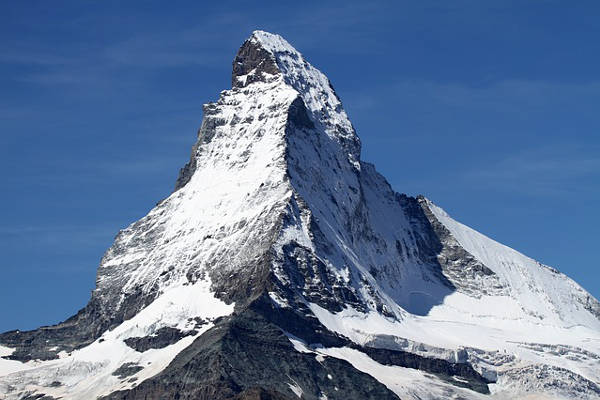
Matterhorn straddles the watershed and border between Italy and Switzerland and is Switzerland’s most famous mountain. The mountain stands at 4,478m which make it one of the highest mountains in the range. Matterhorn has a large, near symmetrical pyramidal peak in the extended Monte Rosa area of the Pennine Alps.
The mountain’s four faces face the four cardinal directions; north, south, east and west. It was first summited in 1865 by a group of mountaineers.
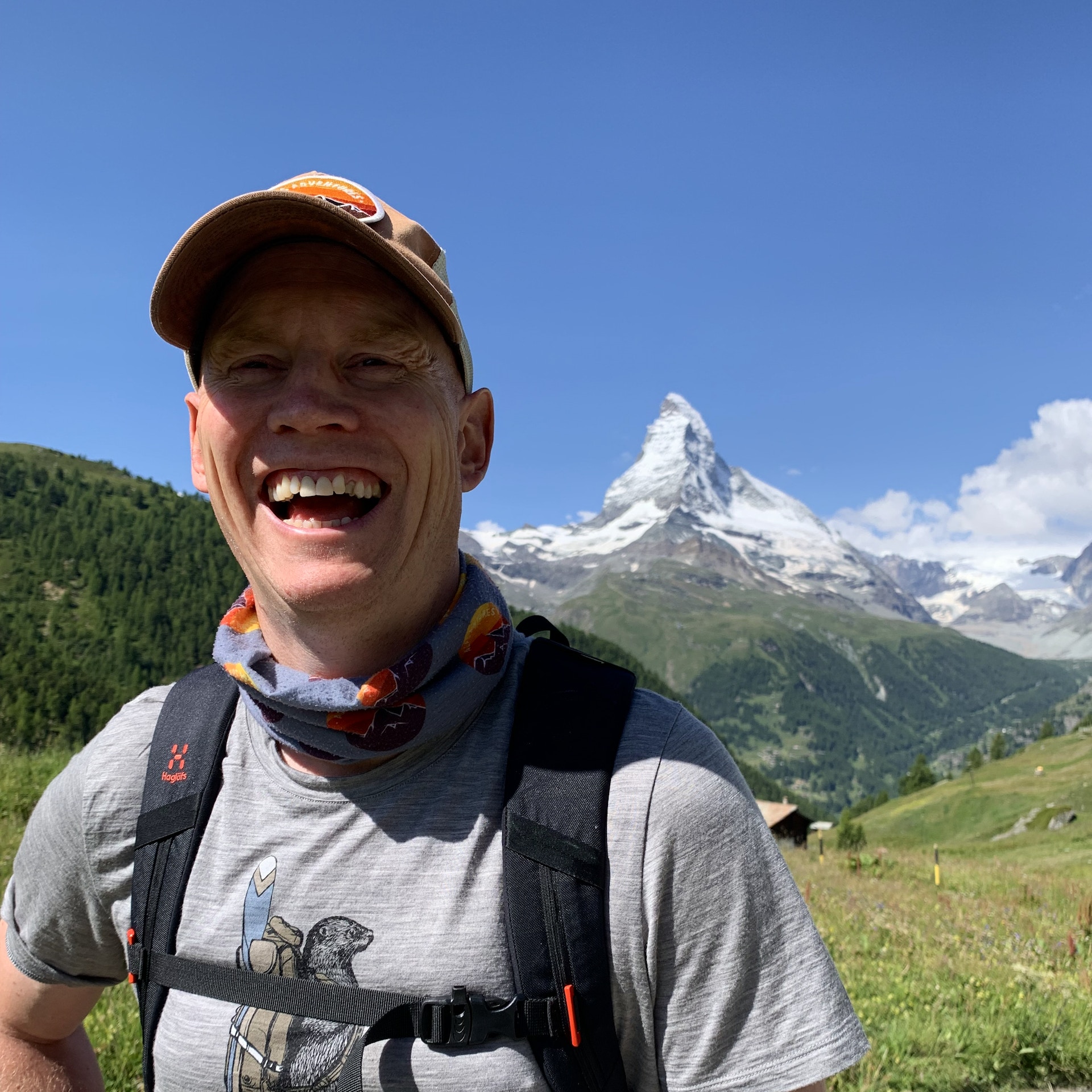
Join a Matterhorn Highlights Trek
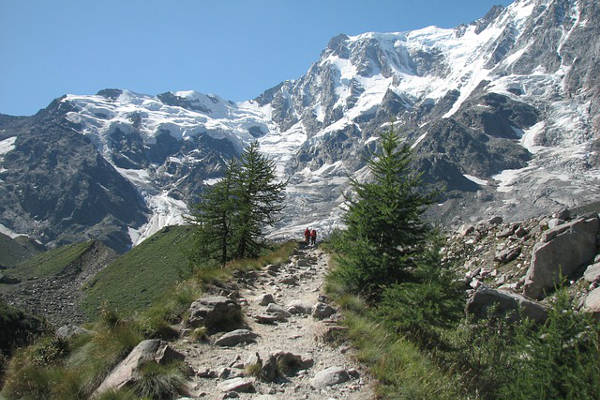
Monte Rosa lies on the frontier of Italy and Switzerland in the eastern part of the Pennine Alps. The mountain is 4,634m above sea-level making it the second highest mountain in the Alps and the highest mountain in the Swiss section. It has 10 peaks higher than 4,000m.
Monte Rosa, which is flanked by glaciers was first summited in August 1855.
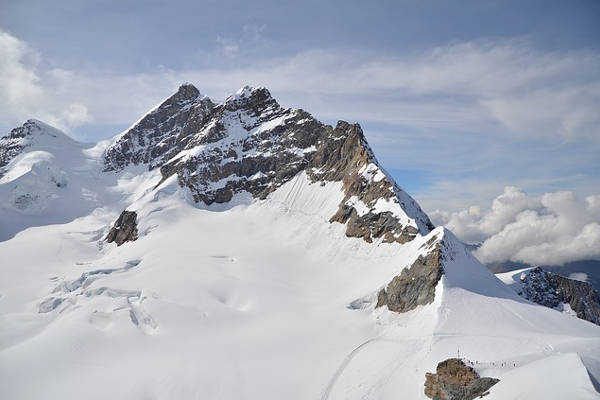
Jungfrau, which falls in Switzerland, is one of the main summits of the Bernese Alps (Jungfrau’s parent range). The mountain is 4,158m tall and is located between the northern Canton of Bern and the southern Canton of Valais.
The first ascent of Jungfrau was in August 1811 on the eastern side by two Swiss brothers.
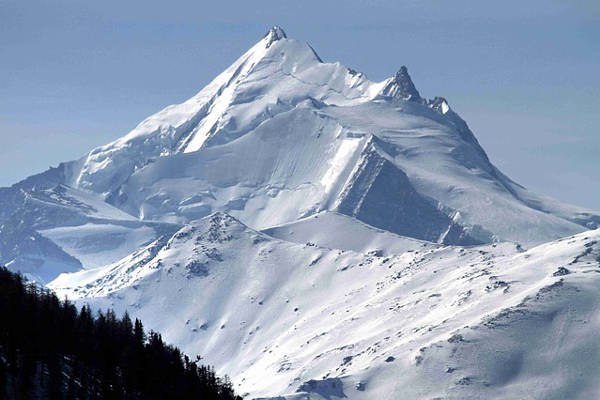
Weisshorn is also located in Switzerland and at 4,505m above sea-level it is a major peak in the Swiss Alps.
Weisshorn forms part of the Pennine Alps and is considered to be the most beautiful mountain not only in Switzerland but in the Alps as a whole. It has a spectacular pyramidal shape and pure white slopes.
It was first climbed in 1861 by John Tyndall and guides.
Notable Hikes in the Alps
The Alps offer some of the greatest supported hiking and walking opportunities in Europe .
The trails are well-maintained, well-marked and connected by hundreds of villages, hamlets, inns and mountain huts where hikers can find accommodation that is clean and comfortable.
You can hike for weeks on end without ever having to carry a tent, sleeping bag, stove or food.
Unfortunately, the hiking season is short, with peak season (where most accommodation is open) is between mid-June to late September.
Tour du Mont Blanc
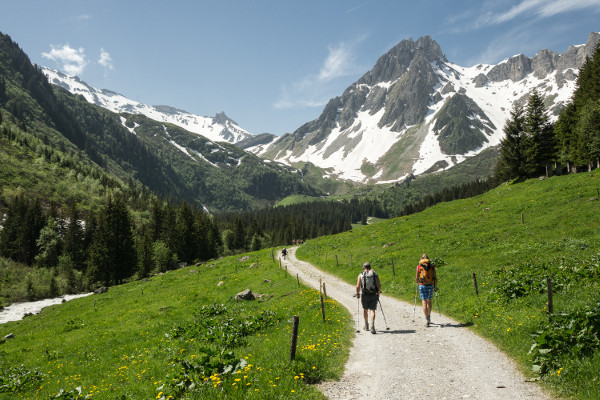
The Tour du Mont Blanc is one of the best hikes not only in Europe but the world. Although physically challenging, the 170km hike boasts the finest views of the tallest mountain in the region.
The 11-day hike gives you the opportunity to experience some of the most picturesque parts of the continent in less than 2-weeks.
The hike will take you through France, Italy and Switzerland from Charmonix in south eastern France through several famous villages in northern Italy.
Accommodation ranges from boutique hostels to luxury ski resorts and rustic mountain huts.
Get a Tour du Mont Blanc Trek quote from our recommended local guides: 10-day full tour and 4-day highlights tour .
Walker’s Haute Route
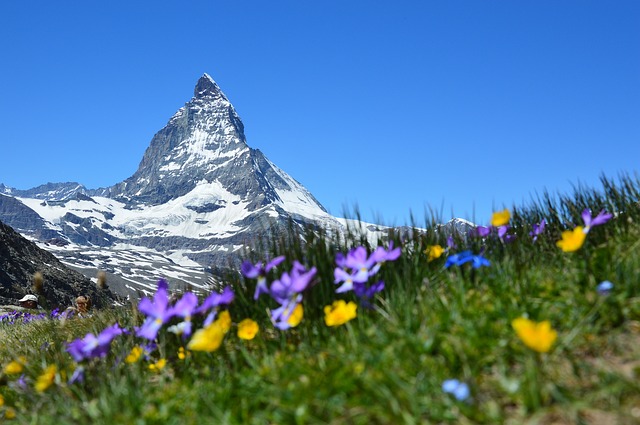
This 180km hike will take you through France and Italy in 14 days.
Although difficult the Walker's Haute hike is astounding, you will experience contrasting landscapes such as snowy peaks, lush green valleys and European villages which offer unique beauty on a very demanding hike.
You will be staying in mountain huts, hostels or hotels.
Tour du Monte Rosa
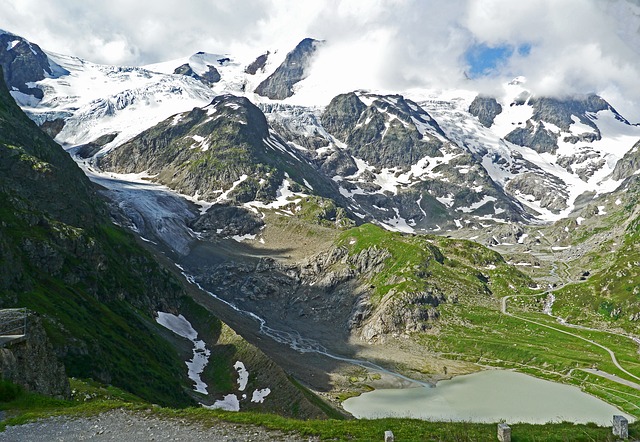
The 9-day hike will take you through the unforgettable scenery of the most popular European mountain range.
The 163km hike across the magical snow kingdom will give you the best views of the awe inspiring ‘four-thousanders.’
The Tour du Monte Rosa hike is considered to be quite difficult, so a good level of fitness is beneficial. Your accommodation along the hike will be mountain huts.
Gran Paradiso
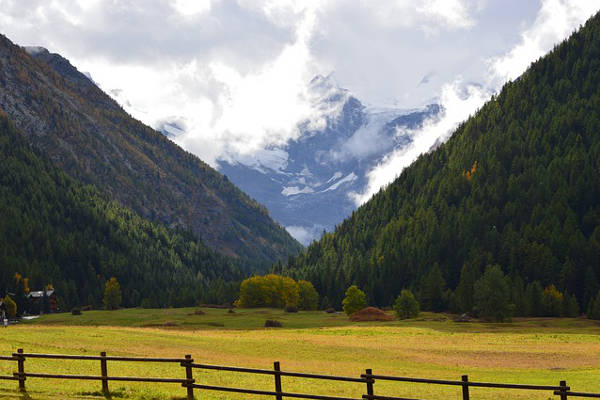
The Gran Paradiso National Park is located in the Alps northwest of Italy and is Italy’s oldest national park. It offers serene valleys and towering mountains. The maximum altitude is 4,061m, which is the summit of Gran Paradiso mountain.
The length and difficulty of the hike vary on which route you take and how long you wish to hike for. There are also hikes in Gran Paradiso that last about a day or two if you’re looking to avoid a great challenge.
The area is remarkably untouched and features empty paths and high passes throughout.
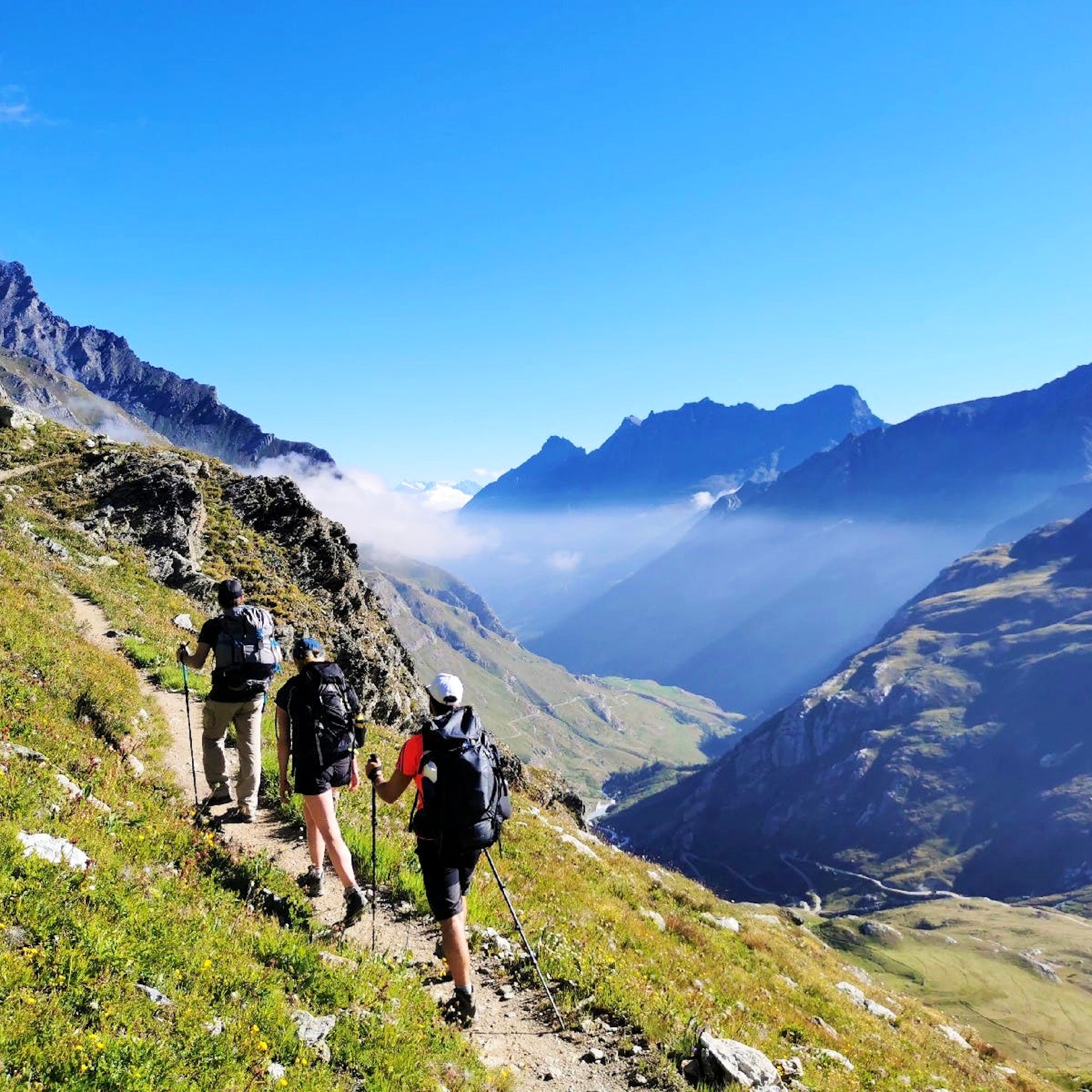
Join a Gran Paradiso Circuit Trek
Book with our recommended local guides
References : Britannica , Wikipedia
Frequently Asked Questions
Which countries are the alps in.
The Alps span through France, Germany, Italy, Austria, Switzerland, Slovenia and Liechtenstein.
Where did the Alps get its name?
In the first century BC, the Alps, or 'Alpes' were thought to have derived their name from the word 'ablus' - which means 'white'. This referred to the white snowy peaks of the mountains.
Why are the Alps important?
The Alps are an important mountain range for many reasons. They form the boundary between the Mediterranean cultures of southern Europe and the Germanic in Northern Europe. They also conserve what is left of the forests that once covered Europe.
How old are the Alps?
The Alps were formed approximately 770 million years ago.
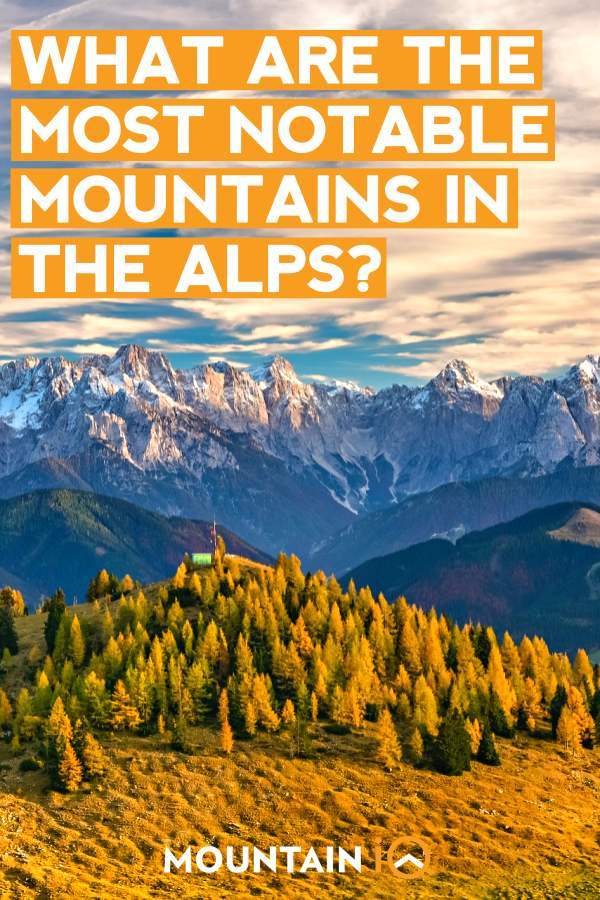
About the author
Mark Whitman
Mark has trekked extensively in Asia, Europe, South America and Africa. He founded Mountain IQ in 2014 with the sole aim to be the best online information portal to some of the most popular mountain destinations around the world. When not writing for Mountain IQ, Mark is out exploring the outdoors with his wife!
Leave a Reply
Your email address will not be published. Required fields are marked
We work with local guides to offer great value adventures at unbeatable prices
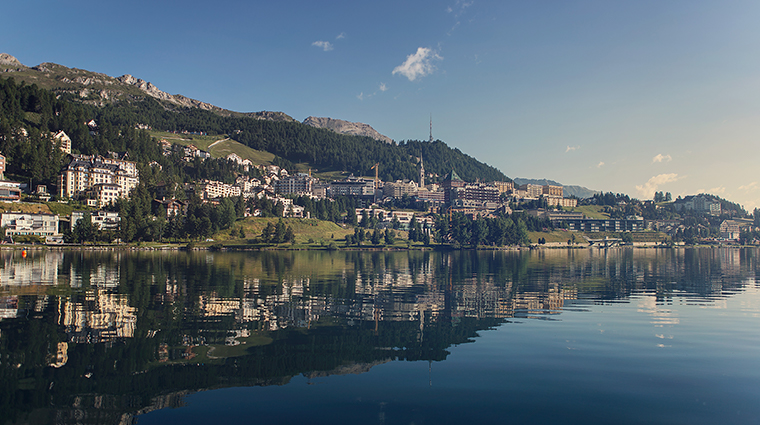
Ever dream of stepping into a gorgeous mountain painting or twirling on a hilltop? More than likely, you’ve conjured up an image of the Alps, the picture-perfect peaks that carve their way through Switzerland, France, Italy and more, creating some of the most idyllic scenery.
Thanks to world-class slopes and a pedigree of famous visitors (Elizabeth Taylor, Robert De Niro and Madonna), postcard-worthy alpine villages like Gstaad, St. Moritz and Andermatt play host to some of the most luxurious accommodations in the region.
But it’s not just internationally renowned ski runs (St. Moritz hosted the Winter Olympics twice) and high-end hotels drawing visitors. Comforting cuisine, a hodgepodge of cultures and even warm-weather activities like hiking continue to attract travelers year after year.

Dreaming of your next trip?
I agree to the Forbes Travel Guide Privacy Policy , Terms , and Cookie Policy . I understand I can withdraw my consent at any time.
Sign up for our newsletter

Swiss, Austrian & German Alps
Snow-capped mountains piercing the sky, Alpine lakes lapping against sun-drenched shores, and a range of outdoor activities to get your heart pumping; it’s no wonder the Alps are among the most popular travel destinations on the planet. Stretching over 750 miles and spanning eight countries, the iconic mountain range displays nature at its best. In summer, Alpine valleys blossom with a verdant array of flora that encircles traditional villages and emerald lakes. In the colder months, waterfalls freeze, lakes frost over, and blankets of snow cover mountainsides, forming a winter wonderland befitting any fairytale.
- Copy Link copied

Photo by Daniel Muller
When’s the best time to go to Swiss, Austrian & German Alps?
The Alps boast activities throughout the year for a whole spectrum of travelers, from mountain thrill-seekers to families on a relaxing break. Winter lures skiers, snowboarders, and shoppers seeking unique gifts at the various Christmas markets. Towns like St. Moritz and Zermatt are full of glitz and glamour, while St. Anton and Verbier appeal to those looking to shred up the piste and then dip into a thumping après-ski scene. In the summer months, climbers tackle a plethora of novice ascents and challenging, multi-day hikes, while cyclists head to the mountainous foothills, where trails wind around shimmering lakes, into forests, and alongside fields of deer, ibex, and other Alpine wildlife. Of course, cities like Salzburg, Innsbruck, Lucerne, and Munich have year-round appeal thanks to their range of cultural offerings.
How to get around Swiss, Austrian & German Alps
Thanks to well-maintained roads and a punctual train system, traveling through the Alps is actually quite easy. Driving through the mountain range can be somewhat of an adventure—especially on the awe-inspiring grand passes in Germany, Austria, and Switzerland—but border crossings require minimal fuss. Just know that you’ll need to show your passport at certain checkpoints, and that each country may have their own highway toll regulations and vehicle licenses to purchase upon entry. Those wishing to explore the region by train can plot their route through Eurail, which offers access to trains all around Europe.
Can’t miss things to do in Swiss, Austrian & German Alps
The Alps boast some of the most sublime lakes in the world, including Lake Constance, which spans Germany, Switzerland, and Austria. Along its 167 miles of shoreline, visitors can find both magical castles and charming towns. Of all the Alpine mountains, the Matterhorn stands above the rest thanks to its almost-symmetrical pointed peak that only the most daring attempt to climb. Other must-see places include the picturesque town of Hallstatt, the Grossglockner High Alpine Road (the highest surfaced mountain pass road in Austria), and the Eisriesenwelt, which is the largest ice cave in the world.
Food and drink to try in Swiss, Austrian & German Alps
While many of Europe’s finest chefs have opened high-end, modern restaurants in the Alps, the region’s traditional cuisine revolves around a few staple dishes. In Switzerland, it’s all about bubbling fondue and dripping wheels of raclette cheese enjoyed in snow-covered Alpine lodges. Austrian fare focuses on hearty meat-and-potato dishes, with Tiroler gröstl (a meat, potatoes, and onion recipe) being a particular favorite, while Germany prefers Weisswurst (thick white sausages) and oversized pretzels. An ancient farming region, the Alps still lead the world in sustainable, small-scale agriculture and organic farming practices, turning out some of the best meats and cheeses in the world. In terms of drinks, beer is a staple, particularly in Bavaria and Salzburg, where the craft brewery movement is thriving. Also popular, however, is Austrian schnaps, a type of distilled fruit brandy produced in the Tyrol region.
Culture in Swiss, Austrian & German Alps
Unsurprisingly, Alpine life very much centers around outdoor adventures. In Switzerland, families spend summer months exploring the mountains, camping by lakes, or sipping locally produced wine until darkness descends in quaint villages. The German and Austrian Alps have a close cultural bond, sharing a strong dedication to Roman Catholicism and a pride for their farms and fairytale castles. Of course, Austrians also enjoy their own traditions, including a love for folk music and brass bands. Come winter, all three countries come alive with Christmas markets and celebrations.
For Families
It’s hard to think of a family vacation as varied as an Alps sojourn. Not only can young ones learn to ski and snowboard under the tutelage of expert instructors, they can also get their adrenaline pumping with backcountry runs and snow-park jumps. The varied trails and winding roads offer never-ending challenges for bikers, while nature reserves provide forays into Alpine wildlife. Families can also look forward to an enchanting range of lakes, as well as roaring rivers for rafters, riverboarders, and kayakers.
Local travel tips for Swiss, Austrian & German Alps
In many Alpine villages, Sunday is a day of rest. Several remain almost completely silent for the entire day but, even during the week, late-night noise is a huge no-no. Up in the mountains, Alpine huts have been providing food and shelter to travelers for centuries, adding a friendly element to backcountry explorations. Language is varied throughout the Alps, with different regions speaking local dialects like Bavarian. Switzerland even has four official languages: German, French, Italian, and Romansh.
Local Resources
- www.myswitzerland.com
- www.myswissalps.com
- www.thelocal.de/tag/Bavaria
- www.bavaria.by
- www.austria.info
Guide Editor
Simon Willis is a travel journalist flirting between Europe and South America. As a keen skier and cheese-lover, Simon has spent much of the last decade exploring the Alps, searching for fresh-powder runs and the finest raclette. When keen for a change, he heads to Colombia and Peru, where he has trained to become a cowboy and lived in an Andean Quechua community. His work has appeared in the Washington Post , The Boston Globe , The Guardian , Sky Delta Magazine , and AFAR , among others. You can find him on Twitter at @simonwillis11.
Top Destinations
- Food + Drink
Explore the best of the world. Access insider tips and hotel recommendations from our travel tastemakers
By proceeding, you agree to our Privacy Policy and Terms of Use .
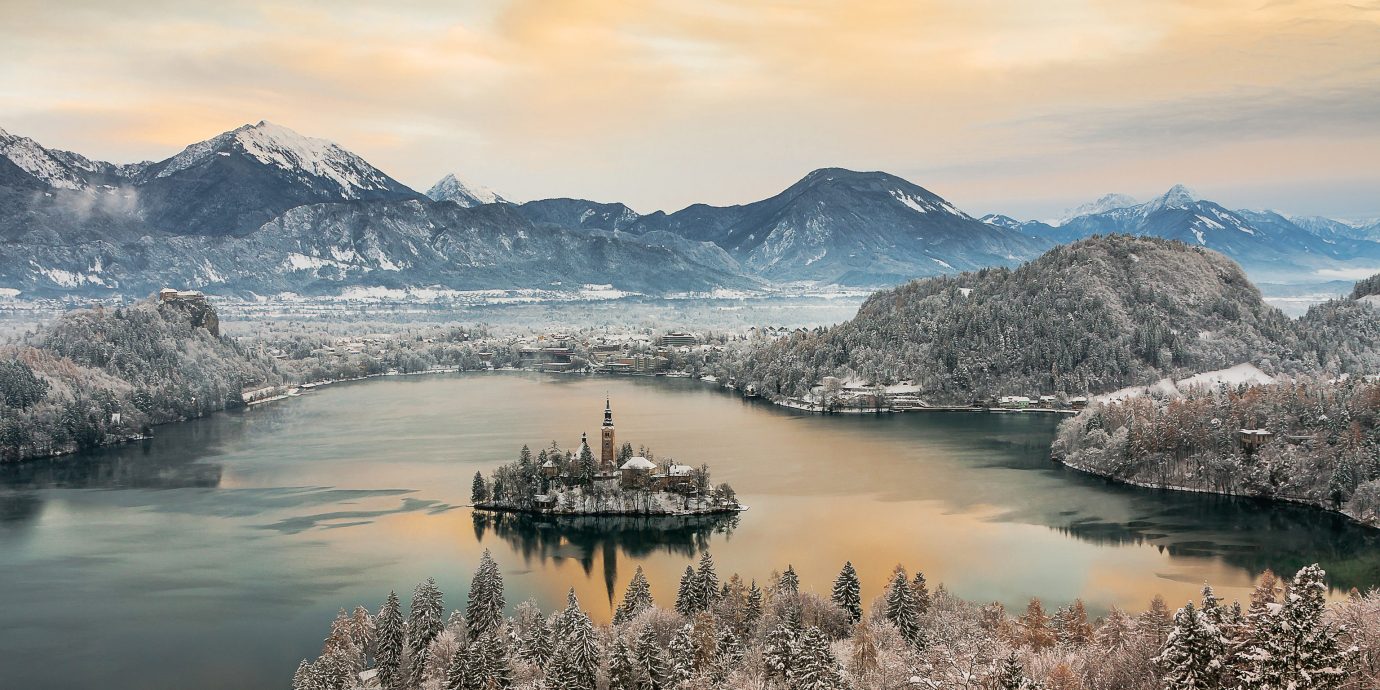
- 1 Mount Lussari Village, Italy
- 2 Lauterbrunnen, Switzerland
- 3 Bled, Slovenia
- 4 Garmisch-Partenkirchen, Germany
- 5 Balzers, Liechtenstein
- 6 Alpbach, Austria
- 7 Chamonix-Mont-Blanc, France
The 7 Most Charming Alpine Villages
The hills are alive with… well, you know. The Sound of Music ’s scenic set may epitomize the Alps, but the film only shows one small Austrian area. As Europe's largest and highest mountain range, the Alps span eight countries, including France, Italy, Switzerland, Monaco, Germany, Slovenia, Lichtenstein, and yes, Austria. Here, we’ve scouted the region’s seven most cinematic towns.
Chelsea is Brooklyn-based travel writer, editor, and photographer. When not home eating her way through NYC, she's gallivanting across the globe, sailing the coast of Croatia or hiking the peaks of Peru. Her superpowers include booking flight deals and sleeping in small plane seats.
See recent posts by Chelsea Bengier
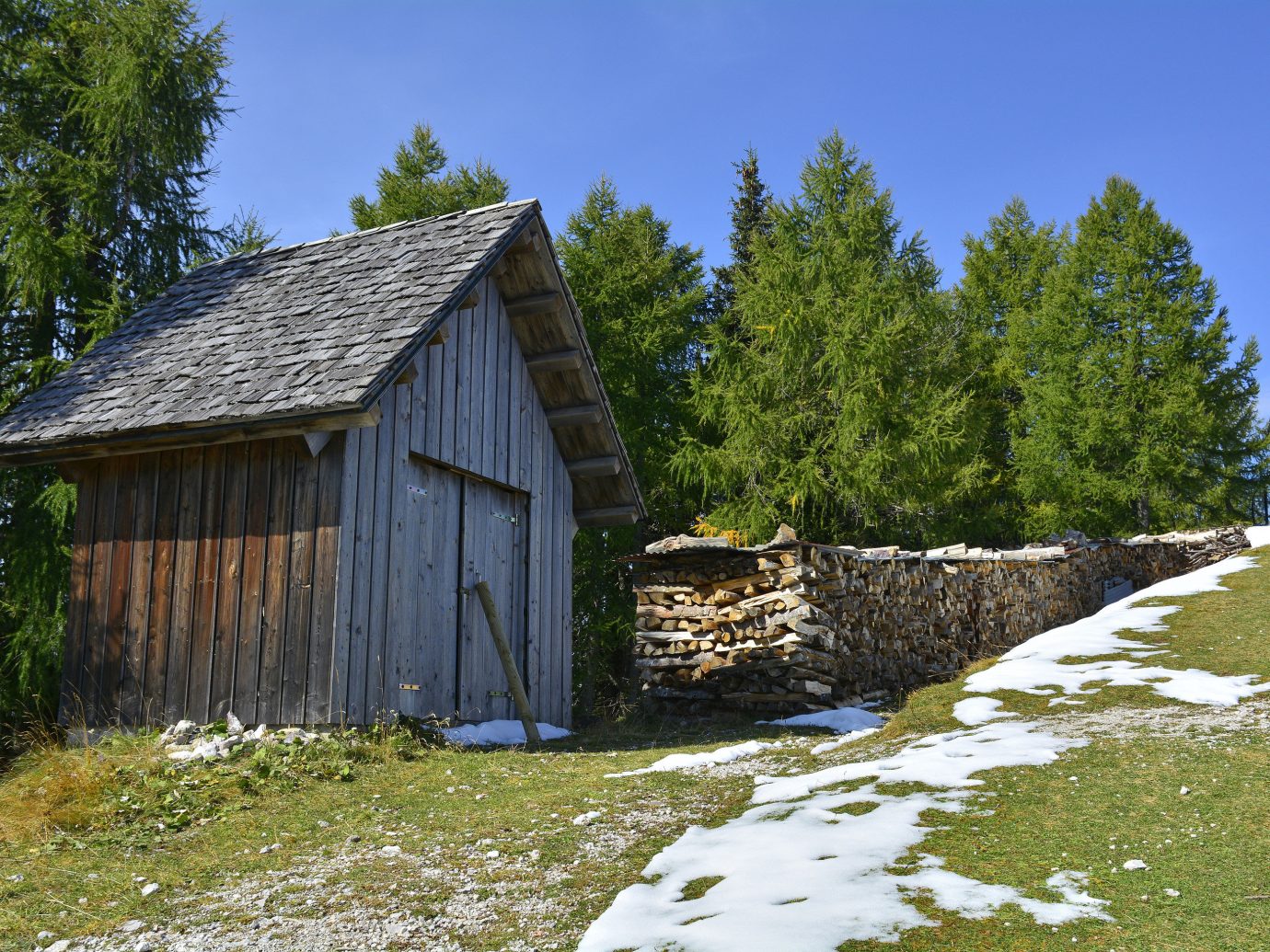
Mount Lussari Village, Italy
After riding a 15-minute lift up to the Borgo Lussari summit, travelers will find something unexpected: the magical 16th-century Sanctuary of the Virgin Mary . Legend has it that a vision of the Madonna appeared on the mountaintop, and shortly thereafter a chapel was built. The ruins of the original 1360 church are now buried beneath the foundation of the sanctuary, but even today many worshipers make the pilgrimage to see the spiritual site, which teeters over the forested Valcanale and Tarvisio basin below. Meanwhile, the village itself has plenty of its own pursuits, including a challenging ski run and cozy taverns serving homemade goulash.
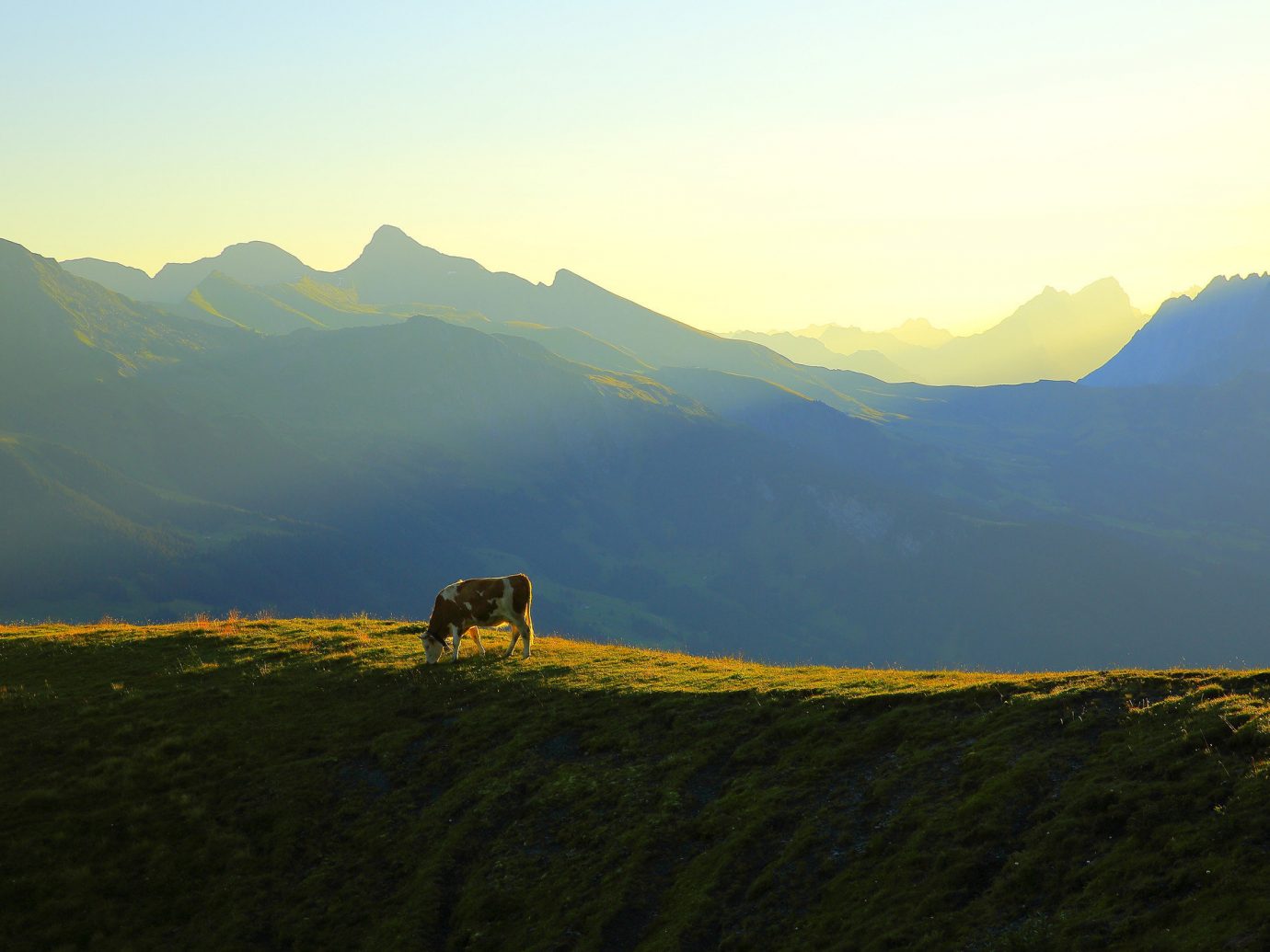
Lauterbrunnen, Switzerland
Set in a valley of the Bernese Oberland, Lauterbrunnen looks like it’s something out of a fairytale. A charming yellow train connects the hamlet to Interlaken, just 20 minutes away, and Jungfrau , a craggy, snow-capped peak known as the Top of Europe. Hikers who stop at Lauterbrunnen will find rustic Swiss chalets, wildflower meadows, and a 1,000-foot waterfall—one of 72 in the area—that cascades from a cliff near the edge of town.
RELATED: The Most Charming Towns in Switzerland
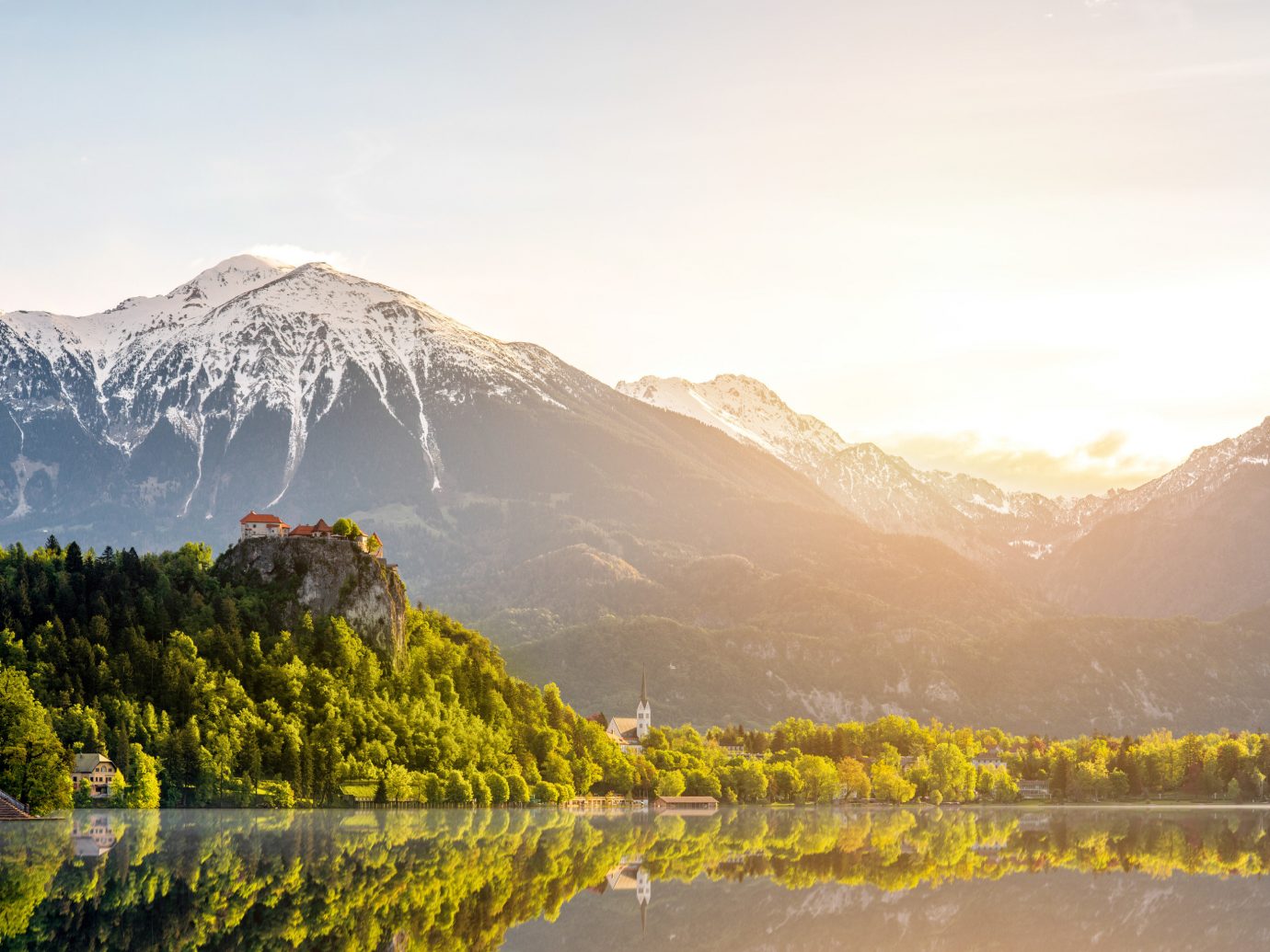
Bled, Slovenia
Bled’s storybook shores are one of the most underrated sites in the region. Explore the medieval 11th-century clifftop castle , or take a pletna (traditional wooden boot) to the tiny island at the center of the crystalline glacial lake, where there is a spired church that dates back to the 1400s. Before the chapel was built, the island was home to a 9th-century pagan temple honoring the ancient Slavic goddess of love.
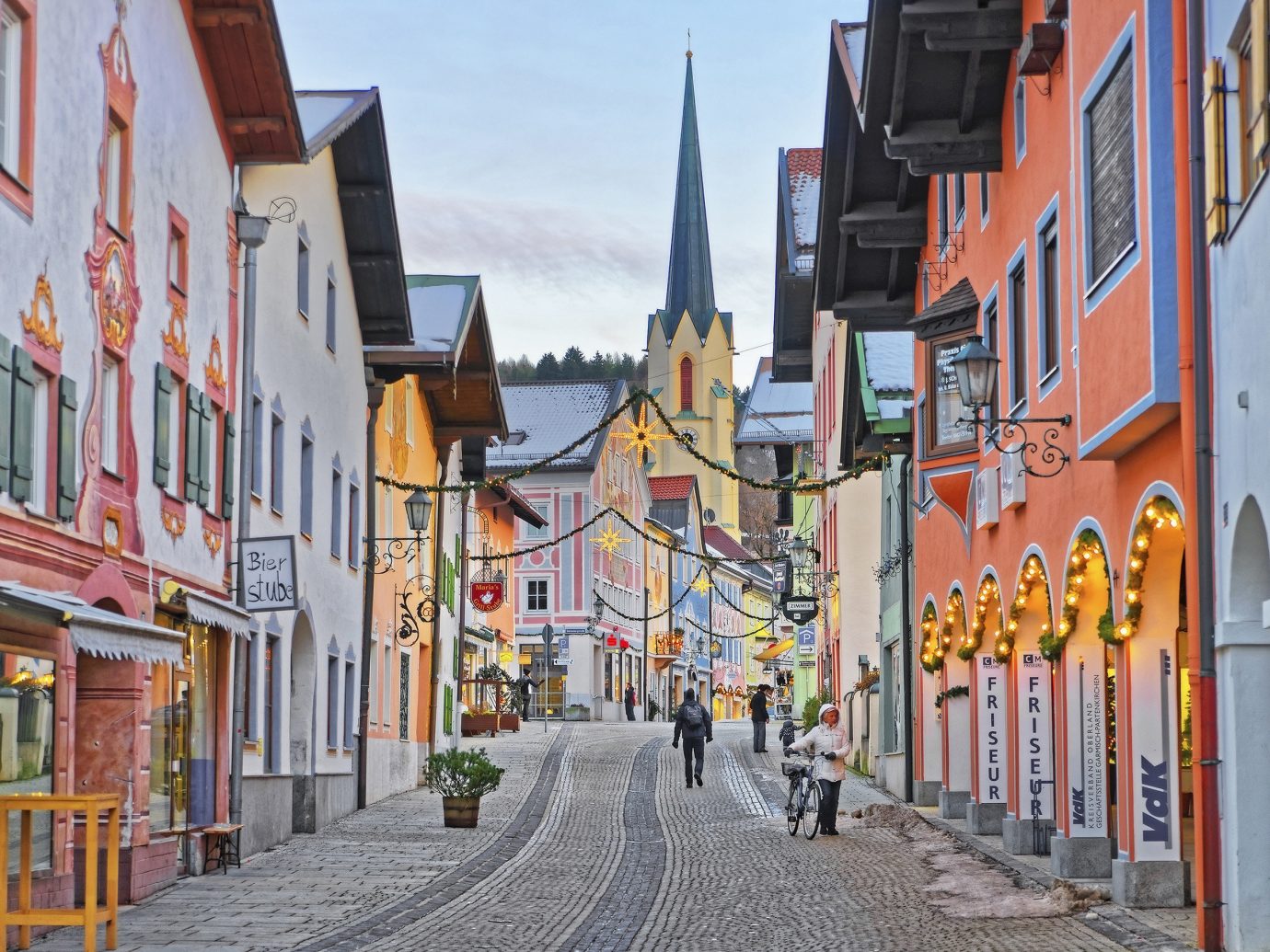
Garmisch-Partenkirchen, Germany
Bavarian buildings covered with colorful murals and flower window boxes line the cobblestoned streets of Garmisch-Partenkirchen. The alpine enclave is surrounded by opulent palaces, historic monasteries, and striking gorges. Just 20 minutes away, you’ll find the Linderhof and Schachen estates, the Ettal and Benediktbeuern abbeys, and the Walchensee and Kochelsee lakes. If you’re up for the trip, an hour’s drive will land you at Neuschwanstein , a 19th-century Romanesque Revival fortress that was the inspiration behind Walt Disney’s Sleeping Beauty and Cinderella castles.
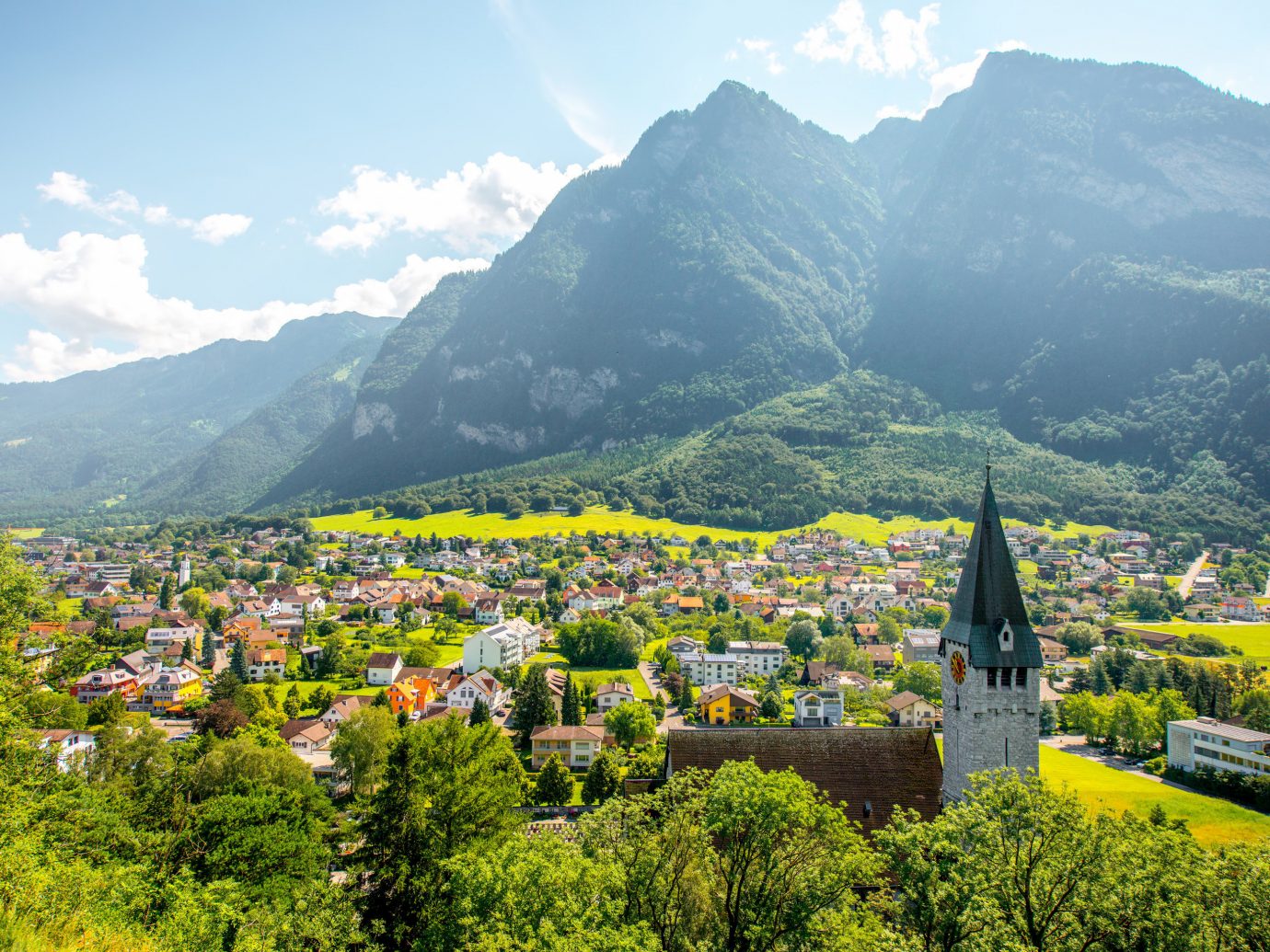
Balzers, Liechtenstein
This stamp-sized country sure knows how to pack a punch. Balzers stands out thanks to its scenic location: nestled along the Rhine River in the verdant Neckar Valley, the town is connected to its neighbors by a 230-mile bike path. On a hilltop in the center of the community rises the striking Gutenberg Castle , which was built around 1100. Today, the free Castle Museum offers falconry lessons, forest walking tours, sword-fighting seminars, and exhibits on the Middle Ages.
RELATED : 15 Secret European Villages You Have to Visit
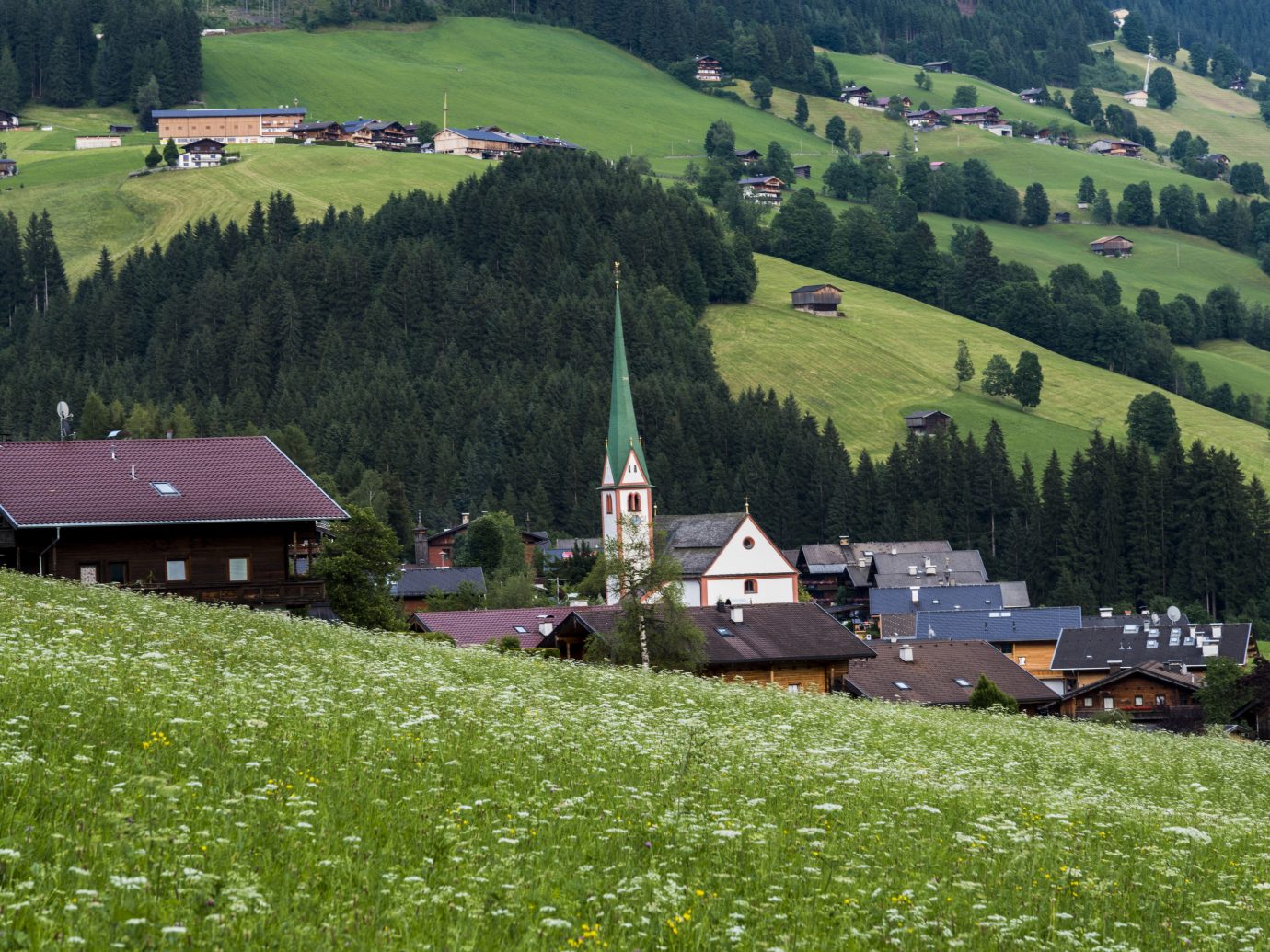
Alpbach, Austria
We’re not ones to judge, but when a place titles itself the most beautiful village in all of Austria (an accolade it has held since the ‘80s), it’s pretty hard to disagree. Every year, thousands of people visit this secluded Tyrolean town to take in its wooden lodges, cute white churches, and miles of untouched alpine landscape. Of course, the slopes are the big draw here—so grab your skis and hit the trails around the neighboring Ski Juwel resorts.

Chamonix-Mont-Blanc, France
Want to know where France’s rich and glamorous go to après-ski? Look no further than Chamonix, a glitzy ski resort town at the base of Mont Blanc, the highest summit in the Alps. The 1924 Winter Olympics were held here, and it has gained popularity ever since. Today, it has six ski areas, world-class hotels, and a Baroque village with high-end boutiques and brasseries. For a bird’s-eye view, take the gondola to Le Panoramic , a sprawling glass-walled terrace on the tip of Le Brévent, or to Aiguille du Midi’s rustic-chic mountaintop restaurant, Le 3842 , which dishes up foie gras with truffle sauce, escargot with morel mushrooms, and wild boar with a Burgundy wine glaze.
What to Pack
Women’s winter outfit to wear in a snowy scape, shop the look.
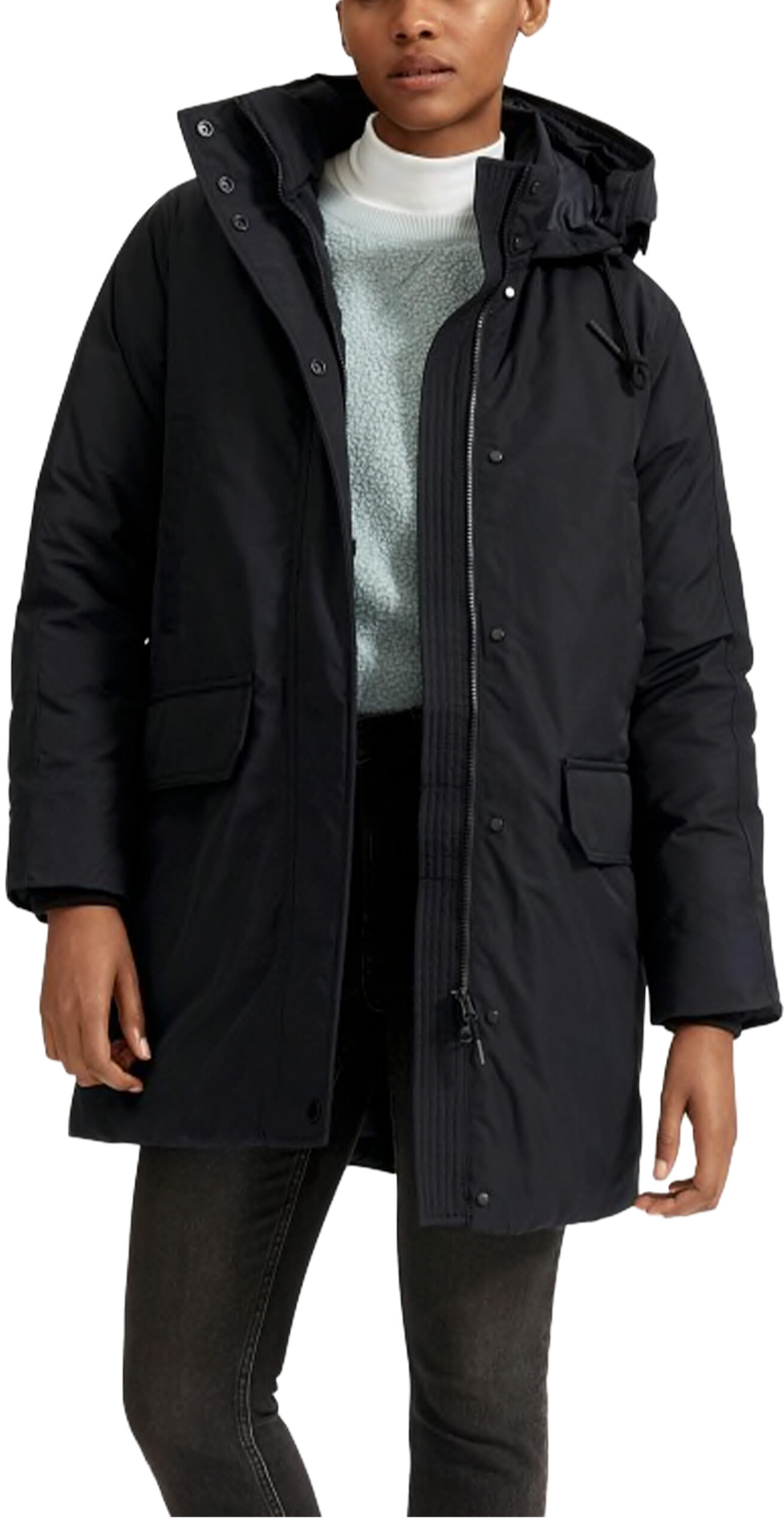
Phone Case Wallet
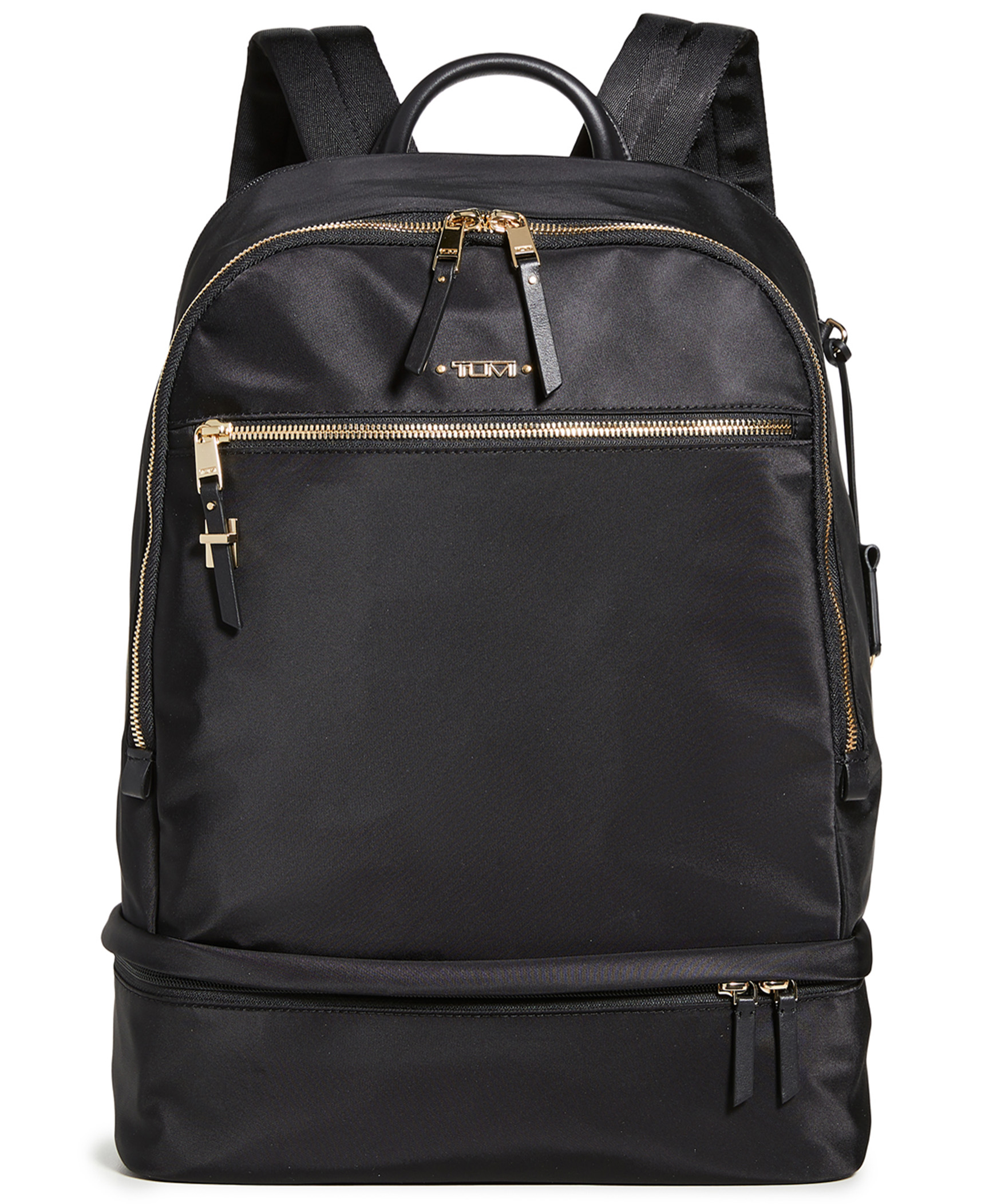
Chelsea Boot
Men’s winter outfit to wear in a snowy scape.


Aviator Coat
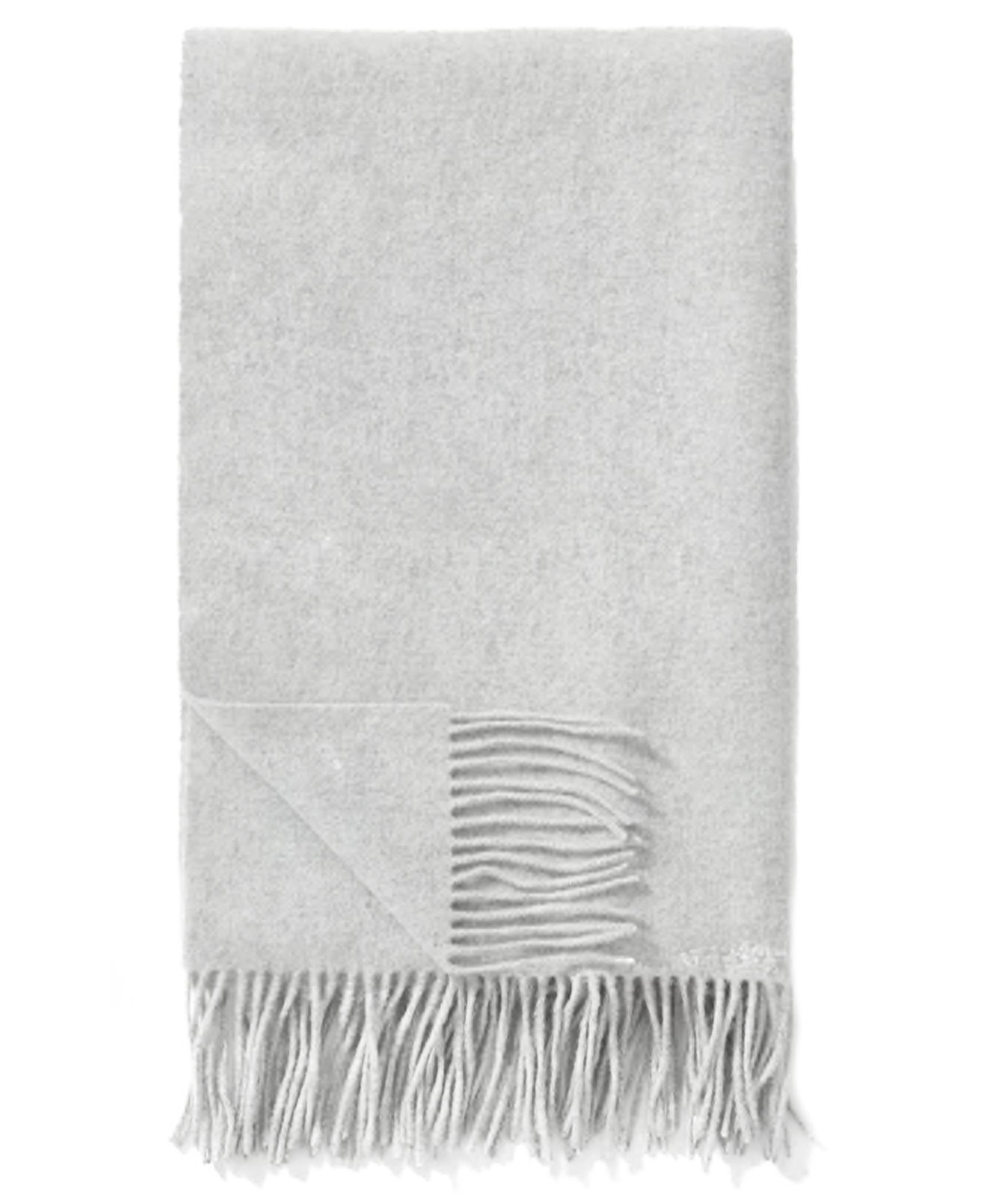
Wool-Cashmere Blanket Scarf
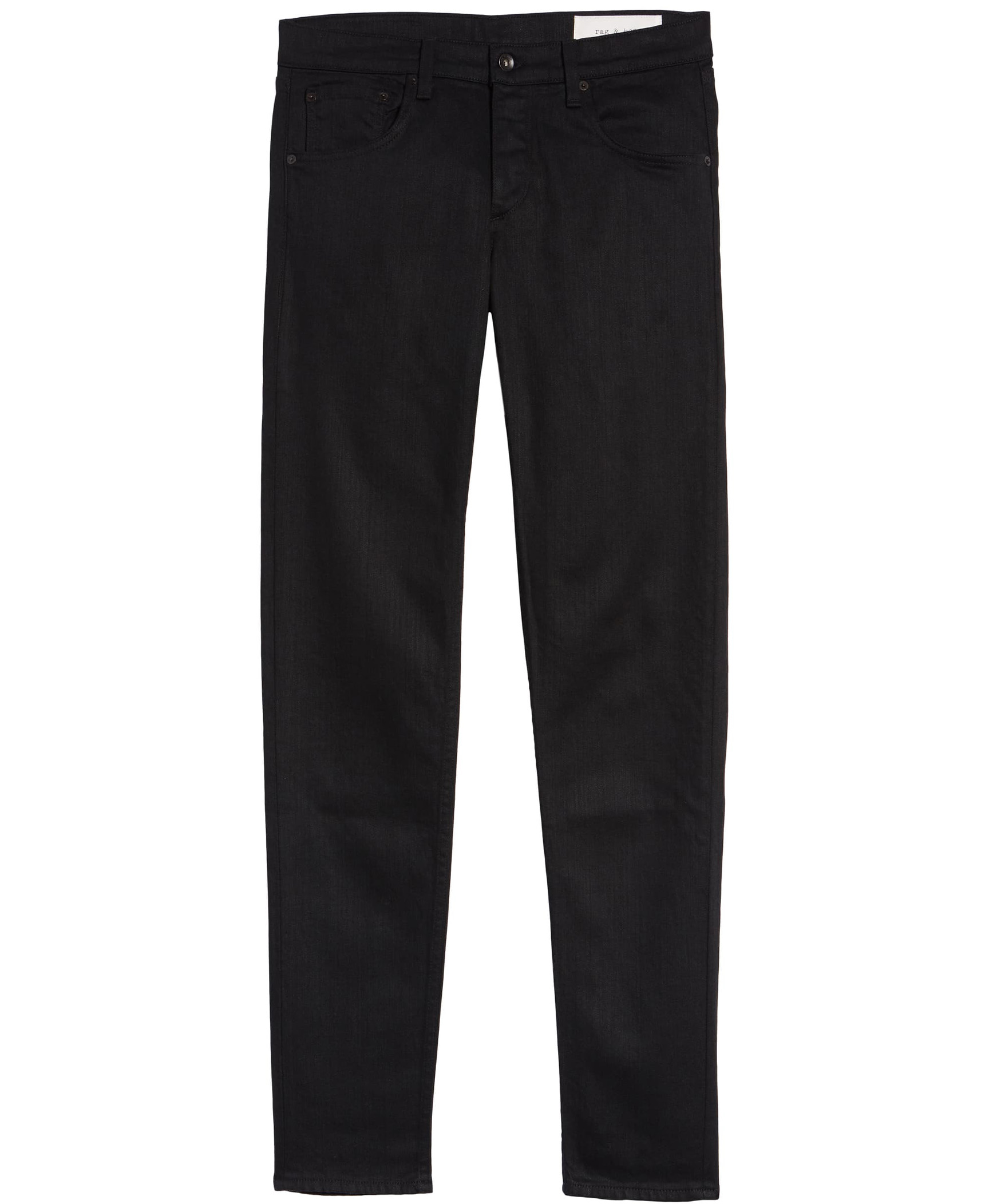
Skinny Fit Jeans
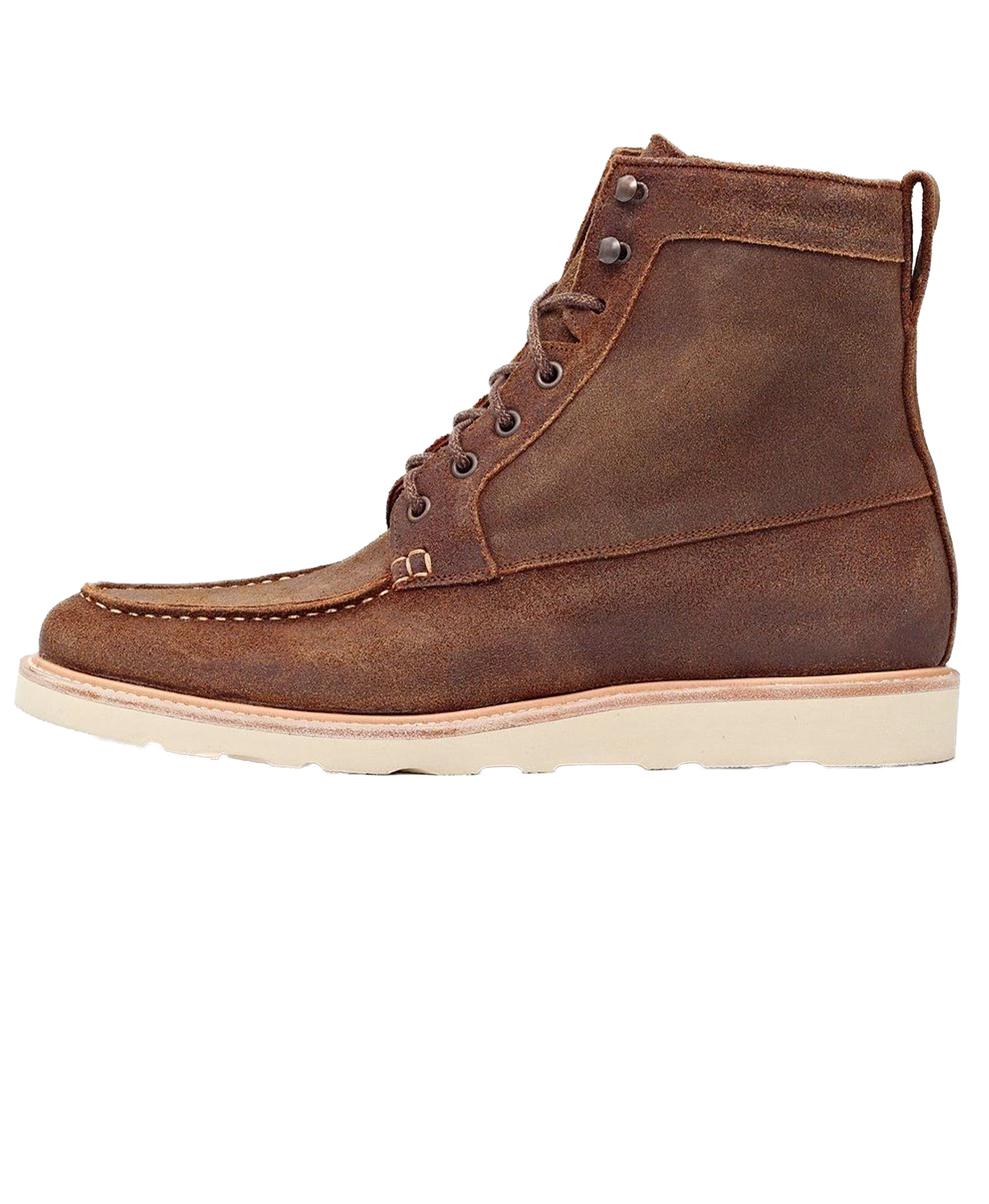
All Weather Boot
Women’s nice winter outfit for the catskills.
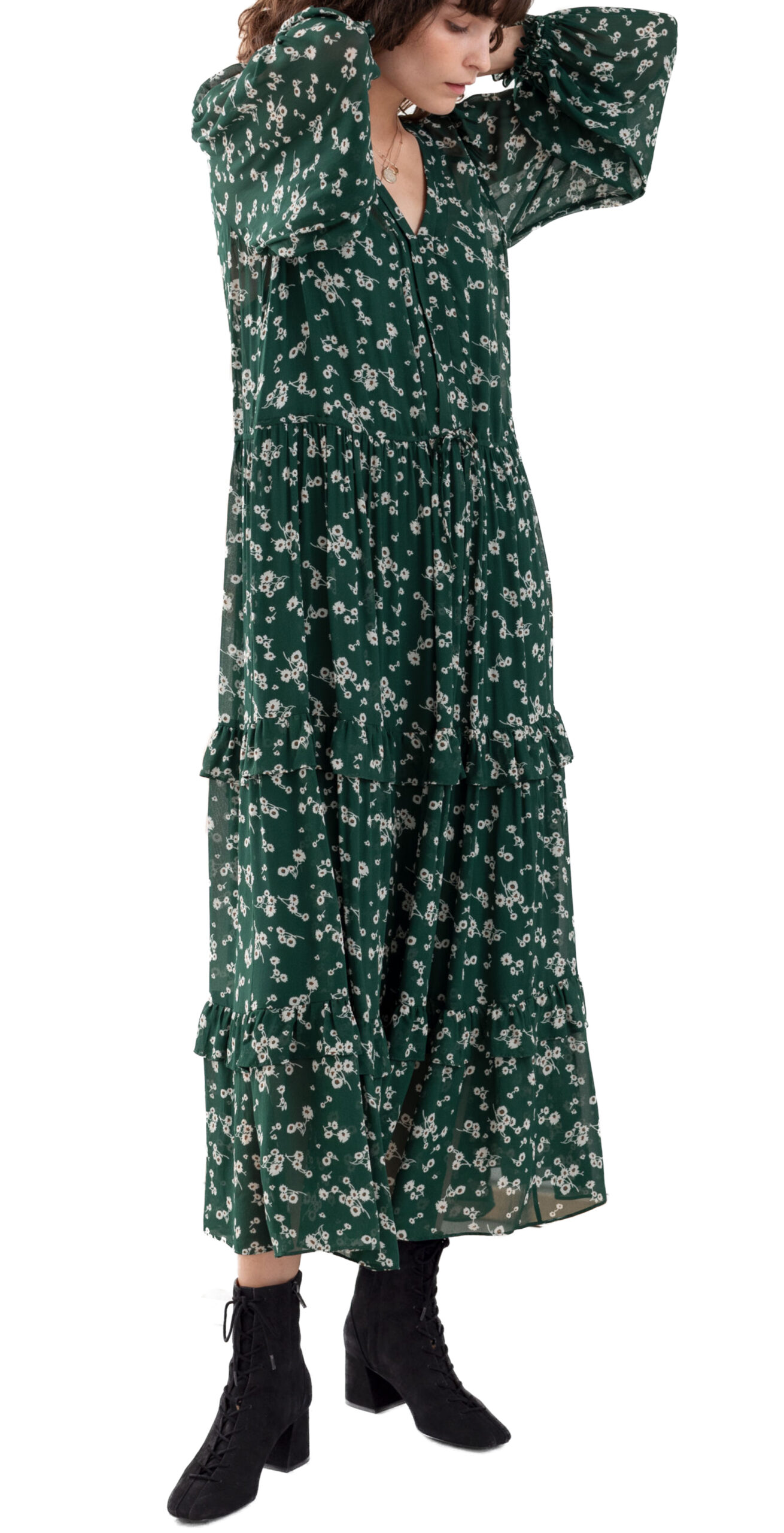
Floral Dress

Flower Balm
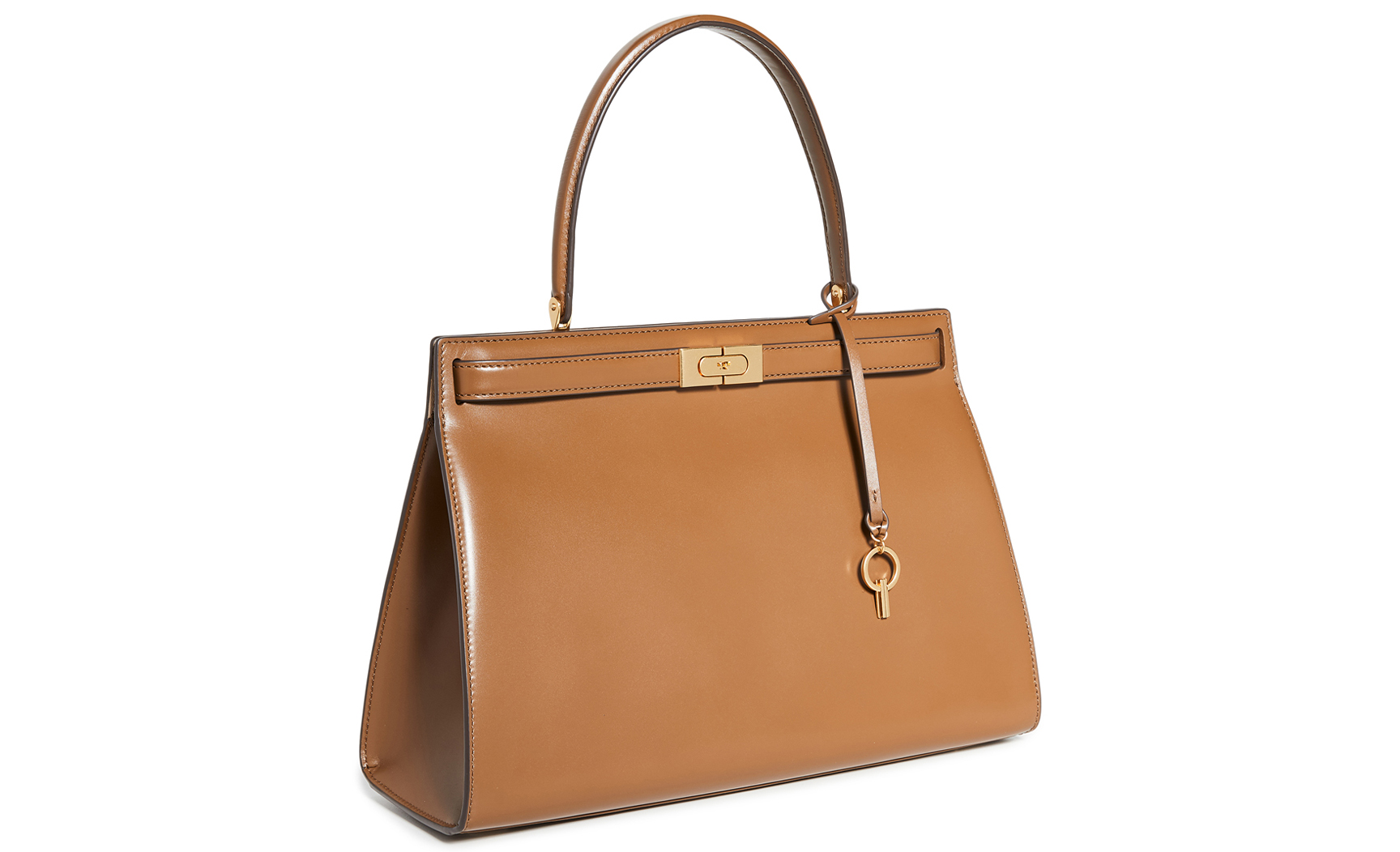
Heeled Boots
Men’s cozy outfit for a cabin in winter.
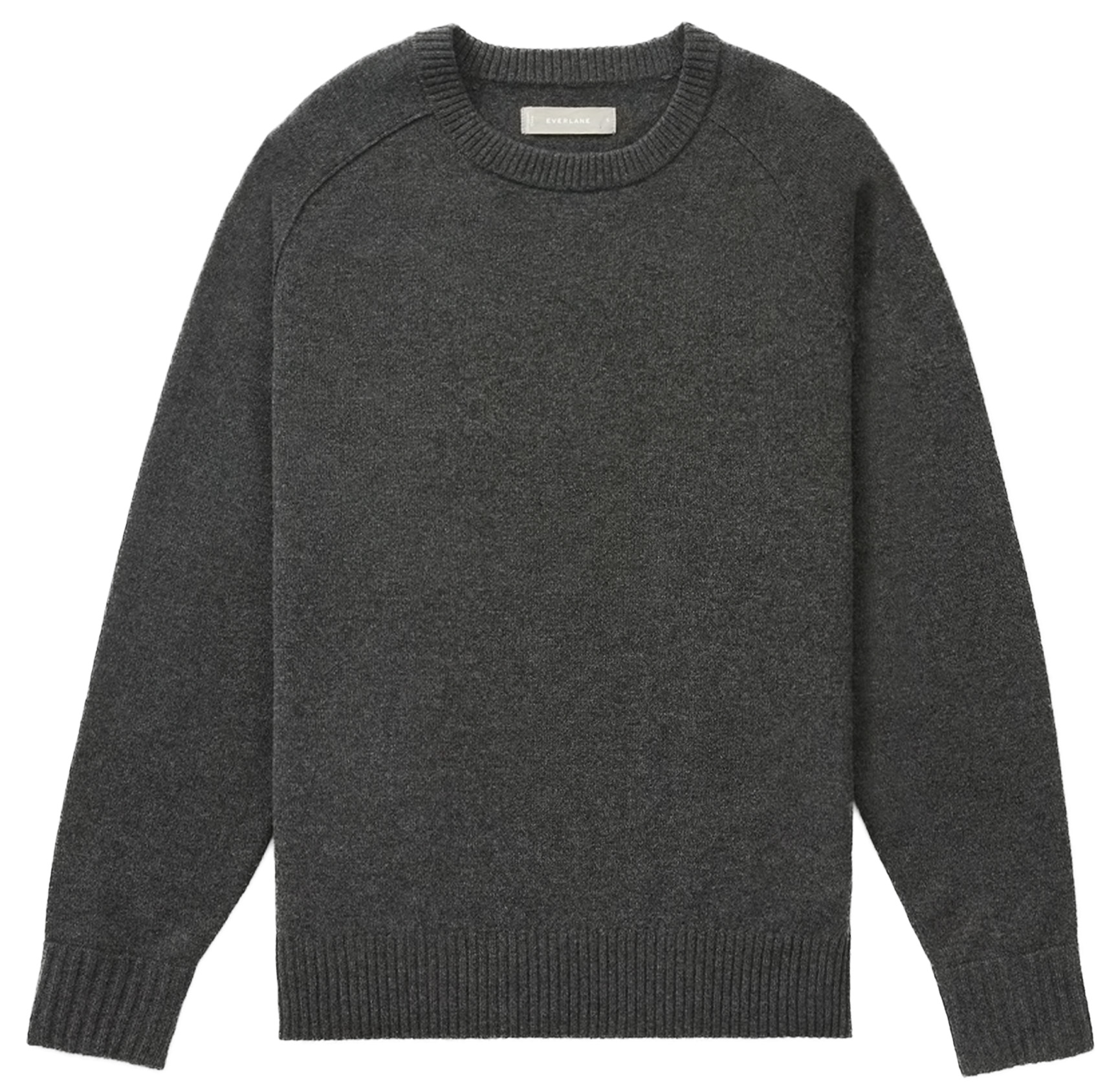
Cashmere Crew
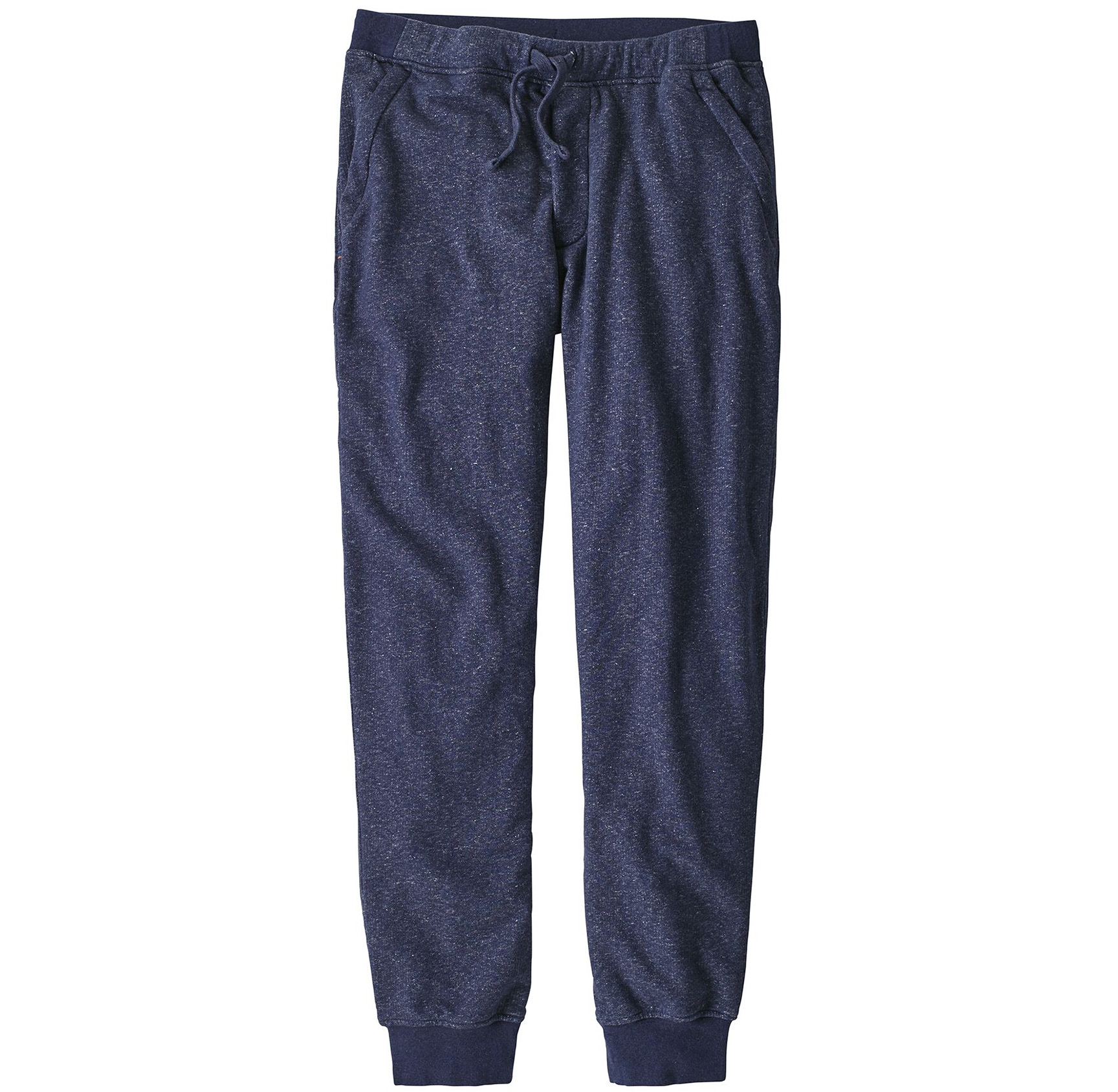
Fleece Pants

Cashmere Scarf
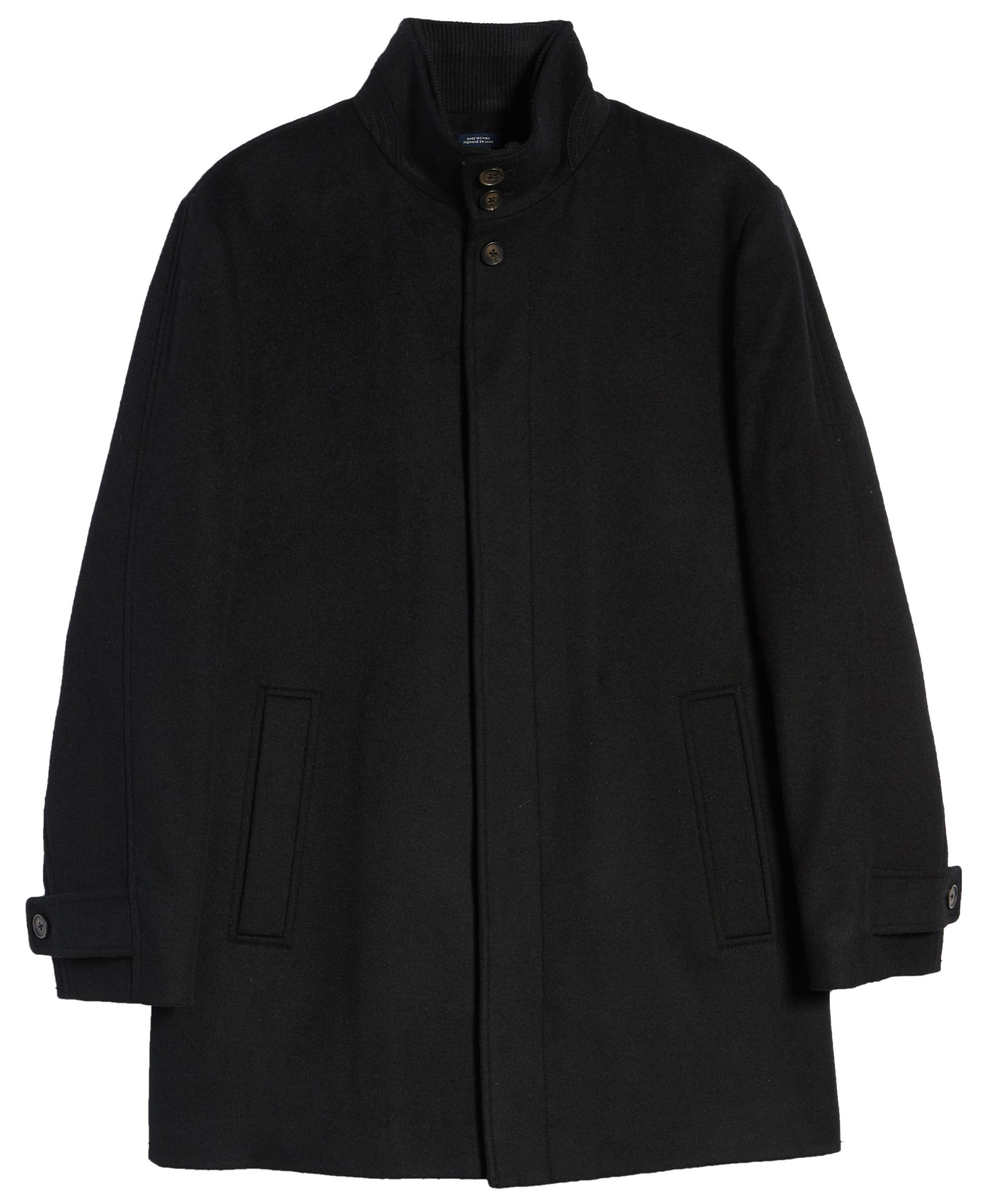
- 10 Romantic Hotels in Europe We Can’t Stop Dreaming About
- America’s Best Winter Weekend Getaways
- The 9 Best Mountain Towns in the U.S.
All products are independently selected by our writers and editors. If you buy something through our links, Jetsetter may earn an affiliate commission.
Become a Jetsetter.
Use our insider connections to know where to go and what to do.
Thanks for Signing Up!
Related Tags
Explore more.
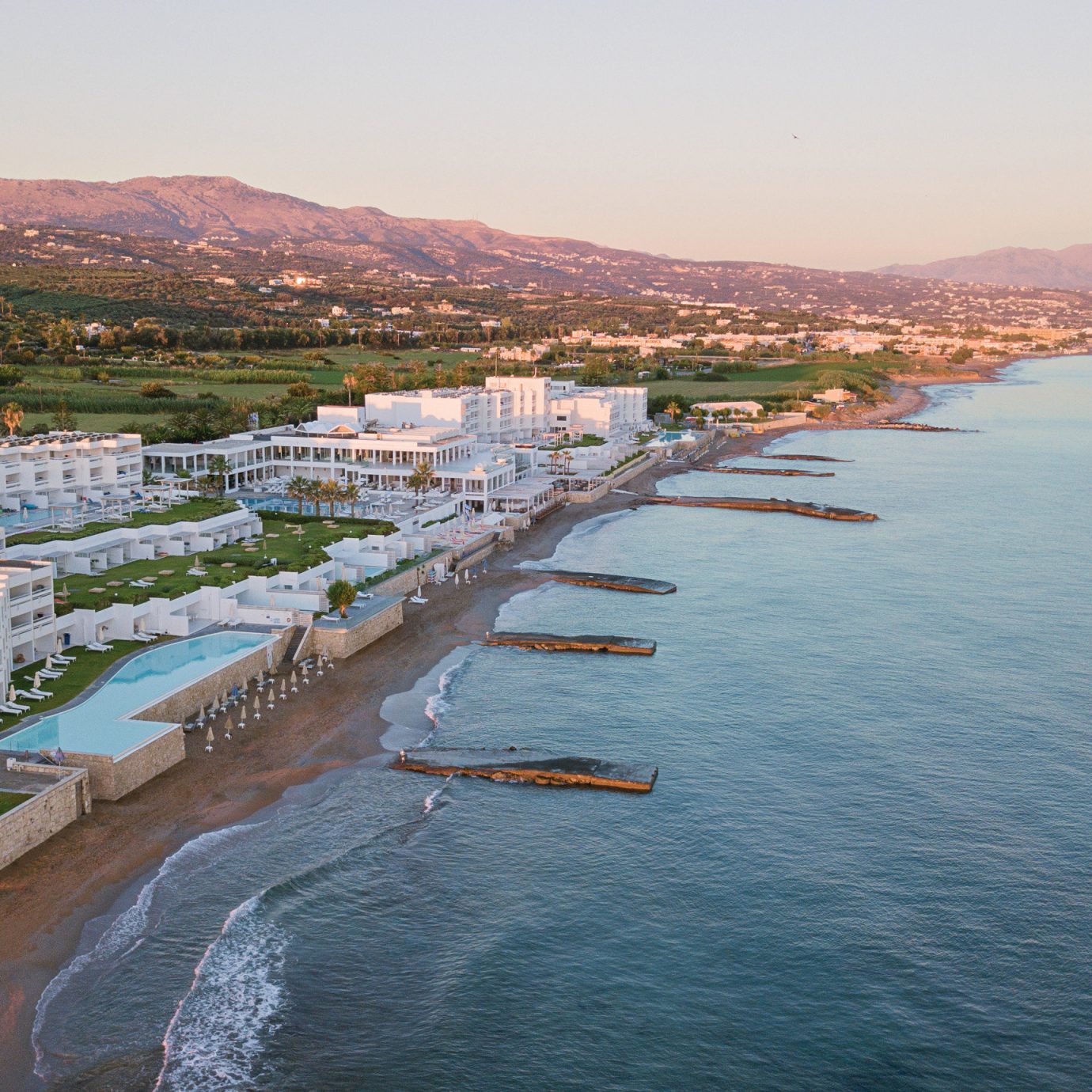
The Best All-Inclusive Resorts in Europe
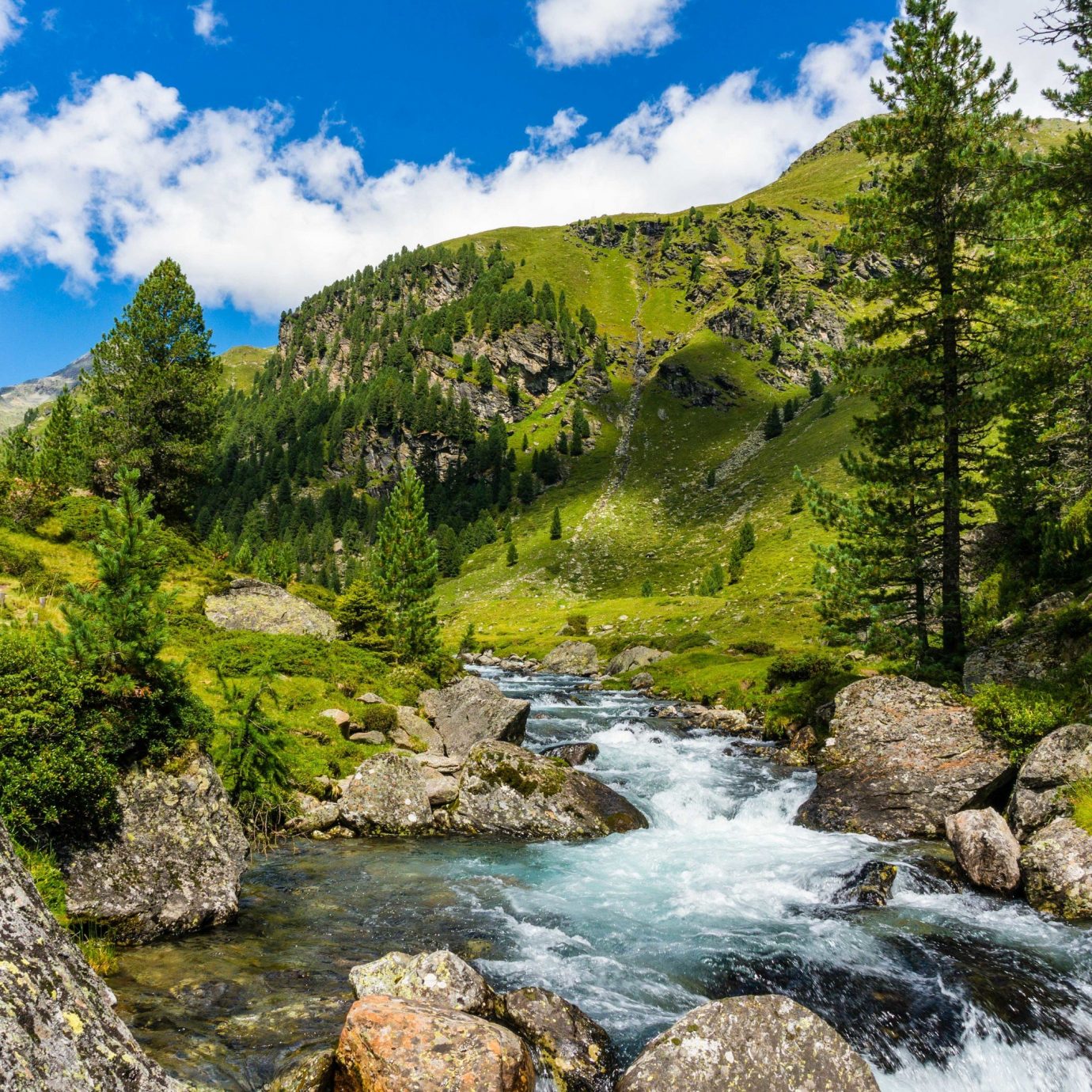
7 Best Countryside Getaways in Europe
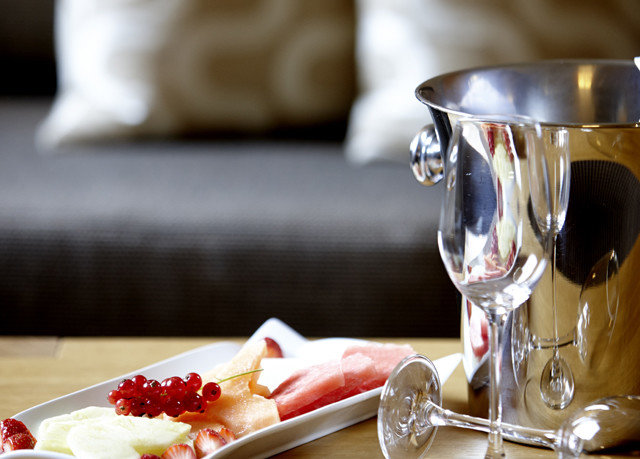
Hotel Innsbruck
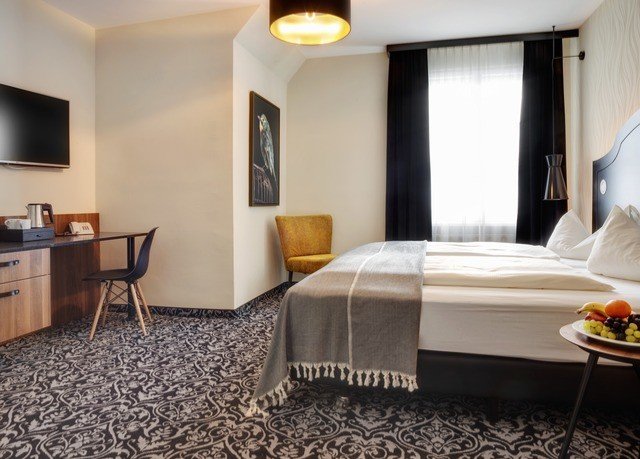
Hotel Grauer Bär
- TRAVEL JOURNAL
- Write for Traveler’s Buddy
- Media content
- Video Content
- Photography and Video content
How to plan a road trip in the Alps
A road trip in the Alps is a once in lifetime experience and as any other multi-country road trip, the more you prepare for it, the better is it.
When it comes to planning a road trip across the Alps, I was kind of disappointed with the information I found online. Most articles (from bloggers and also established magazines) focused more on personal itineraries and suggestions, rather than the preparation of the trip itself and the best way to cover such a massive region.
Crossing eight different countries, the Alps are the highest and most extensive mountain range system in Europe. Therefore, to travel this region at its fullest, you will probably need a month or two. Additionally, while the Alps are big part within the borders of European Union (with the exception of Liechtenstein and Switzerland), language, regulations and even prices change drastically from one country to the next.
In order to plan the perfect road trip for YOU, understand first which options you have, research which area of the Alps you want to visit and how rules will change from country to country.
Starting your journey
Before you even book flights, think about which part of the Alps you want to travel around, how many places you want to explore and which city suits you the most to start and end the road trip.
Due to its inexpensive flight connections, Salzburg, Munich, Zurich, Basel and even Venice are great spots to start the road trip. All of these airports are located outside the city, which makes them perfect for simply landing, picking up the car and get on the road.
Even though Zurich tends to be the most popular place to start a road trip in the Alps, this is the most expensive city of Europe. It’s true you will start your trip in the heart of the Alps, but end up spending in a single day, what you would usually spend on three.
INSIDE TIP: By starting and ending at the same location, you reduce significantly the cost of your rental car. It also makes the logistics of the itinerary easier, as you will end up booking a round trip flight.
Traveling should not be a race. Although it’s nice to visit different places and explore new countries on a single trip, take into consideration that you don’t want to drive for hours from one place to another and have no time for a hike or a nice sunset.
Driving times across the Alps are also very unreliable. Roads are narrow, wet or icy, and if you are not used to this kind of drive, a two hour journey can easily turn into three or four. While I was exploring the Alps, I was average driving 60 – 150 km from one place to another – a distance that sometimes took me almost a full day to cover.
These are some suggestions for a round trip road trip across the alps:
4 days exploring the Swiss Alps (Zurich – Lucerne Lake – Lauterbrunnen – Bern area – Zurich)
7 day across the German speaking countries (Munich – Garmisch/Neuschwanstein – Liechtenstein – Parc Nazuinal Svizzer – South Tirol – Hallstatt – Munich)
10 days in the Eastern Alps (Lyon – Charmonix – Zermatt – Lauterbrunnen – Liechtenstein -Lucerne – Bern – Laussane – Lyon)
10 days in the Western Alps (Venice – Kranjska Gora/Bled Lake – Nockberge – Hallstatt – South Tirol – Cortina – Venice)
14 days for the best of the Alps (Munich – Garmisch/Neuschwanstein – Liechtenstein – Lucerne – Zermatt – Lauterbrunnen – Parc Nazuinal Svizzer – Cortina – Hallstatt)
Before you book your vehicle
Driving across the Alps is not like driving between Germany and the Netherlands. There are several rules you have to comply and things you have to inform your car rental company in advance.
- Can you drive your rental car across the border – is there an additional cost for each country?
- How are the regulations for driving to non-EU countries like Liechtenstein or Switzerland?
- Do you need winter tires for this journey? – all rental companies charge extra for this service
- Does your vehicle already has the toll sticker (vignette) for Austria and/or Switzerland?
Getting across the Alps
Driving across the Alps is definitely one of the best road trip experiences in Europe: serpentine mountain roads surrounded by snowy peaks, viewpoints that will take your breath away and incline roads that might give you the chills for a second.
But don’t worry, crossing the Alps can be as adventurous and complicated as you want it to be. Europe’s highway system is probably the best in the world and with modern long tunnels between mountains and 6 lane highways connecting large cities, you can easily cross the Alps from Germany to Italy in less than 2 hours.
Yet, the beauty of a road trip in the Alps does not rely on crossing it fast, but in enjoying the journey. Country and alpine roads are very common for travelers looking forward to a drive closer to nature and well known alpine passes became perfect spots for having a break, go for a hike and enjoying the magnificent views.
Driving from alpine pass to alpine pass is not a bad choice if you want to get a glimpse of the natural landscapes of the Alps and do short hiking routes before continuing driving.
Some of the most beautiful alpine passes in the Alps are:
- Great St Bernard Pass – Switzerland to Italy
- Giau Pass and Falzarego Pass – Italian Dolomites
- Col de la Bonette – France
- Nockalm Road – Austria
- Grossglockner High Alpine Road – Austria (It has an extra toll fee of 35 EUR)
Read more: Types of signs at the hiking routes in the Alps
Tolls or Vignette
In order to drive through the highways of Austria, Slovenia or Switzerland, you have to purchase a toll sticker (vignette).
These stickers are available at any tank station close to the border and should be properly displayed at the front glass before you enter to these territories.
Prices for the vignette in 2021 are:
- 9,50 EUR for 10 days
- 27,80 EUR for 2 months
- 92,50 EUR for 12 months
- 15 EUR for 7 days
- 30 EUR for 1 month
- 110 EUR for 12 months
Switzerland
- 38 EUR (40 CHF) for 12 months – this is the only option
On the other side, Italy and France use the traditional toll charge, where tolls are paid at toll gates, where they can be paid by cash, credit card or a fuel card.
Germany and Liechtenstein has no toll fees for using their highways or roads
NOTE: Crossing large tunnels in Austria or Slovenia have additional costs. Usually from 5 EUR up to 12 EUR.
Where to stay
In such a magical location surrounded by mountains, staying in a small hotel room in a large city should be your last option. Cities tend to be more expensive and distant from nature, and while they can offer a better nightlife and restaurant options for you to enjoy, the enchantment of the Alps lies on disconnecting from everything and simply get closer to nature.
Being in the wilderness does not necessarily mean wild camping. Wild camping is forbidden almost everywhere in Europe and with fines that can go up to 10.000 EUR – a risk that is simply not worth it. But don’t worry, there are still amazing alternatives no matter what your budget is.
Camping areas in the Alps are very popular. They have excellent facilities (clean bathrooms, showers, kitchens) and are usually located next to a point of interest. They are also the most inexpensive choice when it comes to accommodation and since you are traveling with a car, you can easily carry a tent and a sleeping bag with you.
While Austria has some of the cheapest camping areas in Europe, Switzerland camping spots are at least 3-4 times more expensive than in its neighboring countries.
For example, I camped with a friend in Austria for 12 EUR a night in low season, but two days later in Switzerland I paid 50 EUR.
Homestays & Pensions
Known as a “Gasthof” in German speaking countries, this is the kind of accommodation that will make you feel at home. Way cheaper than a hotel, cozy, regional and serving probably the best food in the area, these lodges are easy to find along the way or in small villages across the Alps.
They are mostly family run and have a history that goes generations back. They are in my opinion the best place for a warm dinner, a cold beer and a night of stories to share.
Mountain Huts
Very similar to a pension, mountain huts are very cozy places located in scenic spots. These mostly family run businesses are the best option if you are planning full days of hiking or skiing. However, due to their unique location and limited capacity, they get fully booked months in advance and tend to be more expensive.
On the other hand, mountain huts offer that cozy and warm alpine experience you expect from the alps – a warm cabin with just 10 people and nothing but wilderness around you.
Alpine resorts
If you want to treat yourself with something fancier, alpine resorts are your choice to go. Extravagant, luxurious and located in the heart of the action, these are the right place to relax and enjoy after a long day outdoors.
Alpines resorts tend to be expensive though. With prices higher than in 5-star hotels in big cities, these are mostly an option for that occasional splurge once or twice a year.
Read more: Driving along the most epic alpine route in Austria
Highlights to see during a road trip in the Alps
Located at the foot of Mont Blanc, Chamonix attracts visitors who come to experience not only the beauty of a typical alpine village, but also want to explore one of the most scenic alpine landscapes in the world.
Climbing, hiking, skiing or cycling. No matter which outdoor activity you have in mind, Chamonix probably is one of the best places in Europe to do it.
Known for being one of the most expensive places to travel in Europe, the magnificence of Zermatt does not lie on its luxury chalets, cobblestone streets or horse-drawn carriages. It lies in its particular location.
Zermatt is right at the feet of Matterhorn, one of the most iconic mountain peaks in the world and a natural symbol of Switzerland. From Zermatt, dozens of hiking routes begin, where some of the most scenic spots in the Alps can be found.
Garmisch Partenkirchen
Offering almost every outdoor activity you can think of, Garmisch Partenkirchen is one of the best places to get a first glimpse of the beauty in the Alps.
Mostly known for its winter activities, Garmisch is also known for its proximity to the idyllic Schloss Neuschwanstein. With that said, this is the perfect hub if you are planning a road trip around the German Alps.
Read more: How to plan a road trip in Namibia
Right in the heart of the Dolomites (my favorite mountain region in Europe), Cortina lies in one of the most beautiful valleys in the world. It is surrounded by some of the most magnificent peaks in Europe and is the gateway to the most scenic hikes in whole Italy.
In comparison to most other places in this list, Cortina is not a place for one or two nights. From here, travelers can do multiple day hikes (such as the iconic Alta Via 1 ) or day trips to some of the most beautiful parts of the Dolomites.
Read more: Exploring the Alta Via 1 – Dolomites most beautiful hiking route
Yes, Hallstatt is a little bit overrated, overcrowded and the worst example of what tourism might become. However, the beauty of this town is undeniable and doing a road trip across Austria without visiting Hallstatt for at least a couple of hours is a little bit like visiting Paris and not walking under the Eifel Tower.
But the uniqueness of Hallstatt does not rely only on the beauty of the village. It’s central location makes it perfect for a stop during a road trip in Austria – only a couple of hours away from the famous Grossglockner High Alpine Road, and 45 minutes from the ice caves of Dachstein and Eisriesenwelt .
Read more: Visiting the ice caves of Austria
Planning a road trip in the Alps?
Search and compare prices in hundreds of websites with only one click, how do i find cheap flights to europe and the alps.
Finding a cheap flight anywhere around the world is not always easy. It’s about comparing platforms, selecting the right routes and booking at the right time. Fortunately, platforms like Skyscanner became known as an all-in-one tool for booking flights at the lowest cost possible.
They analyse every potential company and sub-contractor in order to find the lowest price available for you. Not only that, but you can also select the option “Travel Anywhere” and let Skyscanner find the cheapest place to travel at any selected date.
I check all my flights first at Skyscanner , and in 90% of the cases, I find the best option for me to book.
Also, by booking here using Skyscanner , you will support my blog and help me create more amazing and useful content.
What about memories and pictures. While phones and social media are great, there is nothing like the physical, get a bespoke photo diary and share a different kind of image to your friends and family.
MY FAVORITE NATIONAL PARKS
Saxon switzerland national park, masai mara natural reserve, bwindi impenetrable forest, white desert protected area, victoria falls national park.
The Swiss Alps Travel Guide
Book your individual trip , stress-free with local travel experts
Select Month
- roughguides.com
- Switzerland
- Travel guide
- Itineraries
- Local Experts
- Travel Advice
- Accommodation
Plan your tailor-made trip with a local expert
Book securely with money-back guarantee
Travel stress-free with local assistance and 24/7 support
South of Bern and Luzern , and east of Lake Geneva, lies the grand Alpine heart of Switzerland, a massively impressive region of classic Swiss scenery – high peaks, sheer valleys and cool lakes – that makes for great summer hiking and world-class winter sports.
Mürren and up to the Schilthorn
The Bernese Oberland, centred on the Jungfrau Region , is the most accessible and touristed area, but beyond this first great wall of peaks is another even more daunting range on the Italian border in which the Matterhorn is the star attraction.
Travel ideas for Switzerland, created by local experts

8 days / from 2700 USD
Special Golden Round Trip to Switzerland (small group or private)
Stay active on Switzerland's mountains with hikes and cable cars before indulging in delicious Swiss cheese and wines around Lausanne and Geneva. Is there a better way to get a taste of Switzerland than to actually taste it? Pricing is based on a small group tour, enquire for a private tour!
_listing_1640555873127.jpeg)
11 days / from 3564 USD
Unforgettable Switzerland
Discover Switzerland's real natural paradise. Enjoy 11 relaxed days of picturesque scenery, breathtaking views, romantic towns, eternal ice and snow, rural villages and historic buildings. Visit Zurich, Lucerne, Interlaken, Geneva and many other highlights.

7 days / from 2700 USD
Lakes and mountains for the whole family in Italy & Switzerland
Spend your first 3 nights at Lake Como in Italy, discovering the area by boat or foot, before heading to Zermatt in Switzerland. Zermatt with its peaceful nature is the ideal backdrop for strolls, hikes and other activities with the whole family.
Interlaken is centred on its long main street, Höheweg, which is lined with cafés and hotels and has a train station at each end, though the best way to arrive is by boat. The town lies on a neck of land between two of Switzerland’s loveliest lakes, and it exists chiefly to amuse the trippers on their way to the mountains.
Interlaken Ost station is the terminus for both main-line trains and those into the mountains coming from Luzern. You could get out at Brienz and do the last stretch to Interlaken Ost by boat. Likewise, from the Bern/Zürich direction, you could take a boat from Thun to Interlaken West.
Eating, drinking and nightlife
In the evenings most backpackers congregate at one of the busier hostel bars: Balmer’s is the most popular and has cheap beer; Funny Farm (Hauptstr. 36, Matten) is a maverick hostel attracting party-goers with DJs at its Club Caverne till 1.30am ( caverne.ch ).
Extreme sports
Interlaken is a real hub for extreme sports; paragliders spiral above, landing right in the town centre. If you decide to splash out on an adventure, Skywings (033 266 8228, skywings.ch ) will take you paragliding for Fr.160; agencies such as Alpin Raft (Hauptstr. 7, Matten; 033 823 41 00, alpinraft.com ) can arrange everything from rafting to ice climbing or canyon jumping, and can be booked direct or through hostels.
The cable car from Stechelberg leaps the valley’s west wall to reach the little-visited hamlet of Gimmelwald , continuing to the car-free village of Mürren . It’s worth the journey for the views: from here, the valley floor is 800m straight down, and a dazzling panorama of snowy peaks fills the sky.
Mürren is also accessible from Lauterbrunnen by taking a cable car to Grütschalp and a spectacular little cliff-edge train from there. It’s easy to do a loop by cable car and train. A cable car continues from Mürren on a breathtaking ride (20min) to the 2970m peak of the Schilthorn ( schilthorn.ch ), where you can enjoy exceptional panoramas and sip cocktails in the revolving Piz Gloria restaurant, famed as Blofeld’s hideout in the Bond film On Her Majesty’s Secret Service .
Top image: Zermatt in front of the Matterhorn. Winter in Switzerland © Bernsten/Shutterstock
Discover more places in Switzerland

The Rough Guides to Switzerland and related travel guides
In-depth, easy-to-use travel guides filled with expert advice.

Find even more inspiration here

Planning your own trip? Prepare for your trip
Use Rough Guides' trusted partners for great rates
written by Rough Guides Editors
updated 26.04.2021
Ready to travel and discover Switzerland?
Get support from our local experts for stress-free planning & worry-free travels.
- Where to stay
- Travel advice

- Trip Finder
- Newsletter Signup
- Request a Call
- Crete Sea to Summit
Best of the Swiss Alps
- Exploring The Jungfrau
Italian Dolomites
- Best of the French Alps
- St Moritz to Italy
- Exploring Croatia
- Italian Lakes Discovery
- Best of Slovenia and the Julian Alps
Tour of the Giants
- Italian Dolomites Alta Via 1
Chamonix-Zermatt Haute Route
- Deluxe Haute Route
- Deluxe Tour du Mont Blanc
- Via Alpina - Swiss Alpine Route
- Deluxe Bernese Oberland Traverse
- Eiger to the Matterhorn
England Coast to Coast
- Scenic Alps by Rail
Cheese, Chocolate, & the Alps
- Self-Guided - Scenic Alps by Rail
- Self-Guided- Glacier Express
Christmas in Switzerland
- Scenic Alps by Rail - Christmas Edition
- Self-Guided Haute Route
- Self-Guided Tour du Mont Blanc
- Self-Guided Jungfrau
- Self-Guided Via Alpina
- Self-Guided Bernese Oberland Traverse
- Self-Guided Eiger to the Matterhorn
- Self-Guided Swiss Alps
- Self-Guided Austria Zillertal Alps
- Private Guided and Custom Trips
- Appenzell -Alpstein Range
- Zermatt and the Matterhorn
- Leukerbad -Thermal Hot Springs
- Principality of Liechtenstein
- Saas-Fee - Pearl of the Alps
- Tour Calendar
- Where We Stay
- How We Travel
- FAQ – Alpenwild Experience
- FAQ - Tour du Mont Blanc
- FAQ - Haute Route
- FAQ - Alps Hiking Tours
- FAQ- Scenic Alps by Rail Tour
- A Self-Guided Tour FAQ
- Self-Guided FAQ - Haute Route
- Self-Guided FAQ - Tour du Mont Blanc
- Self-Guided FAQ - Rail Tours
- Travel Agents + Alpenwild
- Why You'll Love The Alps
- Packing List – Alps Trekking Tours
- Packing List – Alps Hiking Tours
- Packing List – Alps Walking and Sightseeing Tours
- Packing List - Winter Tours- Christmas in Switzerland
- Weather In The Alps
- Haute Route Essentials
- Tour du Mont Blanc Essentials
- Is a Self-Guided Trip for me?
- Car Travel in Switzerland
- Maps & Books
- Book Your Trip
- Make a Payment
- Sustainability Commitment
- Why Choose Alpenwild
- The Alpenwild Story
- Guides and Trip Leaders
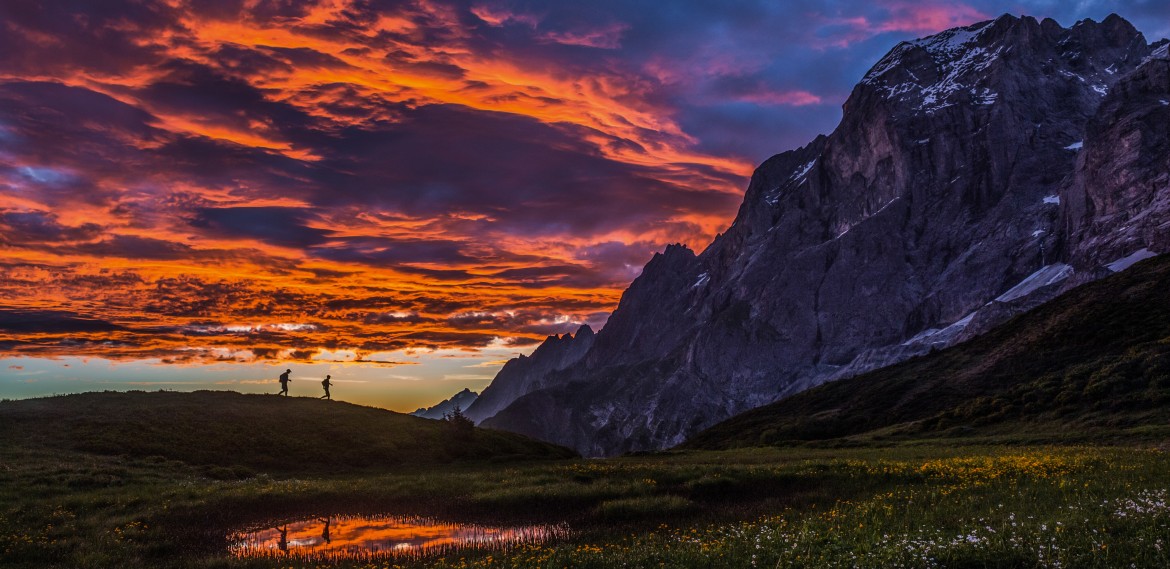
The quintessential trek across the Swiss Alps, from Liechtenstein to Grindelwald
Hikers on the Grosse Scheidegg. Courtesy Switzerland Tourism. Photo by Thomas Senf
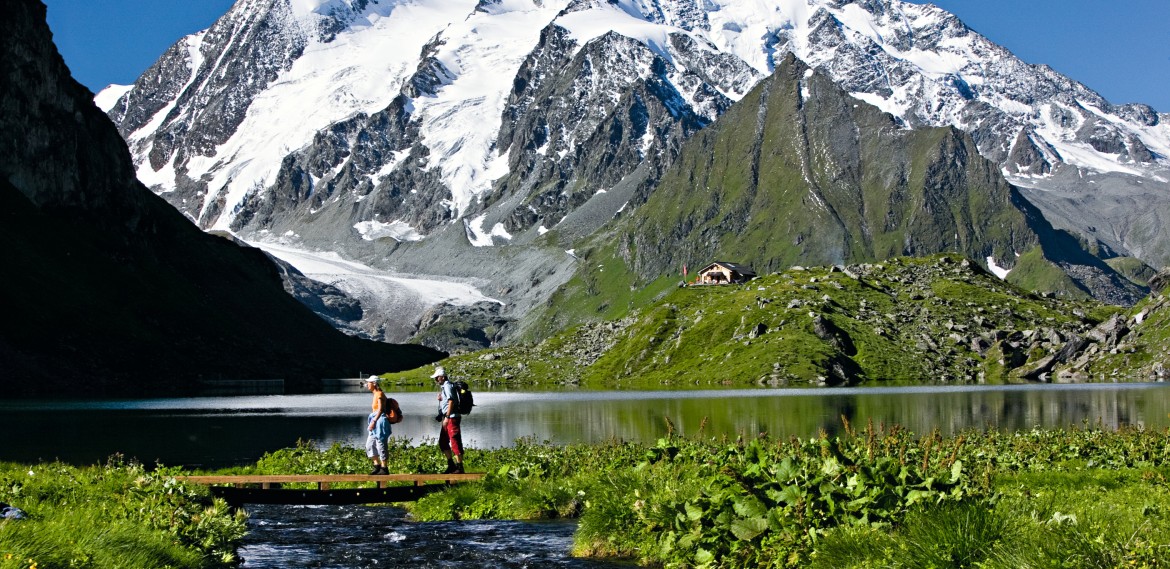
The most scenic trek in the Alps
Hikers near Gruben. Photo by Ivo Scholz, Courtesy Switzerland Tourism
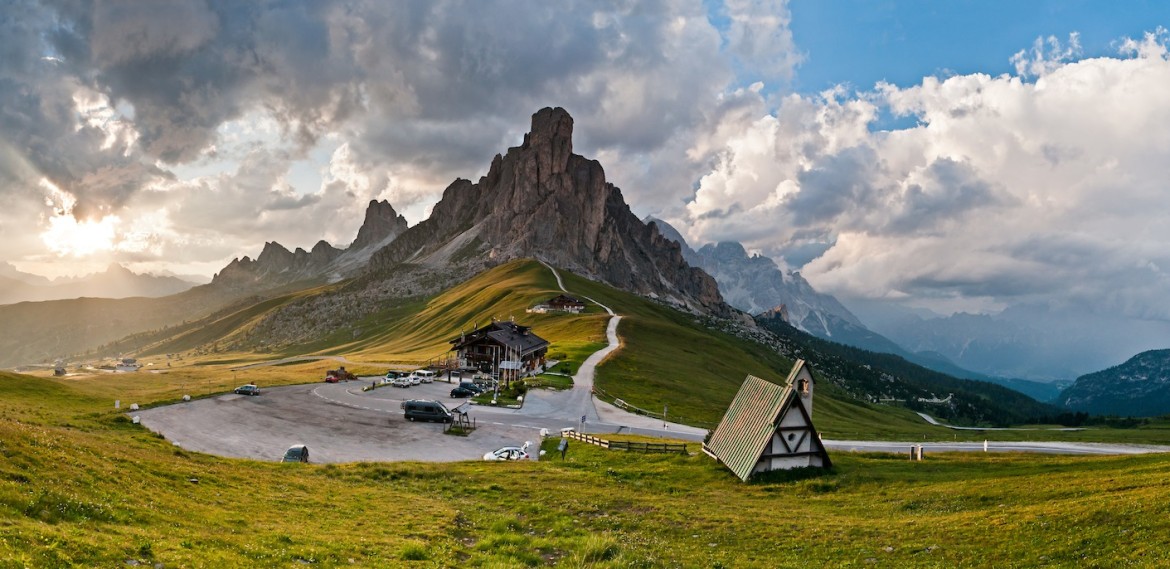
World class hiking in the Italian Alps
Passo di Giau. Photo by Tom Dempsey
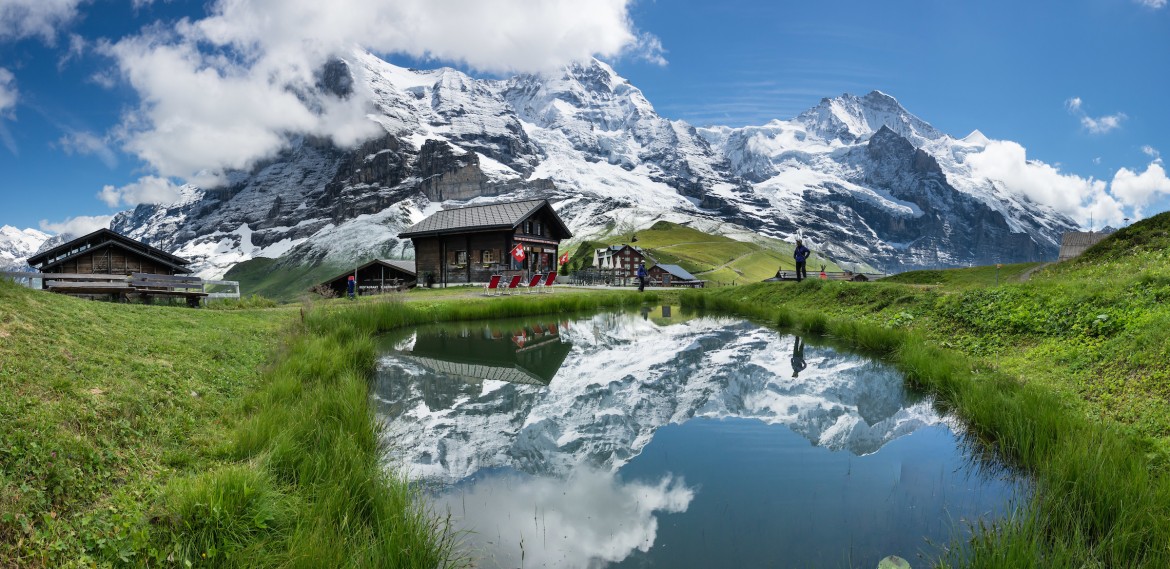
Explore the two most picturesque corners of the Alps—Zermatt and the Jungfrau Region.
Jungfrau region. Photo courtesy of Switzerland Tourism
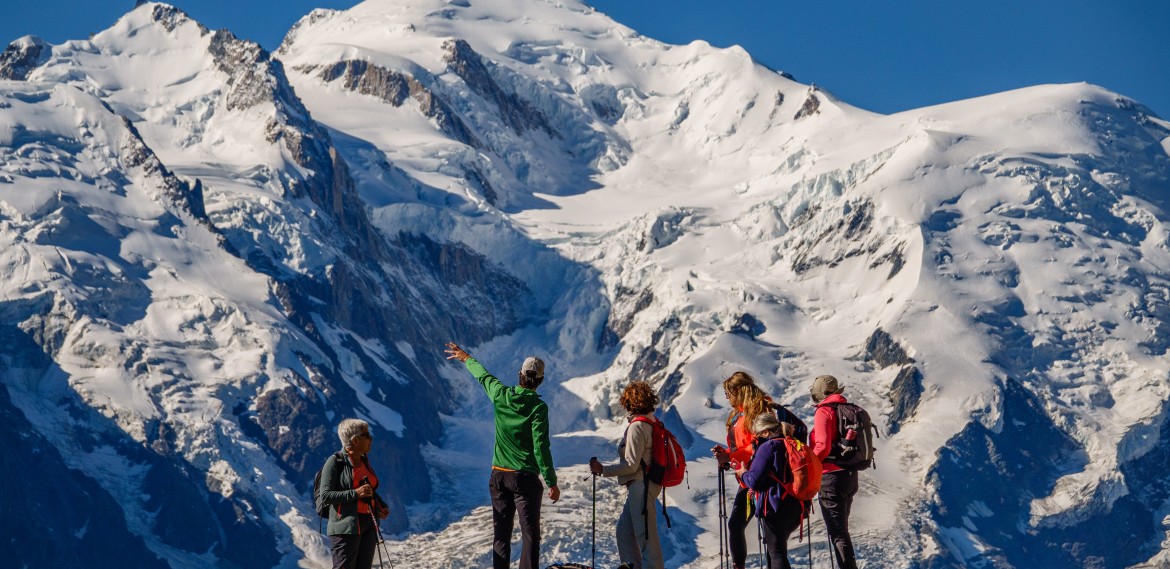
Tour du Mont Blanc
Circle the highest peak of the Alps in style
Guests enjoy trekking on the Tour du Mont Blanc. Photo by Tom Dempsey
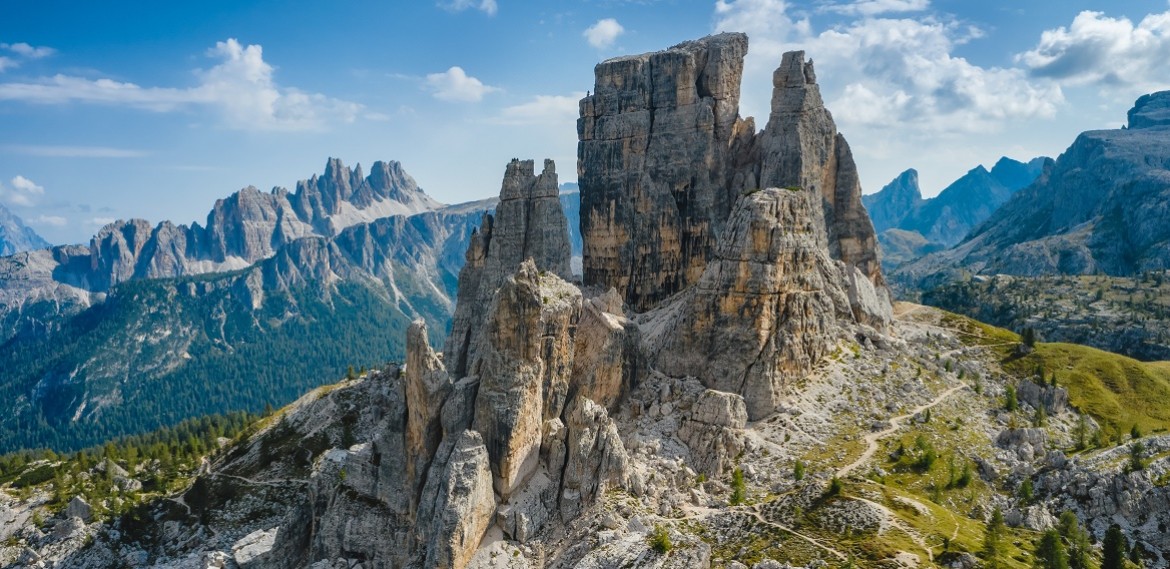
A Panoramic Paradise: Discovering the Magnificent Scenery of the Italian Dolomites
Cinque Torri
.jpg&w=1170&h=569&zc=1)
Hiking through Provence: Where Beauty Meets Adventure
Gordes, France
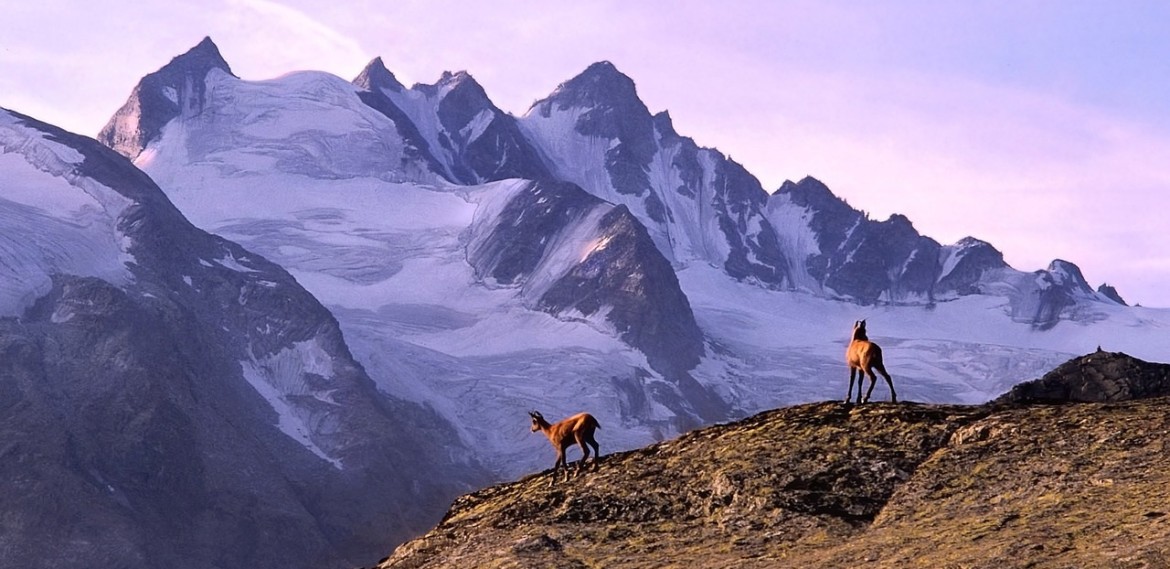
The best peaks of the Italian Alps—The Matterhorn, Monte Rosa, and Gran Paradiso
Gran Paradiso National Park
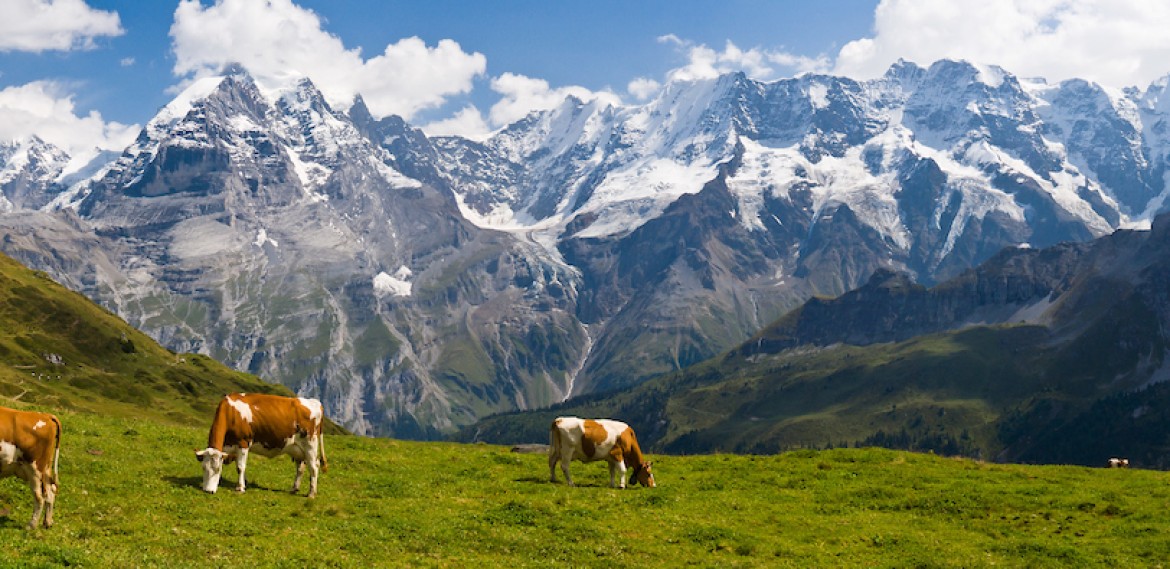
Exploring the Jungfrau
Inn-to-inn hiking in the Jungfrau UNESCO World Heritage Region
Cows enjoying the grass and mountain views in the Jungfrau. Photo by Tom Dempsey
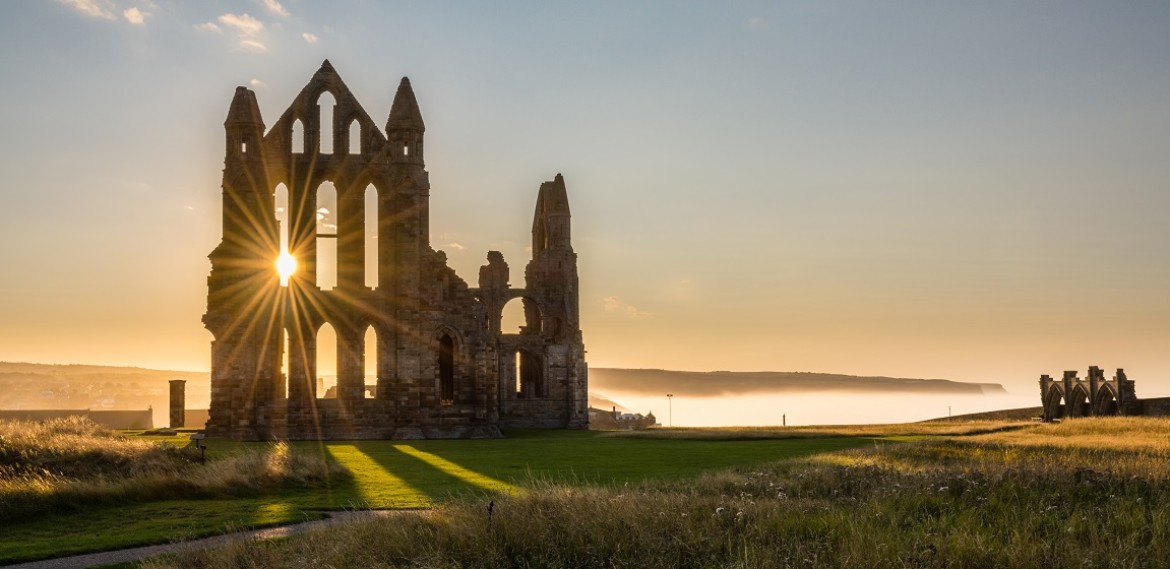
Romantic landscapes in the Lake District and Yorkshire Dales.
The gothic ruins of Whitby Abbey. Photo credit by Tom Dempsey

Travel and Coronavirus: A Message to Our Guests
Choose your trip style.
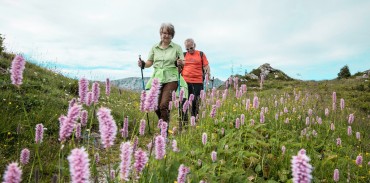
Explore the Alps on foot with guided dayhikes and active excursions from charming mountain villages.
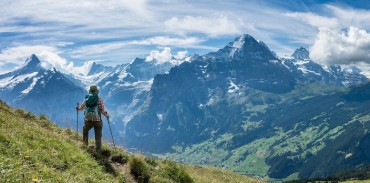
The classic treks in the Alps: the Haute Route, Tour du Mont Blanc or Via Alpina. For moderate to advanced hikers.
.jpg&w=370&h=183&zc=1)
Rail and Sightseeing
Capture the Alps on legendary mountain railways like the Glacier Express and Jungfraujoch.
.jpg&w=370&h=183&zc=1)
Self-Guided Tours
Ultimate independence, flexibility, and value. Your vacation, Alpenwild's expertise.
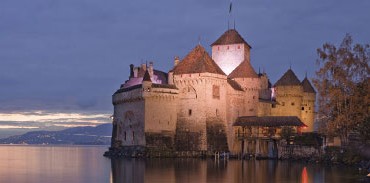
Custom and Guided Tours
Discover the Alps and scenic Switzerland on gentle walks and mountain excursions
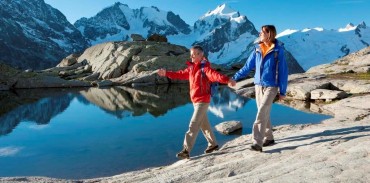
Tour Add-Ons & Getaways
Discover the Alps on an Alpenwild Getaway, a self-guided, short-stay vacation in our favorite Alpine destinations. Ideal for pre- and post-tour travel
Special Features
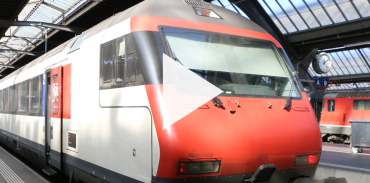
How to take the train in Switzerland
Sarah shares some tips and tricks for traveling by train in Switzerland. Luckily, Switzerland's rail system is very easy to navigate.
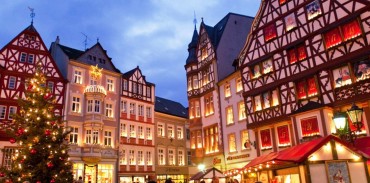
Switzerland's most scenic and historic cities—Basel, Zurich, Luzern, Lugano—lit up for Christmas.
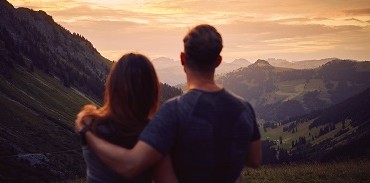
Offers and Promotions
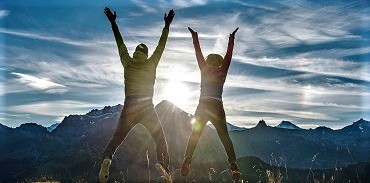
Returning Guest Benefits
Alpenwild returning guests receive discounts for themselves and friends plus exciting premiums.
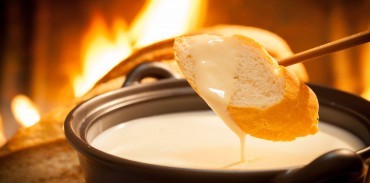
Switzerland is a foodie heaven. Cheese, chocolate and superb cuisine in the midst of the Alps.
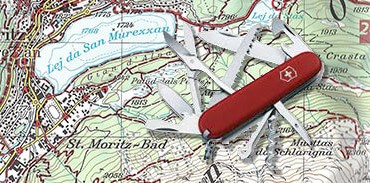
Maps, Books, & Apparel
Get detailed Swiss Topo hiking maps and guidebooks to make the most of your trip

Sign Up for Our Email Newsletter
Stay up to date on the latest Alpenwild news. You're free to opt out at any time. See our Privacy Policy .
See our Privacy Policy .
The 8 best places to go in Slovenia

May 2, 2024 • 8 min read
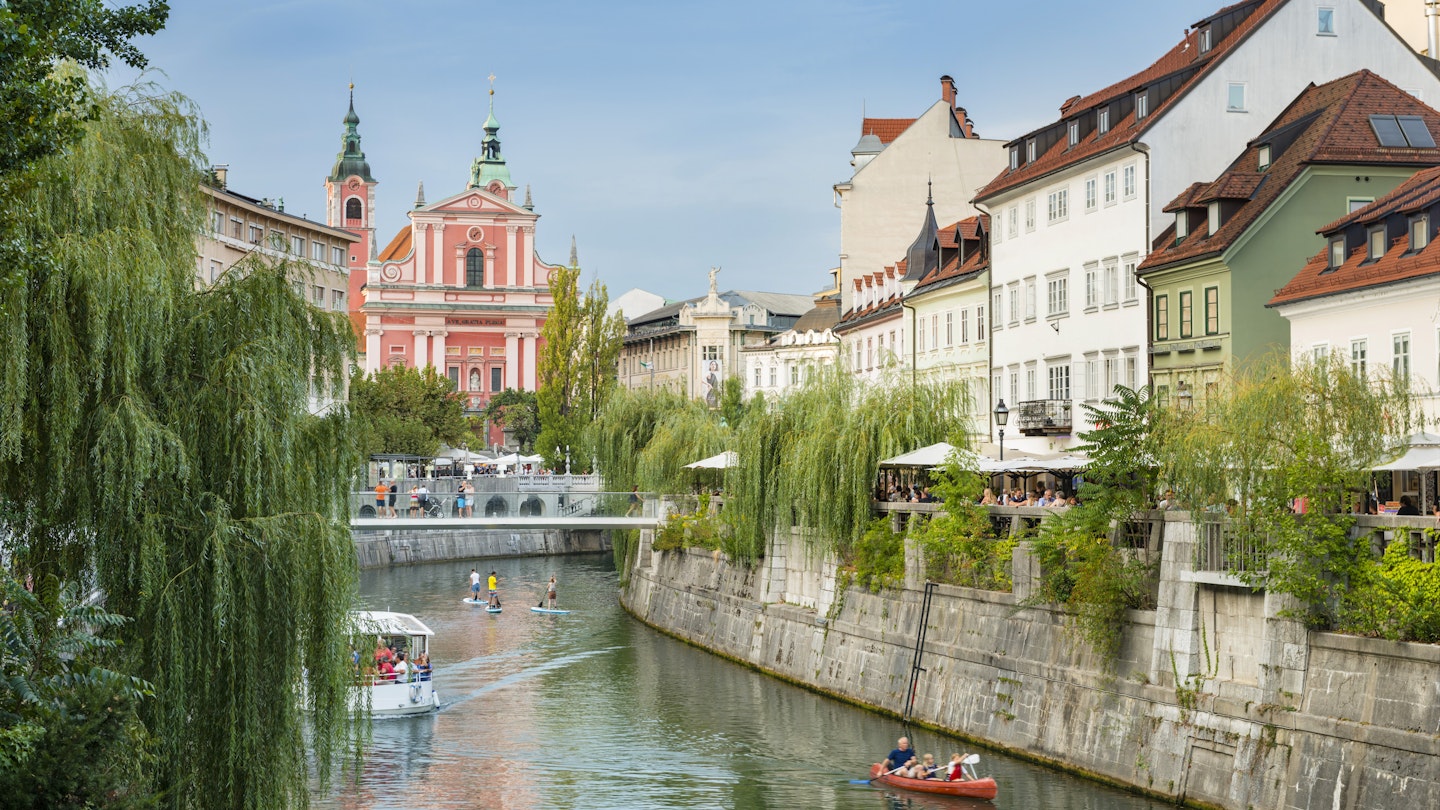
Slovenia's capital, Ljubljana, is a charming delight full of culture, bike trails, museums and cafes © Justin Foulkes / Lonely Planet
For proof that good things come in small packages, one need only visit Slovenia . In an area half the size of Switzerland, this Central European country packs in breathtaking mountain scenery, lively coastal resorts, fashionable cities, crystal-clear lakes and rivers, and charming, isolated villages.
Better still, because of this compact size, you can take in most or all of these delights within the course of one trip. In the span of a few days, you can walk in the Alps, kayak a glacial waterway, visit some world-class winemaking regions, and take a dip in the sea. Don't worry if you're not able to name many cities, regions or landmarks in this stunning country. Slovenia – hiding in plain sight – is waiting to be explored.
1. Ljubljana
Best for spectacular architecture
All roads in Slovenia lead to the capital, and not just because it’s situated in the center of the country. Ljubljana buzzes with active, cycle-riding residents, alternative culture and eclectic restaurants, museums and cafes. However, the setting alone is worth a visit – every square features stunning architecture that reveals the city’s history in stone and eye-catching ornamentation.
Start your investigation at the fairytale-like Ljubljana Castle , an ancient hilltop fortification whose origins date back to the 12 th century. You can either hike a short but steeply inclined path to the top or take the funicular. Once there, poke around old medieval rooms that have been preserved and take in attractions like the Slovenian History Exhibition or Museum of Puppetry .
Make your way back to the Old Town to admire the main square, Prešernov Trg , and its baroque, salmon-pink 17th-century Franciscan Church of the Annunciation . Several buildings here sport beautiful art nouveau and secessionist facades from the early 20 th century.
Fans of early-modern architecture will want to scout out the works of native son Jože Plečnik, a gifted architect who bequeathed several breathtaking bridges and buildings to the city during the first half of the 20th century. Many of his creations, including the dazzling Triple Bridge and the interior of the National & University Library , are UNESCO-protected works of cultural heritage.
2. Lake Bled
Best for a romantic holiday
Whether you know it or not, you’ve likely seen Lake Bled before. The image of a seemingly mythical church standing in the middle of a turquoise lake is Slovenia’s most iconic image. Even in two dimensions, this magical place pulls at your heartstrings. When you see it in person, with that special someone by your side, get ready for fireworks.
Begin with a sunrise walk around the lake, about 5km and almost entirely flat. Three footpaths signposted " Grad" lead toward Bled Castle ; each one involves a climb but it's worth it for the views. Then visit magical, tiny Bled Island in the middle of the lake. Board a pletna , a wooden boat that resembles a Venetian gondola, and head over to climb the 99 stairs into the Church of the Assumption of Mary .
No romantic outing here is complete without an easy hike to Vintgar Gorge , around 4km from the center of town. Boardwalks and bridges take visitors on an intimate journey across the magical 1600m-long ravine.
Planning tip: Buy tickets for Vintgar Gorge in advance . Entry is staggered to protect the gorge; pets are also welcome by purchasing a special ticket.
3. Lake Bohinj
Best for experiencing local culture
For a small country, Slovenia boasts a surprising amount of regional variation. The communities surrounding pristine Lake Bohinj – Slovenia’s largest natural lake, tucked into the Triglav National Park – truly lean into their regional identity. You’ll find makers here of everything from distinct dairy and cheese products to meats, honey, jam and even gin. To make it easier to find the genuine article, look for the “Bohinjsko” (from Bohinj) label signifying it’s locally produced.
Hike out into the rural hamlets north of the lake to learn more about local lifestyles. At the Alpine Dairy Farming Museum in Stara Fužina, exhibits explain how farm-to-table is more than just a dining trend – the locals are passionate about their heritage. Give in to the temptation to sip on whatever is handed to you and just listen.
Bohinj comes into its own in summer when you can swim or sail on the lake and hike or bike into the national park. Once you’re ready to travel again, board the scenic Bohinj Railway and ride it from the station at Bohinjska Bistrica all the way to Italy.
Planning tip: Lake Bohinj is lovely in springtime when the annual International Wildflower Festival allows you to experience the region from the roots up. Learn more about the magical activities in the area with our insider guide to Lake Bohinj .
Best for peeling back layers of history
Maribor could fit into several “best of” categories. Slovenia’s second-largest city anchors the country's Podravska wine region and has a thriving gourmet scene, including some of the country’s best restaurants. Plus, because it sits on the Drava River, it's a hub for adventure activities like rafting, cycling and hiking. But Maribor is, at its heart, a treasure chest of historic layers.
Settled time and again during the Stone Age, Celtic period and Roman era, the modern city dates back to the Middle Ages. First, stop in at Maribor Castle, home of the regional museum , to get a historical overview and then explore the main medieval market square, Glavni Trg .
Here, you’ll see the 16th-century Town Hall before taking a seat to enjoy a glass of wine at the Old Vine House , where the world’s oldest producing vine — more than 400 years old — climbs the facade and still produces vino. If you want to stretch your legs some more, hike 30 minutes out to an ancient, 12th-century castle known as Piramida .
Planning tip: Two excellent restaurants to try are Hiša Denk and Restavracija Mak . Book your table well in advance, particularly during the high season.
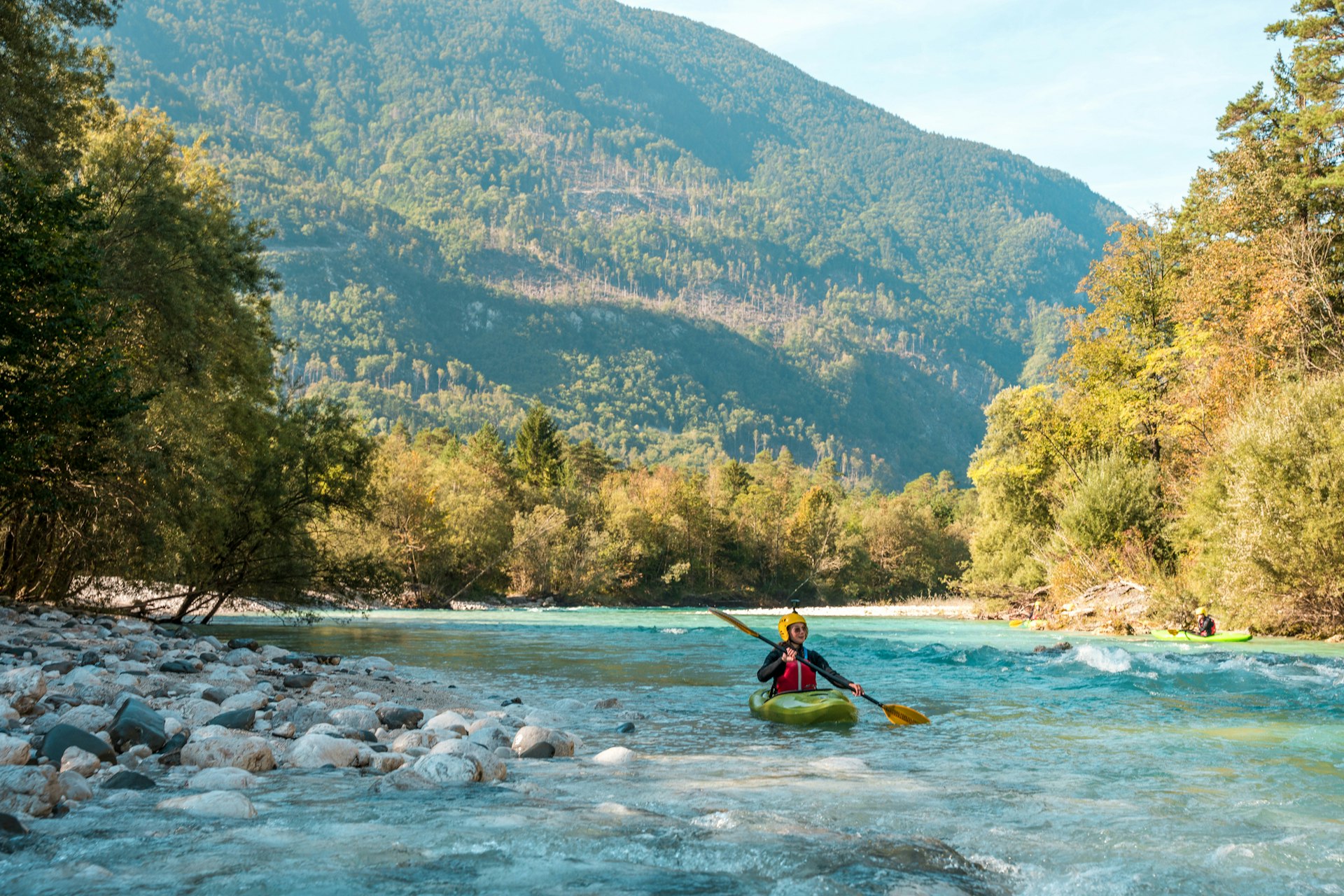
Best for outdoor adventure
At the edge of Triglav National Park, squeezed between the Julian Alps and the crystal-clear turquoise Soča River, Bovec is a haven for water-based activities. The frothy river, boasting unimaginable cerulean shades that come from the underlying bedrock itself, is just as stunning as you’ve heard and neither picture nor rumor does it justice.
The best way to experience the river is to join a white-water rafting or kayaking tour (they run from March to October). Canyoning – where groups make their way down a mountain stream in a gorge with techniques like abseiling, climbing, sliding and jumping – is gaining ground too. Bovec offers zip lining over the Julian Alps, with more than 3km of lines at the Adrenalin Park Bovec .
In winter, skiing is king, and nowhere is more popular than the Kanin Ski Centre. The biggest ski area in Slovenia shares custody with Italy, and the starting point for the gondola is in Bovec. Hit the slopes and watch the sea below.
Planning tip: Several rafting companies offer excursions for beginners and experts, including Nature's Ways and Kayak Soča .
6. Karst Region
Best for landscapes and caving
Slovenia’s Karst Region, which takes its name from its porous, limestone topography, is home to some of Europe’s largest and most-stunning cave systems. Two caves in particular, Postojna and Škocjan , stand out but the karst is riddled with dozens of underground attractions. Postojna Cave, one of the world's largest, features unparalleled stalagmite and stalactite formations. Once inside, take a 1.5-hour tour that unveils 5km of the expansive cave. More than half the journey is covered by a cool electric underground train.
The immense complex of the Škocjan Caves, 20km southwest of Postojna, is, if anything, more spectacular. The entire system was created by the Reka River, which carved its way over the millennia through a gorge beneath Škocjan village.
Planning tip: Aside from underground treasures, the Karst’s deep green hills are rich in fruits, ruby-red teran wine, pršut (dry-cured ham), and lots of picturesque villages with old stone churches.
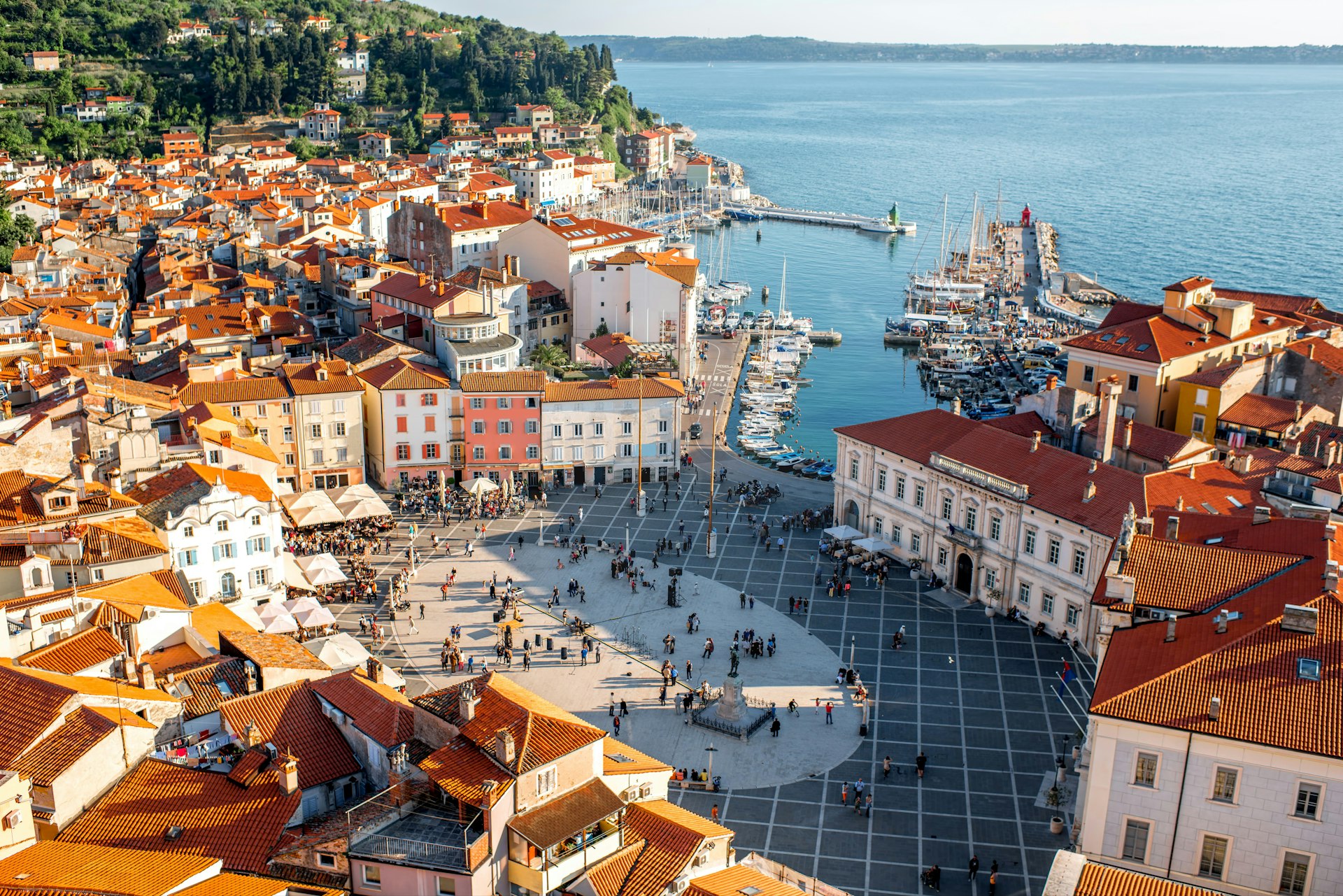
Best for soaking up the sun
Such is the bounty of Slovenia that you can play in the mountains in the morning and lounge on the beach in the afternoon. When that urge strikes, Piran is the spot to soak up the rays, splash in the Adriatic and discover a unique destination along the country’s tiny 47km long coastline.
Often called the most beautiful town along the Slovenian Adriatic, Piran predates the Romans but got its present look in the Middle Ages as part of the Venetian Empire. Get a panoramic overview by climbing the stairs to the top of the bell tower, next to the 17th-century baroque Cathedral of St George . From here, you'll be able to see three countries at once.
Come down from your perch to Tartinijev Trg , the town’s nerve center, before heading to the Mediadom Pyrhani , a museum that offers a multimedia take on Piran history. But don't forget the reason you’ve come – a 15-minute walk takes you to Fiesa Beach for your cooling plunge into the sea.
Planning tip: The nearby Strunjan Landscape Park , east of Piran, offers two secluded (and harder-to-reach) beaches: Moon Bay and Bele Skale.
8. Goriška Brda
Best for sampling wines
Straddling the Italian border, Goriška Brda (or simply “Brda") is an absolute charmer: rolling hills lined with grapevines and sun-kissed orchards topped with small settlements and churches. The area is one of Europe's best-kept secrets. From one of the many perched villages scattered across the fertile hillsides, you’ll see a seemingly endless expanse of vineyards disappearing over the horizon.
A paradise for cyclists, the hills of Goriška Brda are home to dozens of scenic trails that are great for exploring on two wheels. Wineries to look out for include Klet Brda , the largest wine producer in Slovenia, with a well-stocked wine shop at its Dobrovo estate and excellent daily tours, Vinoteka Brda , and Edi Simčič , a third-generation family estate with tastings almost every day.
Planning tip: Like elsewhere in Slovenia, most local wine producers require visitors to call or book ahead to arrange a tasting.
This article was first published Jan 5, 2022 and updated May 2, 2024.
Explore related stories
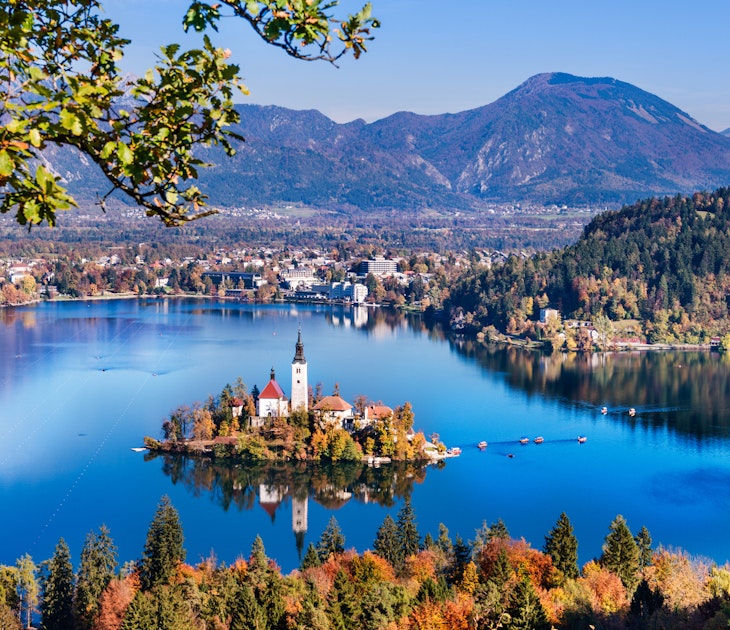
Tips & Advice
May 2, 2024 • 6 min read
Plan the perfect trip to Slovenia with these tips on booking, packing and activities.
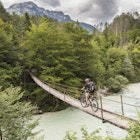
Apr 27, 2024 • 5 min read

Mar 17, 2024 • 7 min read

Oct 20, 2023 • 8 min read

Aug 30, 2023 • 6 min read
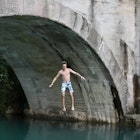
Dec 15, 2022 • 2 min read
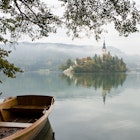
Feb 27, 2022 • 4 min read

Feb 20, 2022 • 6 min read

May 19, 2024 • 6 min read
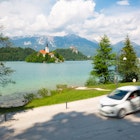
May 4, 2024 • 6 min read

We help you travel Switzerland with confidence!
Swiss travel guides, watch youtube, free resources, inbox insider, maximize your travels and minimize your budget.
Ultimate Guide to Harder Kulm – Top of Interlaken
Welcome to Harder Kulm — Top of Interlaken! Here's everything you need to know about this place, plus 7 things to do nearby so you can fit Harder Kulm into your Swiss itinerary!
17 Transportation Tourist Mistakes To Avoid in Switzerland
Getting ready to ride Swiss transportation? Don't make these 17 transportation tourist mistakes in Switzerland! We teach you what to avoid, and what to do instead!
Jungfrau vs Zermatt: Which one is better?
Should you visit Zermatt AND the Jungfrau Region on your next trip to Switzerland? Or if you only have time for one spot, which one is better?! We put these 2 destinations head-to-head to see which...
7 Can’t-Miss Cafes in the Jungfrau Region, Switzerland
Don’t skip these 7 cafes in the Jungfrau Region! Perfect for coffee-lovers, tea-drinkers, wine-sippers, and cake-eaters! Features local cafes in Grindelwald, Mürren, and Interlaken, Switzerland.
Ultimate Guide to Zermatt, Switzerland
We're going to answer you biggest questions and make you Zermatt-ready! We show you around Zermatt village, list things to do in Zermatt, and even give you tips on where to stay and when to visit!
How To Ride the GoldenPass Express | Swiss Panoramic Train
Join us on the journey from mountains and glaciers to lakes and palm trees on the GoldenPass Express in Prestige Class! This panoramic train runs between Montreux and Interlaken, Switzerland — and...
National Geographic content straight to your inbox—sign up for our popular newsletters here

Why visit Annecy, gateway to the shores and summits of the French Alps
In the Haute-Savoie region of south-eastern France, Annecy and its lake tend to grab the limelight, but extending your visit to the surrounding peaks makes for an all-round Alpine getaway.
Paul Cézanne thought Annecy picturesque to a fault. He’s said to have sneered when visiting in 1896, dismissing it as a landscape for travel sketchbooks. It could be why, when he painted it anyway, his work — titled Le Lac d’Annecy — portrayed a wilder scene than many might expect. Framing the view from Talloires, it captured the gentleness of the lake but a sense of mystery to the mountains behind it, too.
In life as in art, the allure of this destination lies in this contrast. Lake Annecy is found within the Annecy Mountains region, which includes the Aravis range and villages of Le Grand-Bornand, La Clusaz and Manigod. In summer, this means the best of both Alpine worlds: mess about on the water, then head higher for hiking, biking and fresh air.
Away from the trails, Annecy town is marking 20 years as one of France ’s ‘Villes et Pays d’Art et d’Histoire’, a label for destinations that promote their heritage; it has 28 historic sites to discover. Celebrate in August with the annual Fête du Lac, Europe’s largest firework display, or Au Bonheur des Mômes, a festival that brings theatre, dance and a mischievous spirit to Le Grand-Bonard.
Day 1: Cycling & city life
Morning To get a sense of the scale and beauty of the Annecy region, start with a cycling tour of the lake. Pack chocolate flapjacks from retro-style cafe Le Bar Roux d’Heure in Annecy town before picking up bikes from Roul’Ma Poule on Rue des Marquisats, a five-minute walk away. It couldn’t be better located, right opposite the beginning of the Voie Verte du lac d’Annecy — one of the oldest greenways in France. There’s the chance to complete a 26-mile, mostly flat loop around the lake; it takes around three hours to finish, but time goes by quickly as you pedal between beaches and small villages, and past gardens bursting with hollyhocks, bougainvillea and oleanders.
Afternoon Lots of boulangeries surround the Jardins de L’Europe park at the water’s edge of Annecy town, so pick up a quiche and find a shady bench for a picnic lunch. Then, join a guided tour led by local enthusiasts of the old town. It’s a maze of medieval streets lined with arcades and arches, crisscrossed with canals and offshoots of the River Thiou. At its mouth, you can’t miss the Palais de l’Ile — built on a rocky island in the 12th century as the lord of Annecy’s residence, it’s since been a prison, court and mint. Now surrounded by cafe terraces and colourful canal-side houses, with window boxes filled with geraniums, it’s Annecy’s most picturesque spot.

Evening Book a private dinner with Annecy Lounge Boat to feast on local charcuterie and cheese fondue as you cruise at sunset. It’s a good option for families or larger groups; the boats seat up to 12, and every seat offers tremendous views. Alternatively, hop on board a water taxi and head south to the shoreside village of Doussard, where the private pontoon of La Cuillère à Omble sets the scene for the seafood feast to come. This bistro sources char, pike, perch and more from Haute-Savoie’s three lakes and serves them on a terrace by the water. The restaurant is right by the Bout du Lac Nature Reserve, one of the lake’s last untouched stretches of shore, ensuring a tranquillity unmatched elsewhere.
Day 2: Mountain drives & mighty peaks
Morning After a day on the lake, it’s time to head into the mountains, and while it’s possible to get around by bus, renting a car means stopping whenever a view catches your eye. Take a pit stop in the village of Manigod, a 30-minute drive from Annecy, where the Lo Garâjo coffeeshop has unbeatable views of the Aravis massif as well as a wine cellar, craft beers, a bookstore and a boutique. Continue over the Col de la Croix Fry into La Clusaz before climbing back up to Le Grand-Bornand — a spectacular drive on winding Alpine roads. A lunch of Reblochon cheese and blackberry tart is served at La Clé des Annes on the Col des Annes, where ingredients are largely sourced from the restaurant’s own farm.
Afternoon Walk off your meal exploring the surrounding Alpine meadow on marked footpaths, where the silence is broken only by the occasional ringing of a cow bell. For a gentle and panoramic stroll, head to Les Terres Rouges restaurant and loop back via the Fenil farm. Alternatively, allow at least two hours for the six-mile round trek from the Col des Annes to the Gramusset refuge at the base of Pointe Percée, the Aravis’ highest peak at 2,750m. When you start getting tired, drive down to Le Grand-Bonard to recharge at the cosy Shed Cafe . One of the latest additions to the village, it serves coffee, homemade smoothies and sweet treats — as well as beers, depending on your mood.

Evening In 2000, a group of artists joined forces to celebrate Le Grand-Bonard’s 2,000 inhabitants and 2,000 cows grazing on pastures at 6,560ft (2,000m). Aptly called The Cow Trail, the works are dotted around the village and include sculptures, murals and photo installations. Keep an eye out as you make your way to Confins des Sens , a stone-and-wood affair with a terrace facing the Aravis. It’s the place for mountain food with a gourmet twist: partners for more than 20 years, chefs Anthony Barrucand and Jean-Sébastien Faber change the menu seasonally, but expect everything from scallops with butternut squash, citrus and honey to veal with parsley sabayon and potatoes.
The best water activities to do in Annecy
1. Freediving Freedive in Lake Annecy with Planète Apnée, a venture launched in 2023 to tap into the sport’s growing popularity. There are sessions for beginners, as well as outings that will have you float over a shipwreck.
2. Toumo yoga Inspired by a Tibetan method, this yoga class features breathing techniques and visualisation — plus controlled exposure to spring-fresh, icy-cold water in mountain streams above Le Grand-Bornand.
3. Kayaking Spot pike and perch as you glide in a see-through kayak around Lake Annecy. Watersports specialist Gliss’cool is based in Angon, an easy paddle away from Talloires and Roc de Chère National Nature Reserve.
4. Canyoning Walk up streams, jump from waterfalls and abseil down the rock faces of pretty Angon canyon. As long as you can swim, you’re welcome — the guides will tailor the half-day experience accordingly.
5. Water hiking A gentle form of canyoning, this is ideal for children aged six and over. Walk through a river in La Sambuy, sometimes sliding down rocks, sometimes splashing into pools.
Where to stay near Lake Annecy
1. Là Haut Set in the Massif des Bauges Regional Nature Park, this is a mountain refuge dressed up as a chic chalet, complete with a barrel-shaped sauna. Opt for the Shelters Experience to sleep inside a metal shelter repurposed from polar expeditions.
2. Refuge de la Pointe Percée Originally built in 1928, this is a mountain refuge through and through, so expect shared dorm rooms and communal dining. It’s a three-hour hike from Le Grand-Bornand but worth it for the sunsets on nearby Pic de Jallouvre alone.
3. Chalet Sisar Accessed via a dirt track through the forest, this renovated old farm sits on the Beauregard plateau, high above the village of La Clusaz. There are five bedrooms sleeping up to 12, a huge south-facing terrace and myriad trails right on the doorstep.
Related Topics
- SHORT TRIPS
- FAMILY TRAVEL
- MOUNTAINEERS
- MOUNTAIN CLIMBING
You May Also Like

Why choose the Alps for your next summer adventure

Why Oz in the French Alps is the perfect family ski destination
Introducing nat geo kids book bundle.

What you need to know about volcano tourism in Iceland

The essential guide to Switzerland
_4x3.jpg)
The ‘Yosemite of South America’ is an adventure playground in Patagonia

A guide to Birmingham, the Peaky Blinders-inspired UK city break you'd never think of

Sleeper trains, silent nights and wee drams on a wild walk in Scotland
- Environment
- Paid Content
History & Culture
- History & Culture
- History Magazine
- Mind, Body, Wonder
- Terms of Use
- Privacy Policy
- Your US State Privacy Rights
- Children's Online Privacy Policy
- Interest-Based Ads
- About Nielsen Measurement
- Do Not Sell or Share My Personal Information
- Nat Geo Home
- Attend a Live Event
- Book a Trip
- Inspire Your Kids
- Shop Nat Geo
- Visit the D.C. Museum
- Learn About Our Impact
- Support Our Mission
- Advertise With Us
- Customer Service
- Renew Subscription
- Manage Your Subscription
- Work at Nat Geo
- Sign Up for Our Newsletters
- Contribute to Protect the Planet
Copyright © 1996-2015 National Geographic Society Copyright © 2015-2024 National Geographic Partners, LLC. All rights reserved
- All Destinations
- Bustling Cities
- Beautiful Towns
- Charming Villages
- Culinary Experiences
- Historical Monuments
- Zoos, Parks and Aquariums
- Image Gallery
- Comparative Analyses
- Hiking Time Calculator
- Travel Information
- Frequently Asked Questions
- Affiliate Disclaimer
- Favorite Resources
- Privacy Policy
Swiss Alps – The Ultimate Guide
- April 22, 2021 November 20, 2023
- Mountains , Valleys
Last Updated on November 20, 2023 by Darla Uhl
Switzerland is a highly mountainous country located in Central Europe. The Swiss Alps cover roughly 60% of the country’s area. In this article, we will answer the following questions – where are the Swiss Alps? What is it exactly, and how did it emerge? Lastly, we will enumerate and discuss the various Western and Eastern Alpine Regions.
Where are the Alps?
The Alps are the most extensive and highest mountain range in Europe covering 1,200 kilometers. There are eight countries in Europe that have mountains in this range – France, Switzerland, Monaco, Italy, Liechtenstein, Austria, Germany, and Slovenia. This stretches from Nice in France all the way to Vienna in Austria.

The Alps are further divided into two – the Eastern Alps and the Western Alps. You can think of the line dividing it along Lake Constance – Chur, Switzerland, Splügen, and Lake Como.
In Switzerland, this means that the Alps in Valais and Ticino are west and the ones in Grisons ( Graubünden ) are largely in the east.
Where are the Swiss Alps?
The Swiss Alps extend from both Valais in the West to Graubünden in the East. Of this, the most important blocks are the Alps in Valais, Bern, Appenzell, Glarus, Ticino, and Grisons ( Graubünden ). The Mont Blanc massif in Valais is shared with France and Italy. And the Bernina Range is shared with Northern Italy. The rest of the ranges, particularly in Bern, Appenzell, and Glarus are not shared with the neighboring countries.
The highest peaks in the entire Alpine region lie in the Swiss Alps, particularly in the Pennine Alps in Canton Valais. Here are the highest ten mountains. All mountains are in Valais, with the exception of Finsteraarhorn which Valais shares with Bern.
Top 10 Highest Mountains in Switzerland
Jungfrau and Mönch , two of the most well-known mountains in Switzerland, are the 16th and 17th highest mountains respectively. Piz Bernina , the highest peak in the Bernina Range in Grisons, ranks 20th on the list of the highest mountains.

The Swiss Alps are, in terms of farming, the summer pastures used by cows, sheep, and goats. It is higher in altitude compared to the spring pastures.
How did the Alps emerge?

In a nutshell, the history of the Alps is not yet 100% clear. But we do know that in the course of the earth’s 4,500 million years, the earth has constantly changed based on various environmental factors. Mountains, flats, and seas form and disappear over the years. Continental plates move, drift apart, or collide. We see this time and again through numerous earthquakes and volcanic eruptions. We see glaciers recede, ice shelves break off, and more. The general assumption is that plate tectonics have contributed to the emergence of the Alps.
Plates drift a few centimeters per year. It can be measured with instruments, but normal people would hardly notice it. The Alps are actually considered a young mountainous range. By young, the definition would be 70 million years.
This is the rough timeline of how the Swiss Alps emerged :
- Triassic Period – 210 million years ago – The huge continent of Europe and Africa (Pangaea) does not have a lot of mountainous regions. It is mostly flat and keeps on getting flooded by the sea.
- Jurassic Period – 150 million years ago – The continent breaks into two – Europe and Africa. Between the two is an ocean called Tethys. Through the separation of the two continents, the plates slowly move and the flat regions slowly rise to the early Alps. This was referred to as Alpine Tethys .
- Cretaceous Period – 90 million years ago – The continents keep on coming closer together. The first continental collision took place.
- Paleocene and Eocene – The main collisional phase occurred in the formation of the Alps. It was when the Adriatic plate was thrust over the European crust.
- Present – the plate collision still occurs yearly but in a very minuscule range causing some areas to be uplifted.
As discussed earlier, the Swiss Alps can be divided into the western and eastern sides. Here we will have a look at the various alpine regions.
The Western Swiss Alps
The Western Swiss Alps cover much of the mountains in Valais and Bernese Oberland. These are high four- and three-thousand peaks and are known worldwide. Here are the alpine regions in the Western Swiss Alps:
Aletsch Glacier

At 23 kilometers, Aletsch Glacier is the largest in the Swiss Alps. Since 2001, it has been part of the UNESCO World Heritage. It is located in the Jungfrau-Aletsch-Bietschhorn region. Riederalp and Bettmeralp lie on a sunny terrace 2,000 meters above sea level.
In winter, four ski resorts lie in the Aletsch region: Fiescheralp, Bettmeralp, Riederalp , and Belalp. They are all accessible with cable cars.
Hasli Valley

The Hasli Valley is a family-friendly resort with fantastic views of the Engelhörner, Wellhorn, and Wetterhorn. There are numerous gorgeous spots in and near this valley – the Aare Gorge , Rosenlaui , and Reichenbach Falls . In winter, it has 60 kilometers of ski slopes, 25 kilometers of hiking trails, and many more.
Crans-Montana

Crans-Montana is located on a high sunny terrace around 1,495 meters above sea level. The region consists of five sections: Randogne, Montana, Chermignon, Lens, and Icogne. They have tons of spa hotels and good infrastructure (Congress and Culture Centers, Golf Areas). It is one of the biggest tourist areas in Valais.
The winter ski resort of Crans-Montana has easy slopes in the lower sections. The upper section towards Plaine More Glacier is more difficult.
Emmen Valley

The Emmen Valley with the Emme River, 170 valleys, and hills is quite idyllic. The region is also famous due to its cheese. Due to the riches the locals obtained from their cheese exports, they built beautiful, traditional houses. Worth visiting aside from the mountains is the old city of Burgdorf and its castle.

Entlebuch has endless moorlands and forests all seemingly wild and forgotten. In 2002, it received the UNESCO Biosphere Reserve label. It is now called the “UNESCO Biosphere Entlebuch” – Switzerland’s first biosphere reserve – spanning an area of over 400 square kilometers.
Frutigen Niedersimmental

The Frutigen-Niedersimmental administrative district covers several mountainous regions in Bernese Oberland. Although the areas are largely developed for tourists, most visitors are the Swiss themselves. Foreign tourists tend to skip this region, even though they have lots of awesome spots and a charming Chalet village. Popular to visit are Adelboden (a traditional Swiss mountain village 1,353 meters above sea level), Blausee in the Kander Valley, and the town of Spiez .
The ski resort of Adelboden-Lenk encompasses 170 kilometers of prepared slopes, 3 fun parks, 15 kilometers of cross-country skiing slopes, 40 kilometers of winter trails, and 3 sledding routes.
Less popular but still beautiful is the Diemtig Valley . It is a quiet valley with just a few ski lifts and cable cars. It is a place to visit if you want peace and quiet.

Goms is in the uppermost region of the Rhône valley. It has been inhabited since the Stone Age. During the Roman period, it was also part of the province of Rhaetia. The Walser folk who have lived here started migrating in the 13th and 14 centuries to other valleys in Switzerland, and neighboring countries of France, Italy, and Austria.
The Church of St. Maria is a Swiss heritage site of national significance. Furthermore, several villages in Goms are part of the Inventory of Swiss Heritage Sites – Biel, Ritzingen, Selkingen, Niederwald, Gluringen, and Reckingen.
Gstaad and Saanenland
Gstaad, similar to St. Moritz, is also a luxury spa resort in the Swiss Alps. It has lots of prominent luxury hotels, boutiques, and restaurants. The village is car-free and visitors from all over the world love strolling here and discovering the boutiques. The region also hosts numerous world events such as the Swiss Open (tennis), Hublot Polo Gold Cup, the Snowbike Festival, International Week – Hot Air Ballooning, and many more.
Jungfrau Region

The Jungfrau Region is world-known mostly due to Jungfraujoch . Labeled as “Top of Europe” at 3,463 above sea level, Jungfraujoch is actually a saddle between Jungfrau (at 4,158 m above sea level) and Mönch (at 4,110 m above sea level). This place is located in Bernese Oberland.
For more detailed information regarding the Jungfrau region and Jungfraujoch, check out our article Jungfraujoch – When is the Best Time to Visit?
Les Portes du Soleil

South of Lake Geneva is the Swiss and French region of Les Portes du Soleil. In this region, they have hot springs and one of the largest ski regions in the world. With 209 lifts and 650 kilometers, Les Portes du Soleil is huge. The village of Champéry is also charming.
Leukerbad is a thermal spa town 1,402 meters above sea level. 65 warm springs can be found in various baths throughout this town. The village is car-free as well.
Lötschental Valley

Lötschental is the largest valley on the northern side of the Rhône Valley, in the canton Valais. It extends around 27 kilometers and is quite remote. In fact, it was cut off from the outside world until the beginning of the twentieth century. Occasionally, it still gets cut off from the rest of the country in winter due to too much snow. It is also a Walser village where women sometimes still wear their traditional costumes.
The ski area is Lauchernalp from 1,419 to 3,119 meters with intermediate to difficult slopes.

Verbier used to be a farming village in the municipality of Bagnes, Valais. After the connecting road to Verbier was built, it started to change dramatically. In 1949, the first ski lift was added. Afterward, around 90 more followed.
Nowadays, Verbier is a premier backcountry ski resort, not only in Switzerland but also worldwide. Verbier is known for steep slopes, varied conditions, and resort culture. The place also has welcomed prominent visitors. The British, Swedish, and Belgian Royal families have already holidayed in this place.
Val d’Anniviers

Val d’Anniviers is a Swiss valley in Canton Valais. It lies south of the Rhône Valley. It is home to six municipalities, Ayer, Chandolin, Grimentz , Saint-Jean, Saint-Luc, Vissoie, Vercorin, and Zinal.
The villages are remote and reachable via winding roads. But the area is so peaceful and gorgeous.
Val d’Hérens
Val d’Hérens is a valley formed by the Hérens glacier. This valley is home to a couple of high mountains – Dent Blanche (4,358 meters), Dent d’Herens (4,174 meters), Mont Collon (3,637 meters), and Mont Blanc de Cheilon (3,870 meters).

The “Swiss Greenland”, inhabited for over 4,000 years, Saas-Fee is surrounded by tall mountains and glaciers. The train brings guests to Alallin 3,000 meters above sea level.
The ski area has 13 mountains that are at least 4,000 meters high, 140 kilometers of prepared slopes, 1 snow park, 6 kilometers of slopes, 1 sledding, and 52 kilometers of winter trails.
Simmen Valley

Simmen Valley near Lake Thun until Lenk is not as touristy as other Swiss Alpine regions. Nevertheless, some places are well-known such as Stockhorn, Mittagfluh, and Rinderberg. Lenk is also a popular spa town with a modern Wellness center.
Sibe Brünne , as shown above, is a magical waterfall and the source of the River Simme.

In the last few years, the Canton of Uri has started to gain popularity due to the recent developments in Andermatt. Real Estate businessman Samih Sawiris and the Orascom Projects decided to invest in Andermatt. The place itself is quite special in that it is the historical center cross of the north-south and east-west traverses of Switzerland.
In winter, the area boasts over 100 kilometers of prepared slopes in Skiarena Andermatt-Sedrun. This Andermatt Swiss Alps ski area covers Andermatt, Sedrun, and Oberalp.
In case you want to visit Andermatt, I highly recommend checking out Schöllenen Gorge nearby. It is one of the most beautiful gorges in Switzerland.

Zermatt offers a postcard view of the southwest Matterhorn from the steps of the Church of Saint Mauritius or the Kirchbrücke Bridge. Around the village are larch forests, 38 4,000-meter mountain peaks, and the most beautiful mountain in the world – Matterhorn . To name two of the most important mountains, we have Monte Rosa at 4,634 meters (the highest mountain in Switzerland) and Dom in the Mischabel group at 4,545 meters.
The Eastern Swiss Alps
The Eastern Swiss Alps cover the mountain resorts in Grisons ( Graubünden ), Appenzell, Glarus, and St. Gallen. Most prominent among the resorts are St. Moritz in Engadine and Davos. Some regions are quieter and laid-back. Others are world-known, chic, and expensive.
Here are the alpine regions in the Eastern Swiss Alps:

Appenzell is a region known for its somewhat “rocky” mountains, hills, and lakes. The Alpstein region and the 2,502-meter-high Säntis are both worth checking out. On Säntis, you can enjoy the views of six countries, Lake Constance (Bodensee in German), and the Alps. Appenzell is also known for its tasty Appenzeller Cheese . You can even drop by the Cheese Factory which is open daily to visitors.
Check out our articles covering some interesting places in Appenzell :
- Is Appenzell Worth Visiting?
- Aescher: Famous Restaurant at the Cliff Edge of Ebenalp
- 12 Best Things To Do in Appenzell Region, Switzerland
- Kronberg: 5 Best Things To Do (With Epic Hiking Trails)

Arosa is located at the end of the Schanfigg Valley. It has a lake in the center of the city and is surrounded by forests. Arosa rescued three bears and these now live in the 2.8-hectare Arosa Bear Sanctuary . Furthermore, they have alongside the visitor platform also a playground, a minigolf, and an Experience Trail.
Since 2013, Arosa has been connected to the ski area of Lenzerheide. The Arosa-Lenzerheide ski area has a total of 225 kilometers of ski slopes with 43 cable cars between them. It is the largest contiguous ski area in Graubünden.
Bergell / Val Bregaglia

Val Bregaglia is a valley in Graubünden quite near the Italian border and the Italian town Chiavenna. It can be reached via Maloja Pass. The valley is absolutely gorgeous with the Sciora mountain range as a backdrop. The village of Soglio was once named the most beautiful village in Switzerland. Countless artists have come here for inspiration – Alberto Giacometti, Giovanni Segantini, and Clara Porges.

Davos is a town in Canton Graubünden. It is a popular ski resort, hosts the World Economic Forum, and has one of the best tourist infrastructures in the Alps. They can accommodate up to 24,000 guests. The five ski areas in Davos include Jakobshorn, Pischa, Schatzalp-Strela, Rinerhorn, and Klosters Parsenn.
Schatzalp is 300 meters above Davos. It is a slow ski resort with all-natural snow, a luxury hotel, a botanic garden with over 5,000 summer plants, and summer toboggan. Parsenn is the largest and most modern of Davos’ five mountains.
You can also get from Klosters to Gotschna/Parsenn by cable car. Madrisa in nearby Klosters and Rinerhorn are child-friendly.
Sertig Dörfli is a Walser Village at 1,861 meters above sea level surrounded by beautiful forests and mountain peaks.

Engadine is one of the most beautiful regions in Graubünden. Or possibly even in Switzerland. It has a mixture of natural and historical wonders. You can have unforgettable holidays here and the list of things to do is quite long. This region has locals who can speak Romansh, German, and Italian.
In Upper Engadine, you will find from Maloja to S-chanf soft mountains and the river Inn. Four lakes emerged in Engadine upon the Bernina Glacier receding. In no other place in Switzerland, you will see a series of lakes near each other surrounded by mountains between 3,000 and 4,000 meters high. The following places are in Upper Engadine: Maloja, Sils , Silvaplana, Surlej, Champfèr, St. Moritz , Celerina , Pontresina , Samedan, Bever , and the Plaiv villages (La Punt, Zuoz, Madulain, S-chanf, Chapella, Susauna, Cinuos-chel). Locals speak a dialect called Putèr.
The Punt Ota bridge is used as the demarcation line to separate the Lower Engadine from the Upper Engadine.
In Lower Engadine, they speak another dialect called Vallader. The houses also tend to have a harmonic image with a small water well in the middle of the village. The valley has a mild climate and most houses are decorated with pretty flowers. Plants and vegetation would be similar to the neighboring South Tyrol, Donau, and the Mediterranean. The grounds are rich in mineral water, which led to the development of thermal and wellness baths. The following places are in Lower Engadine: Zernez, Brail, Susch, Lavin, Scuol, Guarda, Bos-cha, Ardez, Ftan, Tarasp, Sent, Vnà, Ramosch, Seraplana, Raschvella, Tschlin, Strada, and Martina.
St. Moritz , Pontresina , Guarda , and Scuol are among the more popular destinations in Engadine.
Check out our articles covering some interesting places in Engadine :
- 6 Best Villages in Lower Engadine, Switzerland
- Discovering Celerina, an Engadin Gem
- Relaxing Walk Around Lake St. Moritz, Switzerland
- Guarda: Explore This Fairytale Village in Engadine, Switzerland
- Visiting Pontresina, Switzerland: 8 Best Things To Do
- 9 Best Things To Do In Sils, Switzerland
- 8 Best Things to Do in Silvaplana Switzerland
Flims, Laax, Falera

Flims Laax Falera is marketed such that Flims is the summer region and Laax is the winter region. Flims, as seen in the image above, is a well-known summer destination owing to the beautiful Caumasee . Laax, on the other hand, is a huge ski region with 235 kilometers of prepared slopes with 5 snow-secure valley runs, 29 facilities, 4 snowparks, and the largest half-pipe for snowboarders.

Glarus has narrow, winding roads leading to unspoiled natural landscapes. Some important side valleys include Sernftal and Klöntal. Some places to visit in Glarus include Elm and Braunwald.
Check out our articles covering some interesting places in Glarus :
- 10 Best Things To Do in Glarus Region, Switzerland
- Winter Hiking and Skiing in Braunwald
- Visiting Braunwald Mountain in Summer
- Awesome Things To Do in Elm, Glarus – Revealed
- Beautiful Lake Obersee in Glarus, Switzerland

Heidiland is an important tourist area in Switzerland, popular with Asian tourists due to the cartoon Heidi . Maienfeld is the center of this tourist spot, but it also covers other areas such as Pizol, Lake Walen, Bad Ragaz, Flumserberg, and more.
Check out our articles covering Heidiland :
- Stunning Location of Heidi in Maienfeld, Switzerland
- Discover Sargans Castle in Switzerland
Lenzerheide-Valbella

Lenzerheide is a mountain resort in Canton Grisons (Graubünden) at the foot of Parpaner Rothorn. It lies between Chur and Tiefencastel.
Since 2013, Lenzerheide has been connected to the ski area of Arosa. Check out the short video of freeride skiing in Lenzerheide from MySwitzerland and see how beautiful it is:
The Arosa-Lenzerheide ski area has a total of 225 kilometers of ski slopes with 43 cable cars between them. It is the largest contiguous ski area in Graubünden.
You can also check out our article covering Heidsee in Lenzerheide:
- The Best Things to Do in Heidsee, Lenzerheide

Samnaun is located in the eastern end of Switzerland right beside Austria. It is a municipality located in Engadine. It shares its ski region with Ischgl in Austria.

Surselva , meaning above the forest, is the name of the valley of the Anterior Rhine. The Surselva region covers the villages of Brigels, Ilanz, Disentis/Mustér, Lumnezia, Obersaxen, Vals, Safiental, Medel, Tujetsch, Sumvitg, Trun, Laax, Falera, and Sagogn. The villages of Obsersaxen and Vals can trace their roots to the Walser people.
Laax and Falera are also part of the Flims, Laax, Falera ski region.

Toggenburg in Canton St. Gallen is a region that corresponds to the upper valley of the river Thur. It is surrounded by the mountains of Säntis, Churfirsten, and Speer. The highest village is Wildhaus. Other villages are Lichtensteig, Kirchberg, and Wattwil.

Val Surses ( Oberhalbstein in German) lies between Tiefencastel and Julierpass. The river Julia flows through it. The Surses community is the second-biggest area in Canton Graubünden after Scuol and after Glarus Süd the third-biggest in Switzerland. Its locals speak the dialect of Surmeiran . It covers the following places: Salouf, Riom-Parsonz, Cunter, Savognin, Marmorera, and Bivio.
In Winter, Savognin and Bivio together have 120 kilometers of prepared slopes. Check out our article Savognin – Family Ski Destination in Graubünden if you want to head over to Savognin with your little ones.
Switzerland is quite a mountainous country. And visiting the Swiss Alps is not as easy as it looks due to the sheer number of choices. But each region will have its own character. Some tourists might want to visit well-known choices like Jungfraujoch, Zermatt, Verbier, or St. Moritz. Whereas other tourists might want to visit lesser-known but nonetheless beautiful destinations like Goms or Brigels.
In any case, I hope this list of various mountains in the Swiss Alps has helped you to plan your visit to Switzerland.
- Burri, Klaus. “Schweiz Suisse Svizzera Svizra. Geografische Betrachtungen.”
- Veser, Thomas, Urs Fitze, and Martin Arnold. Merian Schweiz.
Related Posts
- Most Beautiful Villages In Graubünden
- Mountains Close to Interlaken Worth Visiting
- Closest Mountains To Geneva in Switzerland
- Closest Mountains To Visit From Lucerne
- Closest Mountains To Visit From Zurich
- Jungfraujoch – When is the Best Time to Visit?
- Jungfraujoch vs. Titlis: Which one is better?
- St. Moritz or Zermatt: Which One Is More Impressive?
- 8 Best Day Trips from St. Moritz
Darla Uhl is the owner of TouringSwitzerland.com. Her home is in the German-speaking part of Switzerland. Having lived almost 20 years in Switzerland, she's traveled extensively all over the country.
Darla's favorite regions to visit in Switzerland include Engadin, Lake Geneva, Bernese Oberland, Ticino, and Valais. She loves spending time with her family, hiking, visiting museums, and reading books.
- Switzerland on a Budget: 10 Tips for Affordable Travel
- Lej da Gravatscha: Discover Samedan’s Serene Escape
- Is Zofingen Worth Visiting?
- Zoo al Maglio - An Honest Review
10 European holidays worthy of your 2024 bucket list
From spotting Norway's Northern Lights to a ride on Switzerland's epic Glacier Express train
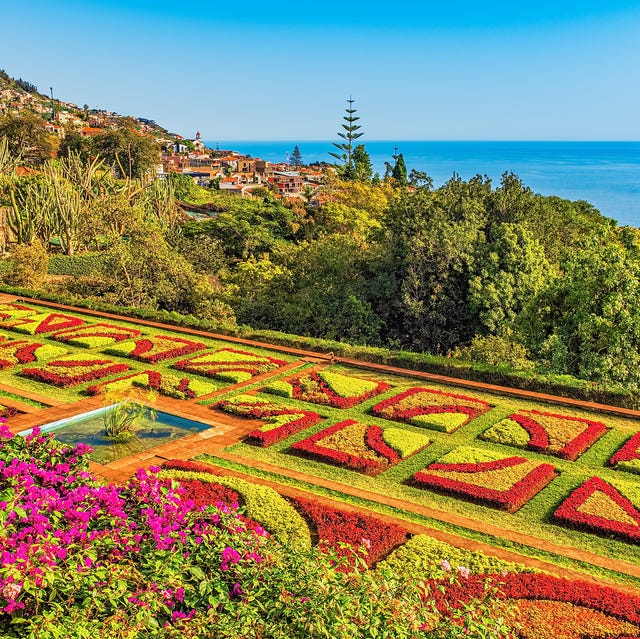
Our top picks include everything from a one-in-a-lifetime journey on the Glacier Express to a trip to Europe's prettiest Christmas market and a visit to Italy 's renowned foodie city of Bologna . And, all of our top picks feature Good Housekeeping Holidays , tailor-made and expertly curated trips that show you the very best of the region with fuss-free travel.
What's more, some of our organised trips included appearances from some very familiar faces , from top chef James Martin to journalist Michael Portillo . They'll join you on land, sea or rail to share their expertise, give you a tour of the local area and host Q&A sessions, demonstrations, activities and talks.
Take a look at our round-up of the best European bucket list trips to book now for 2024.
Sail the Rhine and visit Mainz, Europe's prettiest Christmas markets

Mainz, one of the oldest cities in Germany, and its historic Christmas market on the Domplatz set against a backdrop of the illuminated Mainz Cathedral is one for your bucket list. With sparkling fairy lights, wooden chalets and the scent of mulled wine, roasted almonds and spiced cider filling the air, you'll be in the Christmas spirit in no time.
What's better than a Christmas market trip ? A festive cruise exploring several of Germany's prettiest winter markets. Our Good Housekeeping Holidays trip will have you soaking up the festive fun in Mainz, Frankfurt, Koblenz, Cologne, and Rüdesheim as you cruise the Rhine aboard the beautifully-appointed A-ROSA Aqua. There's a sauna, fitness area, and whirlpool, plus breakfast, lunch and dinner buffets. Our exclusive Christmas cruise is available to book ahead for December 2024.
Explore the Swiss Alps on the Glacier Express

A rail journey through the Alps is a bucket list trip you'll remember for a lifetime, and our exclusive Good Housekeeping Holiday will allow you to experience the beauty of this mountain range on the iconic Glacier Express. You'll enjoy unrivalled views as you journey past snow-capped peaks, dramatic ravines and beautiful villages, plus visit Bern, Lucerne and Interlaken. The Glacier Express is a rail journey you'll never forget. It's been in operation since 1930, and has been renovated with comfortable carriages and panoramic views of the surrounding snow-covered landscapes.
Our exclusive escape includes high-speed trains from London to Interlaken so you don't have to take a flight for this experience. Plus, there's four nights at the Hotel Metropole in Interlaken and a three-course lunch on the train.
FIND OUT MORE
Taste your way around Italy’s gastronomic capital, Bologna
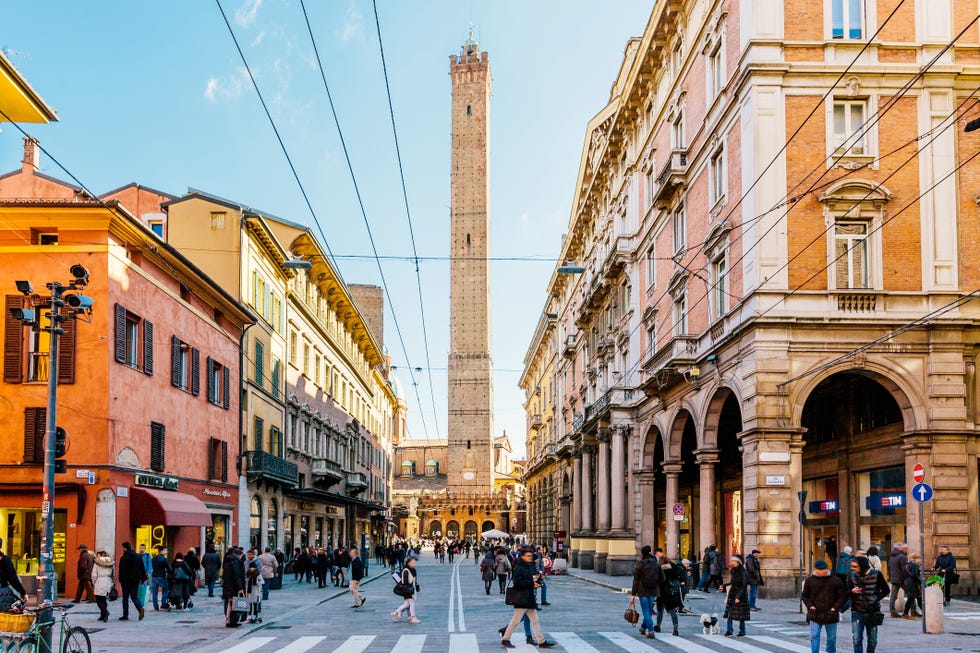
Italy’s gastronomic capital Bologna is a great bucket list destination for the foodies amongst us. Renowned for its homemade pastas, meaty ragùs and myrtle-spiced mortadella sausage, it's known as La Grassa - 'the fat one'.To discover the fascinating gastronomic history and taste some of its world-famous food on a guided tour, join our Good Housekeeping Holidays trip for six-days of tasty experiences. In Bologna, you'll visit a local Parmesan factory, a Balsamic vineyard, and a family-run Parma ham producer.
On this trip, you'll also spend time in Modena where you can discover the city's history at the grand Duomo or the Ferrari and Lamborghini museums. Plus, take part in a cooking class and learn to host like a local. With a variety of 2024 dates available to book now, could Bologna be the European bucket list destination you tick off in the new year?
Discover the beauty and history of Venice over seven sublime nights
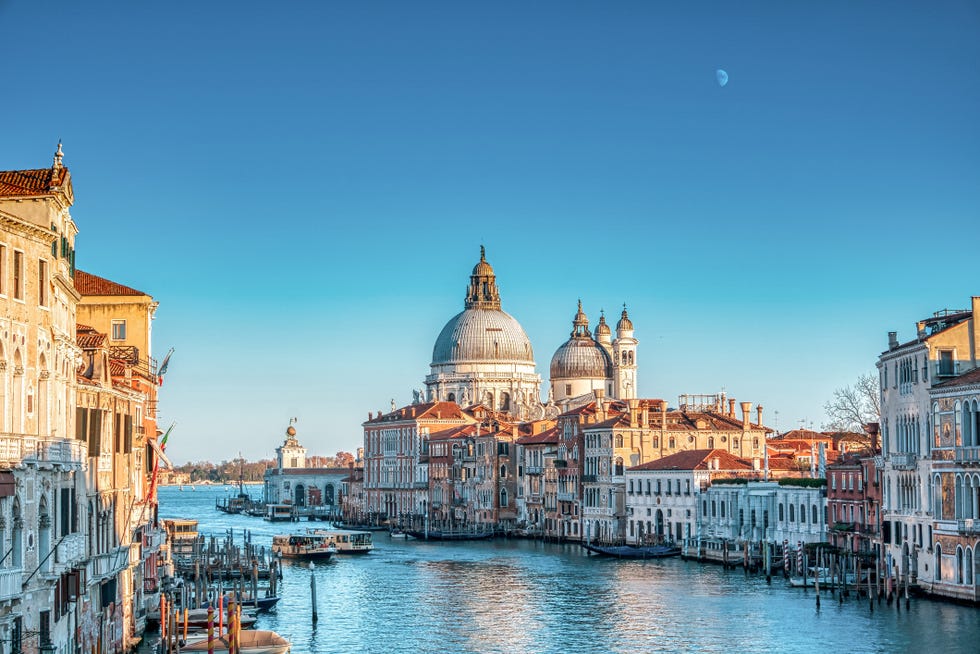
The romantic city of Venice is known and loved for its acclaimed art museums, stunning architecture and colourful history. Alongside the popular tourist spots, from St Mark's Basilica to Doge's Palace, Venice is also packed with hidden gems down the city's slender canals and surrounding islands.
The best way to explore its beauty is on the sleek and stylish, S.S. La Venezia, often described as a floating boutique hotel. You can enjoy a stay on this luxury ship with Good Housekeeping Holidays, where you will be joined by none other than acclaimed chef James Martin. As well as sailing the area and exploring all it has to offer, James will join you on the ship for a talk, Q&A and book signing. What's more, he'll be there to cook a mouthwatering gala dinner for one of your evenings on board.
Visit Madeira’s spectacular Flower Festival
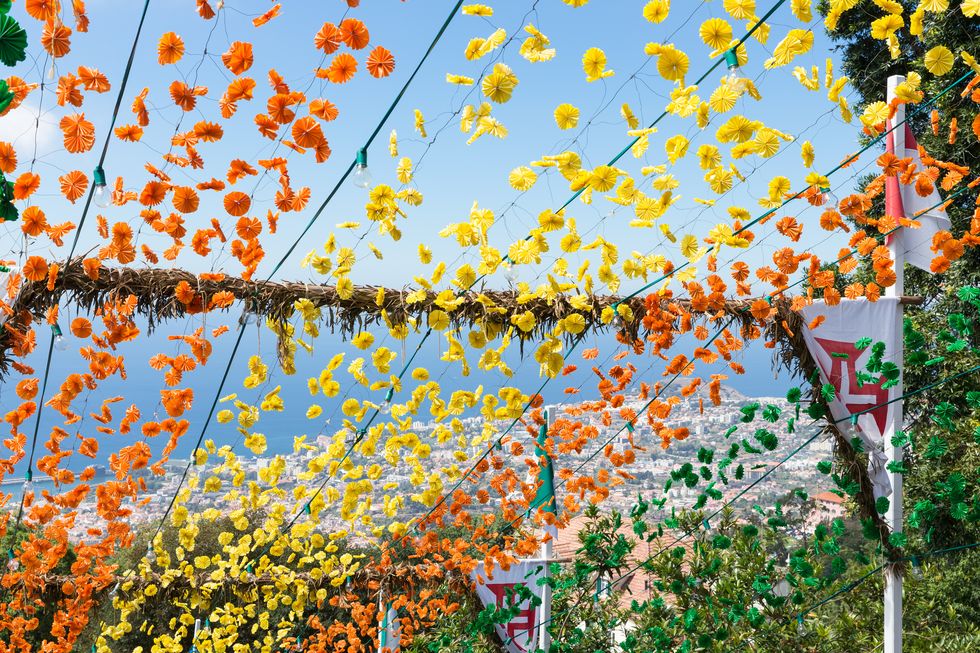
The best time to visit Madeira, also known as the floating garden of the Atlantic, is during its incredible Flower Festival so you can truly soak up the sights, scents and sounds of this special island. The festival is a celebration of spring, and the landscape becomes even more vibrant during the month-long celebration filled with performances and local traditions.
Here at Good Housekeeping , we've got you covered with a tailor-made, eight-day tour of the region during the 2025 Flower Festival so you can see the very best horticultural highlights of the island; from the orchids at Palheiro Gardens to the exquisite colours of the Monte. During this guided tour, you'll also have time to explore the Old Town in Funchal and take in the incredible views of the Ribeiro Frio National Park.
Sail along the Danube and explore Vienna
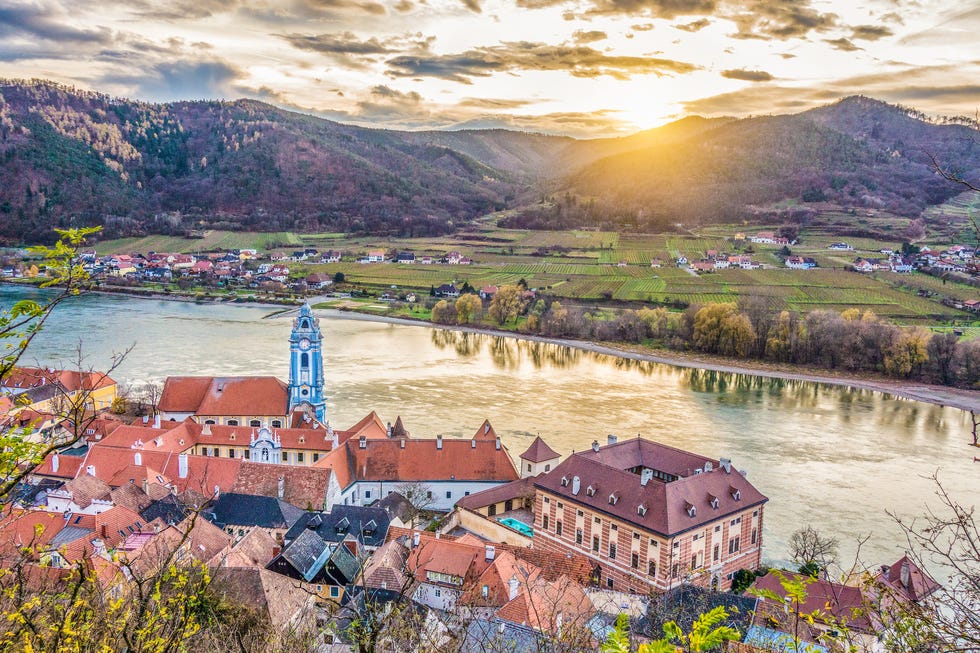
A cruise along the majestic Danube makes a fabulous European holiday for anyone passionate about art, music, and culture. This grand river meanders through Central Europe, where its banks are dotted with charming villages and magnificent cities such as Vienna, Budapest, and Bratislava, each full to the brim with cultural treasures.
Good Housekeeping's eight-day Danube cruise will take you along the mighty river through the Wachau Valley on board Uniworld 's luxury ship, Maria Theresa. Look forward to stops in Budapest, Bratislava and Vienna, discovering the art, architecture and fascinating history of each city with guided tours. As well as these important cities, you'll also stop off in some smaller towns, like pretty Dürnstein, where you can explore the quaint shops and castle ruins.
Hunt for Norway's Northern Lights
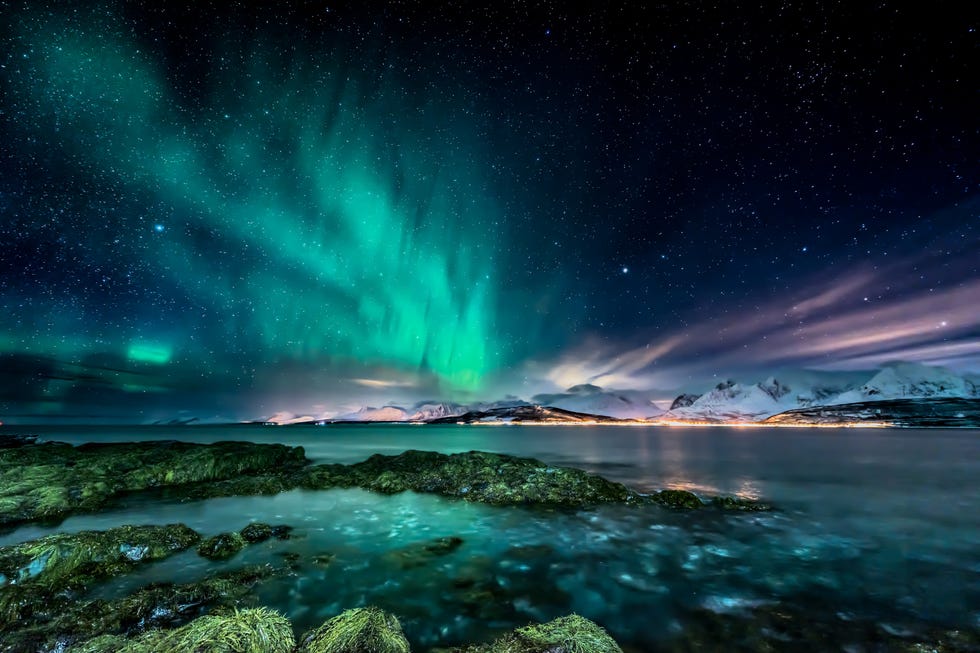
For wild natural scenery and jaw-dropping wildlife in Europe, Norway always delivers. Here adventurous travellers will find breathtaking landscapes dotted with tranquil fjords carved by ancient glaciers and towering, snow-capped mountains. Travellers are also drawn to Norway's icy Arctic region by the chance to see the ethereal Northern Lights dancing in the unpolluted skies. In this northernmost region, at the right time of year, the incredible Aurora is nearly certain to make an appearance. Good Housekeeping has a special winter expedition cruise that will take you through Norway’s fjords and up through the Arctic Circle to spot the Northern Lights
For an extra-special Northern Lights experience, why not join our expedition cruise with expert photographer Doug Allen, who has worked on David Attenborough's Blue Planet? Doug will give you tips on how to capture the best of Norway's landscapes and wildlife on camera and will join you on an Arctic Coastal walk.
Cruise the Douro Valley and taste fine wines
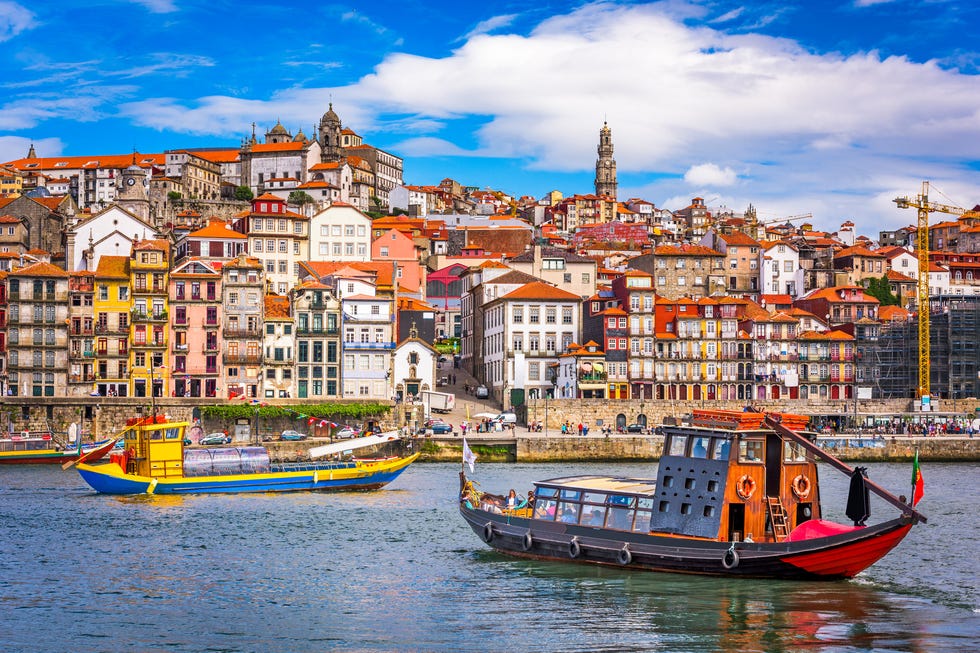
Portugal’s Douro Valley is a wonderfully scenic wine-producing region, where rolling, sun-kissed hills are dotted with historic vineyards and wine estates that have been producing flavoursome Port wines for centuries. It makes an ideal European holiday destination for wine enthusiasts who can visit some of these historic Quintas and learn all about the process of wine production in the valley. Good Housekeeping's eight-day cruise will begin in Portugal's second city of Porto, where you'll have some time to explore the historic old town, a UNESCO world heritage site, before setting sail along the river. You'll also stop at Régua, a town that has produced port wine since the 18th Century and continue onwards to the little town of Pinhão.
Travel from Venice to Paris on the Venice Simplon-Orient-Express

When it comes to European rail adventures, it doesn't get better than a trip on board the Venice Simplon-Orient-Express. This is an exceptionally luxurious train, with meticulously restored 1920s and 1930s carriages, kitted out with plush armchair seating, gleaming polished wood and brass fixtures. seasonal four-course d'hôte menus are served in the dining car, with a sommelier on hand with the perfect pairings.
The train travels several different routes throughout the year, but a favourite is an overnight trip from Venice to Paris. Good Housekeeping is offering a special ride on this route, where you'll be joined by journalist Michael Portillo, who'll give an evening talk and travel with you on the train. Michael is passionate about rail travel, and this will be his first time travelling on the Venice Simplon-Orient-Express.
Explore Transylvania and stay at an Ice Hotel
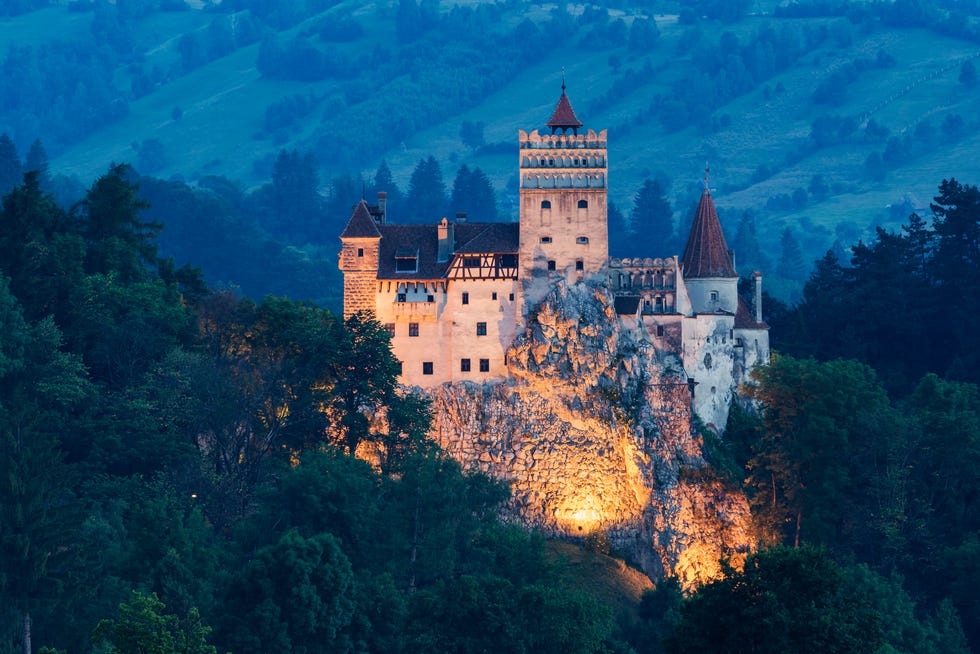
For an unforgettable European trip, explore the gothic region of Transylvania and stay at the iconic Ice Hotel, which is built every year entirely of snow and ice blocks extracted from a glacial lake in the Fagaras Mountains. For an expert-led trip, you can join us on a Good Housekeeping Holidays guided tour through the region as you soak up the history, culture and charm of some of Romania's most picturesque medieval towns.
Tick Bucharest and Brasov off your list, before you head up rugged mountains for a stay at the Ice Hotel where you can go snow rafting or simply enjoy the icy scenery. On your return to Bucharest, you'll also visit Bran Castle, otherwise known as Dracula's Castle - one for the bucket list.
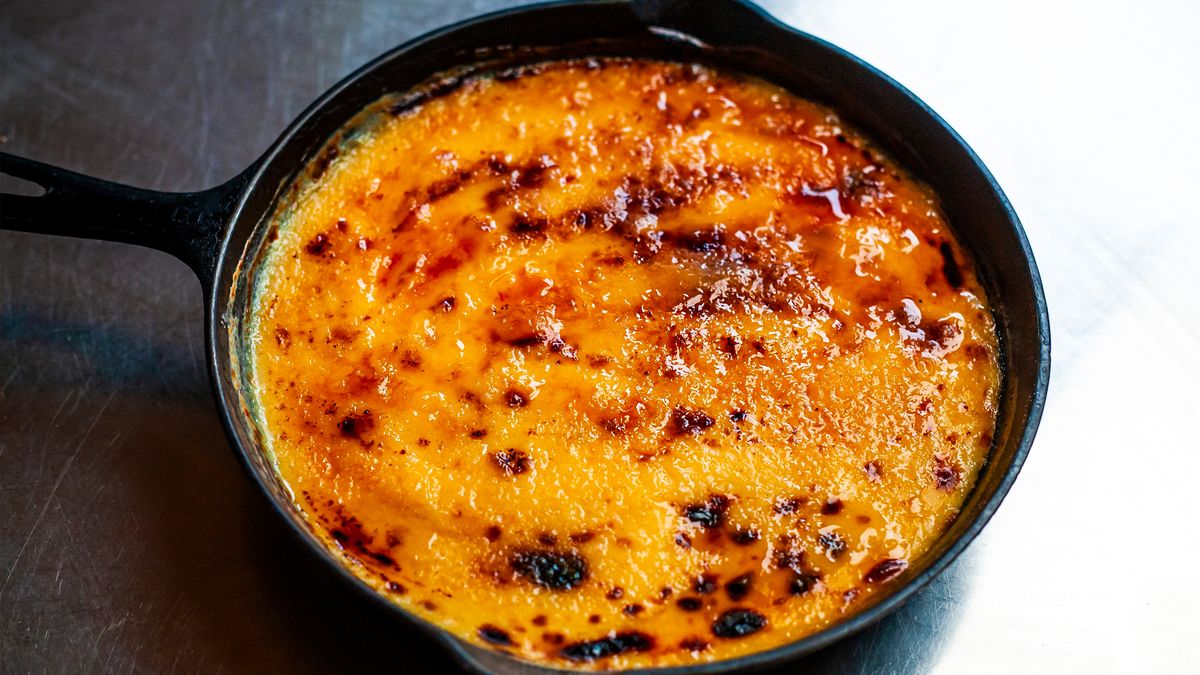
@media(max-width: 64rem){.css-o9j0dn:before{margin-bottom:0.5rem;margin-right:0.625rem;color:#ffffff;width:1.25rem;bottom:-0.2rem;height:1.25rem;content:'_';display:inline-block;position:relative;line-height:1;background-repeat:no-repeat;}.loaded .css-o9j0dn:before{background-image:url(/_assets/design-tokens/goodhousekeeping/static/images/Clover.5c7a1a0.svg);}}@media(min-width: 48rem){.loaded .css-o9j0dn:before{background-image:url(/_assets/design-tokens/goodhousekeeping/static/images/Clover.5c7a1a0.svg);}} Travel

11 of the best mother-daughter holidays for 2024

Greece holiday destinations: Best places for 2024
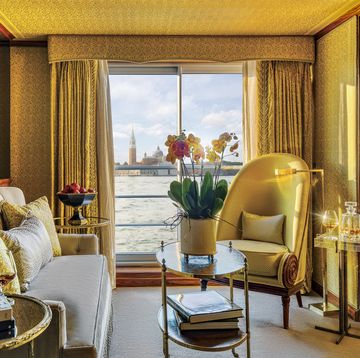
A look inside Uniworld's opulent suites

Why Uniworld is world's best river cruise line

Best Portugal holiday destinations for 2024

10 travel toiletry bags for your next holiday

The best Italian family holidays

The most amazing ways to experience Italy
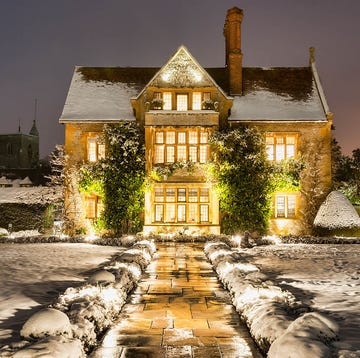
16 best Christmas hotels in the UK
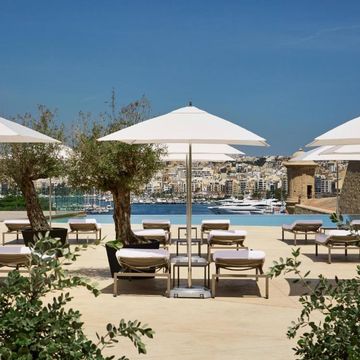
The best hotels in Malta for 2024
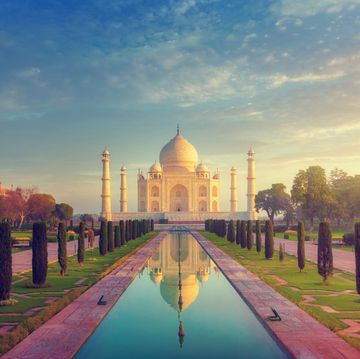
The best long-haul holidays to take this year

This US Town Resembling The Swiss Alps Is Open Only 6 Months A Year
T he Alpine region of Switzerland, known as the Swiss Alps, is a major natural attraction in Europe. The Swiss Alps extend through several countries, and many travelers opt to see the mountain range on a scenic train ride. While this destination offers a unique outdoor experience, it can be expensive and a long journey for some. Visiting the Swiss Alps isn’t a cheap getaway due to travel costs to Europe and Switzerland’s high cost of living.
For those seeking a mountainous escape without the hefty price tag, a destination dupe may be the perfect solution. There’s even a town in the United States that many consider a dupe of the Swiss Alps. This destination, Little Switzerland, is a paradise for nature enthusiasts with plenty to offer travelers, especially hikers .
Where Is the Swiss Alps Dupe?
The Swiss Alps dupe, Little Switzerland, is located in North Carolina. It’s an excellent spot for a nature adventure, about an hour’s drive from Asheville. Nestled in the North Carolina Mountains along the Blue Ridge Parkway, it has a distinct Swiss influence. Travelers will notice that the architectural styles of the buildings, names of businesses, and even some local activities reflect similarities to Switzerland.
Where Travelers Should Stay
The resort in Little Switzerland, established in 1910, offers panoramic views of the surrounding mountains. Switzerland Inn is a local favorite, providing various accommodation options, from suites to rustic cottages with stunning mountain views. Little Switzerland boasts an abundance of restaurants, spas, and pools for travelers to enjoy.
Things to Do
There are many activities for travelers to enjoy during their visit to Little Switzerland. They can explore the natural environment by hiking, taking tours, or simply wandering around the small town. Popular nearby attractions include the Emerald Village (which includes the Mining Museum), Penland School of Craft, and the Museum of North Carolina Minerals. For breathtaking views, travelers can visit Crabtree Falls, Tom’s Creek Falls, and the Orchard at Altapass. Whether or not travelers are into mountain hiking, there is plenty to do during their visit.
The Best Time to Visit for a Rustic European Experience
Little Switzerland is open for about six months of the year, essentially closed during the winter months. From November to April, most resorts and restaurants shut down due to weather conditions, with icy roads halting tourism. The town reopens during the spring, summer, and early fall. While spring and summer bring warmer temperatures and lush greenery, they also come with a bit of rain and fog. Fall is generally considered the best time to visit, offering vibrant foliage and mild weather conditions, making it the perfect time to experience this Swiss Alps dupe.

- Yekaterinburg
- Novosibirsk
- Vladivostok

- Tours to Russia
- Practicalities
- Russia in Lists
Rusmania • Deep into Russia
Out of the Centre
Savvino-storozhevsky monastery and museum.

Zvenigorod's most famous sight is the Savvino-Storozhevsky Monastery, which was founded in 1398 by the monk Savva from the Troitse-Sergieva Lavra, at the invitation and with the support of Prince Yury Dmitrievich of Zvenigorod. Savva was later canonised as St Sabbas (Savva) of Storozhev. The monastery late flourished under the reign of Tsar Alexis, who chose the monastery as his family church and often went on pilgrimage there and made lots of donations to it. Most of the monastery’s buildings date from this time. The monastery is heavily fortified with thick walls and six towers, the most impressive of which is the Krasny Tower which also serves as the eastern entrance. The monastery was closed in 1918 and only reopened in 1995. In 1998 Patriarch Alexius II took part in a service to return the relics of St Sabbas to the monastery. Today the monastery has the status of a stauropegic monastery, which is second in status to a lavra. In addition to being a working monastery, it also holds the Zvenigorod Historical, Architectural and Art Museum.
Belfry and Neighbouring Churches

Located near the main entrance is the monastery's belfry which is perhaps the calling card of the monastery due to its uniqueness. It was built in the 1650s and the St Sergius of Radonezh’s Church was opened on the middle tier in the mid-17th century, although it was originally dedicated to the Trinity. The belfry's 35-tonne Great Bladgovestny Bell fell in 1941 and was only restored and returned in 2003. Attached to the belfry is a large refectory and the Transfiguration Church, both of which were built on the orders of Tsar Alexis in the 1650s.

To the left of the belfry is another, smaller, refectory which is attached to the Trinity Gate-Church, which was also constructed in the 1650s on the orders of Tsar Alexis who made it his own family church. The church is elaborately decorated with colourful trims and underneath the archway is a beautiful 19th century fresco.
Nativity of Virgin Mary Cathedral

The Nativity of Virgin Mary Cathedral is the oldest building in the monastery and among the oldest buildings in the Moscow Region. It was built between 1404 and 1405 during the lifetime of St Sabbas and using the funds of Prince Yury of Zvenigorod. The white-stone cathedral is a standard four-pillar design with a single golden dome. After the death of St Sabbas he was interred in the cathedral and a new altar dedicated to him was added.

Under the reign of Tsar Alexis the cathedral was decorated with frescoes by Stepan Ryazanets, some of which remain today. Tsar Alexis also presented the cathedral with a five-tier iconostasis, the top row of icons have been preserved.
Tsaritsa's Chambers

The Nativity of Virgin Mary Cathedral is located between the Tsaritsa's Chambers of the left and the Palace of Tsar Alexis on the right. The Tsaritsa's Chambers were built in the mid-17th century for the wife of Tsar Alexey - Tsaritsa Maria Ilinichna Miloskavskaya. The design of the building is influenced by the ancient Russian architectural style. Is prettier than the Tsar's chambers opposite, being red in colour with elaborately decorated window frames and entrance.

At present the Tsaritsa's Chambers houses the Zvenigorod Historical, Architectural and Art Museum. Among its displays is an accurate recreation of the interior of a noble lady's chambers including furniture, decorations and a decorated tiled oven, and an exhibition on the history of Zvenigorod and the monastery.
Palace of Tsar Alexis

The Palace of Tsar Alexis was built in the 1650s and is now one of the best surviving examples of non-religious architecture of that era. It was built especially for Tsar Alexis who often visited the monastery on religious pilgrimages. Its most striking feature is its pretty row of nine chimney spouts which resemble towers.

Plan your next trip to Russia
Ready-to-book tours.
Your holiday in Russia starts here. Choose and book your tour to Russia.
The Unique Burial of a Child of Early Scythian Time at the Cemetery of Saryg-Bulun (Tuva)
<< Previous page
Pages: 379-406
In 1988, the Tuvan Archaeological Expedition (led by M. E. Kilunovskaya and V. A. Semenov) discovered a unique burial of the early Iron Age at Saryg-Bulun in Central Tuva. There are two burial mounds of the Aldy-Bel culture dated by 7th century BC. Within the barrows, which adjoined one another, forming a figure-of-eight, there were discovered 7 burials, from which a representative collection of artifacts was recovered. Burial 5 was the most unique, it was found in a coffin made of a larch trunk, with a tightly closed lid. Due to the preservative properties of larch and lack of air access, the coffin contained a well-preserved mummy of a child with an accompanying set of grave goods. The interred individual retained the skin on his face and had a leather headdress painted with red pigment and a coat, sewn from jerboa fur. The coat was belted with a leather belt with bronze ornaments and buckles. Besides that, a leather quiver with arrows with the shafts decorated with painted ornaments, fully preserved battle pick and a bow were buried in the coffin. Unexpectedly, the full-genomic analysis, showed that the individual was female. This fact opens a new aspect in the study of the social history of the Scythian society and perhaps brings us back to the myth of the Amazons, discussed by Herodotus. Of course, this discovery is unique in its preservation for the Scythian culture of Tuva and requires careful study and conservation.
Keywords: Tuva, Early Iron Age, early Scythian period, Aldy-Bel culture, barrow, burial in the coffin, mummy, full genome sequencing, aDNA
Information about authors: Marina Kilunovskaya (Saint Petersburg, Russian Federation). Candidate of Historical Sciences. Institute for the History of Material Culture of the Russian Academy of Sciences. Dvortsovaya Emb., 18, Saint Petersburg, 191186, Russian Federation E-mail: [email protected] Vladimir Semenov (Saint Petersburg, Russian Federation). Candidate of Historical Sciences. Institute for the History of Material Culture of the Russian Academy of Sciences. Dvortsovaya Emb., 18, Saint Petersburg, 191186, Russian Federation E-mail: [email protected] Varvara Busova (Moscow, Russian Federation). (Saint Petersburg, Russian Federation). Institute for the History of Material Culture of the Russian Academy of Sciences. Dvortsovaya Emb., 18, Saint Petersburg, 191186, Russian Federation E-mail: [email protected] Kharis Mustafin (Moscow, Russian Federation). Candidate of Technical Sciences. Moscow Institute of Physics and Technology. Institutsky Lane, 9, Dolgoprudny, 141701, Moscow Oblast, Russian Federation E-mail: [email protected] Irina Alborova (Moscow, Russian Federation). Candidate of Biological Sciences. Moscow Institute of Physics and Technology. Institutsky Lane, 9, Dolgoprudny, 141701, Moscow Oblast, Russian Federation E-mail: [email protected] Alina Matzvai (Moscow, Russian Federation). Moscow Institute of Physics and Technology. Institutsky Lane, 9, Dolgoprudny, 141701, Moscow Oblast, Russian Federation E-mail: [email protected]
Shopping Cart Items: 0 Cart Total: 0,00 € place your order
Price pdf version
student - 2,75 € individual - 3,00 € institutional - 7,00 €

Copyright В© 1999-2022. Stratum Publishing House

IMAGES
VIDEO
COMMENTS
A Bucket-List Itinerary to the Alps. The Alps, straddling Austria, Germany, and Switzerland, have no shortage of places that are likely already on your bucket list—the iconic Matterhorn, the legendary Black Forest, and the picture-perfect village of Hallstatt. There are many other sights that, even if not as well known, should be on your must ...
T he Alps aren't meant to only be enjoyed from the bottom. But if this is your itinerary, odds are you already know that. First up — Zermatt. The city lies at the foot of the most iconic Alpine mountain, the Matterhorn, and it's entirely car-free save for the cable car you can take to the highest mountain station. Take a breather at Zumstein's farm in Gstaad to fuel up for your next ...
General information. World-famous, beautiful, charming and exciting, the Alps often sound more like movie stars than mountains. Austria, France, Germany, Italy, Slovenia and Switzerland each offer an assortment of winter and summer sports, National Parks, and scenic tours on this legendary mountain range arcing 750 miles from Genoa to Vienna.Sample the region's richly flavored mountain ...
What Makes Our Alps Hiking Tours Special? Expert Trip Leaders — Well-trained, experienced mountaineers with a passion for the Alps, our leaders infuse each trip with local knowledge and plenty of fun!We always have two (sometimes even three!) leaders on our Alps trips so you can hike at your own pace, opt for van pick-up, or choose your preferred hiking route (on select trips).
Saint-Gervais, surrounded by Mont Blanc among other towering peaks, is also a top French Alps destination in its own right, with bountiful eateries and plenty of mountain air to inhale. Take a 70 ...
My Way® Alpine Europe in 12 Days. from $3,295 per person + air. This trip delivers endless opportunities for fresh-air thrills — from Austria's Sound of Music country to flower-carpeted meadows in Italy's Dolomites, fairy-tale castles in Germany's Bavaria, cut-glass peaks in Switzerland's Berner Oberland, and spectacular scenery in France's ...
Overview of this Road Trip Itinerary. This 2 week road trip itinerary in the Alps will be a circuit route starting and ending in Munich. This road trip includes stops in 4 different countries -- Austria, Switzerland, Liechtenstein and Germany. In total, there will be about 19 hours of driving split across 10 days.
The Alps are a range of mountains in Europe that stretch from Italy through France, Switzerland, Liechtenstein, Germany, Austria and Slovenia. The range is home to Mont Blanc, which at 4,810m, is the tallest mountain in western Europe. This guide will provide you with important information about the Alps, as well as information on the most ...
More than likely, you've conjured up an image of the Alps, the picture-perfect peaks that carve their way through Switzerland, France, Italy and more, creating some of the most idyllic scenery. Thanks to world-class slopes and a pedigree of famous visitors (Elizabeth Taylor, Robert De Niro and Madonna), postcard-worthy alpine villages like ...
The Alps boast some of the most sublime lakes in the world, including Lake Constance, which spans Germany, Switzerland, and Austria. Along its 167 miles of shoreline, visitors can find both magical castles and charming towns. Of all the Alpine mountains, the Matterhorn stands above the rest thanks to its almost-symmetrical pointed peak that ...
The hills are alive with… well, you know. The Sound of Music's scenic set may epitomize the Alps, but the film only shows one small Austrian area. As Europe's largest and highest mountain range, the Alps span eight countries, including France, Italy, Switzerland, Monaco, Germany, Slovenia, Lichtenstein, and yes, Austria. Here, we've scouted the region's seven most cinematic towns.
These are some suggestions for a round trip road trip across the alps: 4 days exploring the Swiss Alps. (Zurich - Lucerne Lake - Lauterbrunnen - Bern area - Zurich) Map of the Swiss Alps in 4 days - Click to open the image. 7 day across the German speaking countries.
Swiss Alps. Let's face it: Travelers don't flock to Switzerland for its cities. Spend most of your time getting high in the Alps. Frolic and hike high above the stress and clouds of the real world. Take a vacation from your busy vacation. Recharge your touristic batteries high in the hills, where distant avalanches, cowbells, the fluff of a ...
Enjoy 11 relaxed days of picturesque scenery, breathtaking views, romantic towns, eternal ice and snow, rural villages and historic buildings. Visit Zurich, Lucerne, Interlaken, Geneva and many other highlights. view trip ⤍. 7 days / from2725 USD. Lakes and mountains for the whole family in Italy & Switzerland.
Interests Hiking and trekking Cultural and gourmet Ski and winter. Email Address *. Alpenwild offers exceptional hiking and walking vacations in the Alps including treks on the Haute Route. Switzerland travel, culinary, and rail tours.
1. Ljubljana. Best for spectacular architecture. All roads in Slovenia lead to the capital, and not just because it's situated in the center of the country. Ljubljana buzzes with active, cycle-riding residents, alternative culture and eclectic restaurants, museums and cafes. However, the setting alone is worth a visit - every square ...
Travel can be complicated. And expensive. At least that's how we felt in 2016 with 2 giant backpacks and 1-way tickets to Europe. Now, we help you travel with confidence! That means minimizing your planning time, maximizing your experiences, and stretching your budget! MEET US
Day 1: Cycling & city life. Morning. To get a sense of the scale and beauty of the Annecy region, start with a cycling tour of the lake. Pack chocolate flapjacks from retro-style cafe Le Bar Roux ...
Day 1 - Depart the U.S. for Zurich, Switzerland. Day 2 - Zurich and Lucerne. Arrive in Zurich and transfer by coach to Lucerne. After checking in to your hotel, meet for a briefing about the journey ahead, followed by dinner at a local restaurant. (D) Swiss-Chalet Merlischachen. Day 3 - Lucerne and Mt. Pilatus.
On this tour, you'll ascend iconic climbs such as Col de la Colombière, Col du Glandon, Col de la Croix de Fer, and the legendary Alpe d'Huez. Revel in the breathtaking beauty of Lake Annecy and the awe-inspiring views of Mont Blanc. Each day concludes with the delights of Savoyard cuisine and the comfort of meticulously selected hotels ...
The Alps are the most extensive and highest mountain range in Europe covering 1,200 kilometers. There are eight countries in Europe that have mountains in this range - France, Switzerland, Monaco, Italy, Liechtenstein, Austria, Germany, and Slovenia. This stretches from Nice in France all the way to Vienna in Austria.
A rail journey through the Alps is a bucket list trip you'll remember for a lifetime, and our exclusive Good Housekeeping Holiday will allow you to experience the beauty of this mountain range on ...
Published on Nov 15, 2023 at 2:07 PM. Photo Courtesy of Sylvain Terret; Design by Maitane Romagosa for Thrillist. Sylvain Terret doesn't have a pet name for his 2004 Nissan Patrol Y61, but damn ...
The Alpine region of Switzerland, known as the Swiss Alps, is a major natural attraction in Europe. The Swiss Alps extend through several countries, and many travelers opt to see the mountain ...
map to travel: Medvedkovo. Wikipedia. Photo: Antares 610, CC BY 3.0. Notable Places in the Area. Babushkinskaya. Metro station Photo: Aborisov, Public domain. Babushkinskaya is a Moscow Metro station in the Babushkinsky District, North-Eastern Administrative Okrug, Moscow. Sviblovo.
In 1938, it was granted town status. [citation needed]Administrative and municipal status. Within the framework of administrative divisions, it is incorporated as Elektrostal City Under Oblast Jurisdiction—an administrative unit with the status equal to that of the districts. As a municipal division, Elektrostal City Under Oblast Jurisdiction is incorporated as Elektrostal Urban Okrug.
Zvenigorod's most famous sight is the Savvino-Storozhevsky Monastery, which was founded in 1398 by the monk Savva from the Troitse-Sergieva Lavra, at the invitation and with the support of Prince Yury Dmitrievich of Zvenigorod. Savva was later canonised as St Sabbas (Savva) of Storozhev. The monastery late flourished under the reign of Tsar ...
Burial 5 was the most unique, it was found in a coffin made of a larch trunk, with a tightly closed lid. Due to the preservative properties of larch and lack of air access, the coffin contained a well-preserved mummy of a child with an accompanying set of grave goods. The interred individual retained the skin on his face and had a leather ...